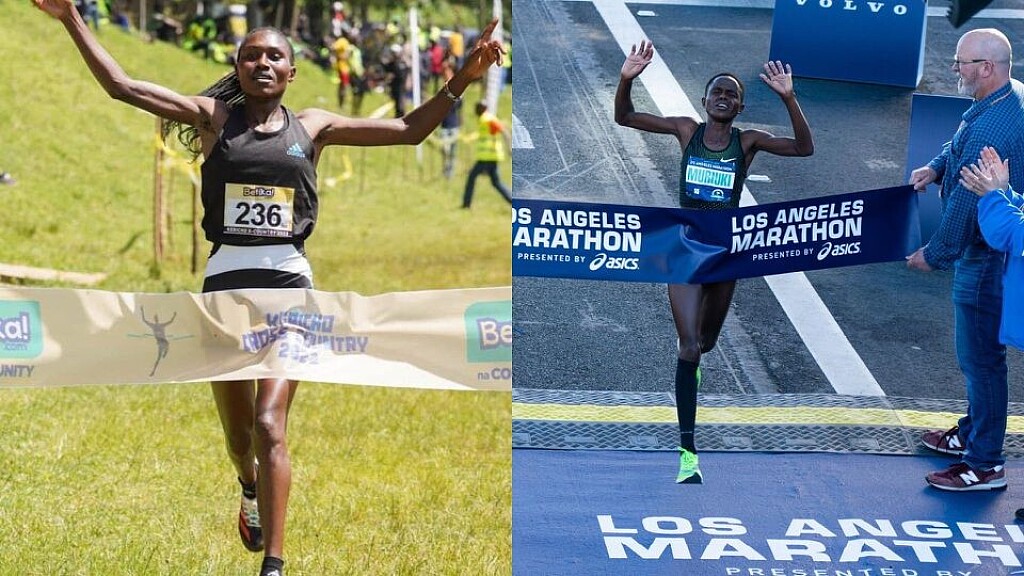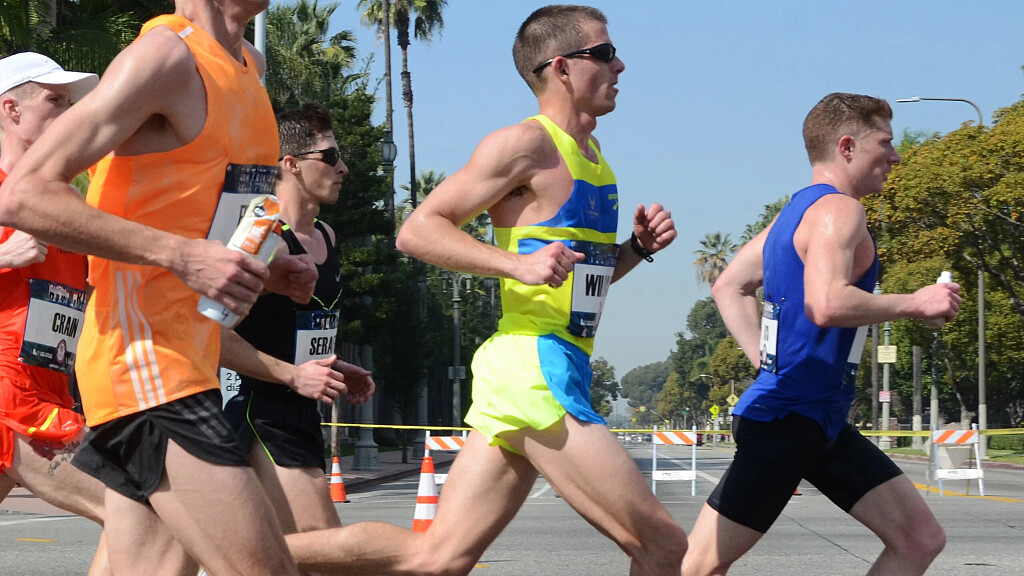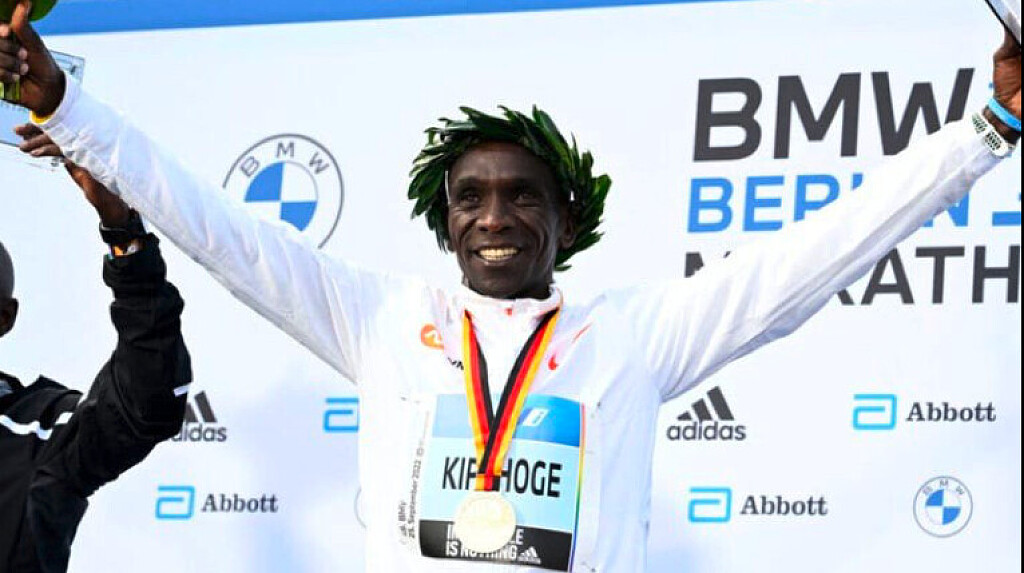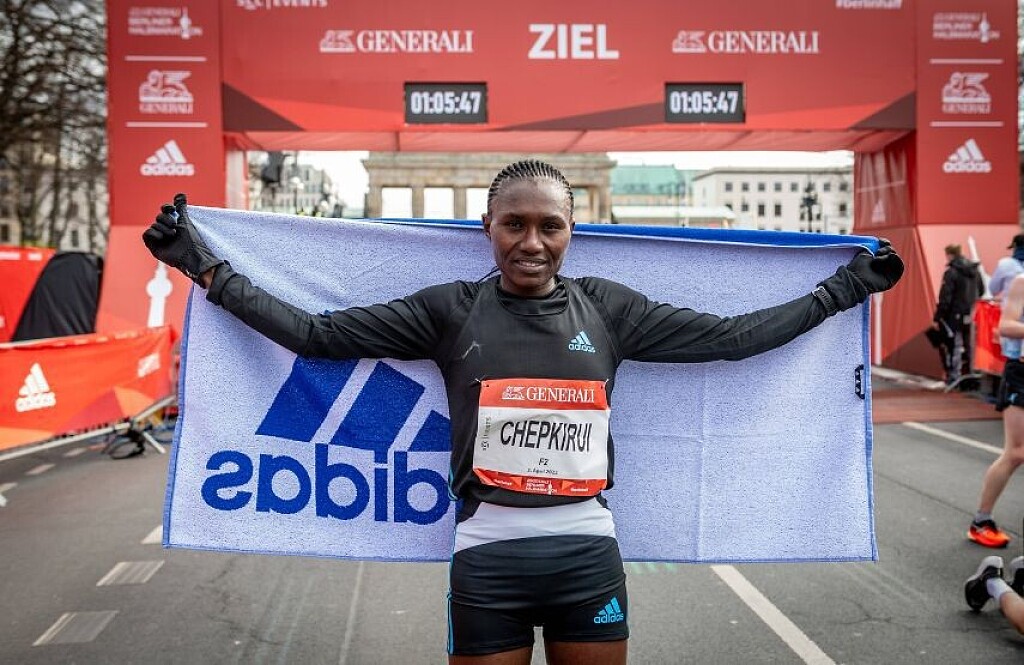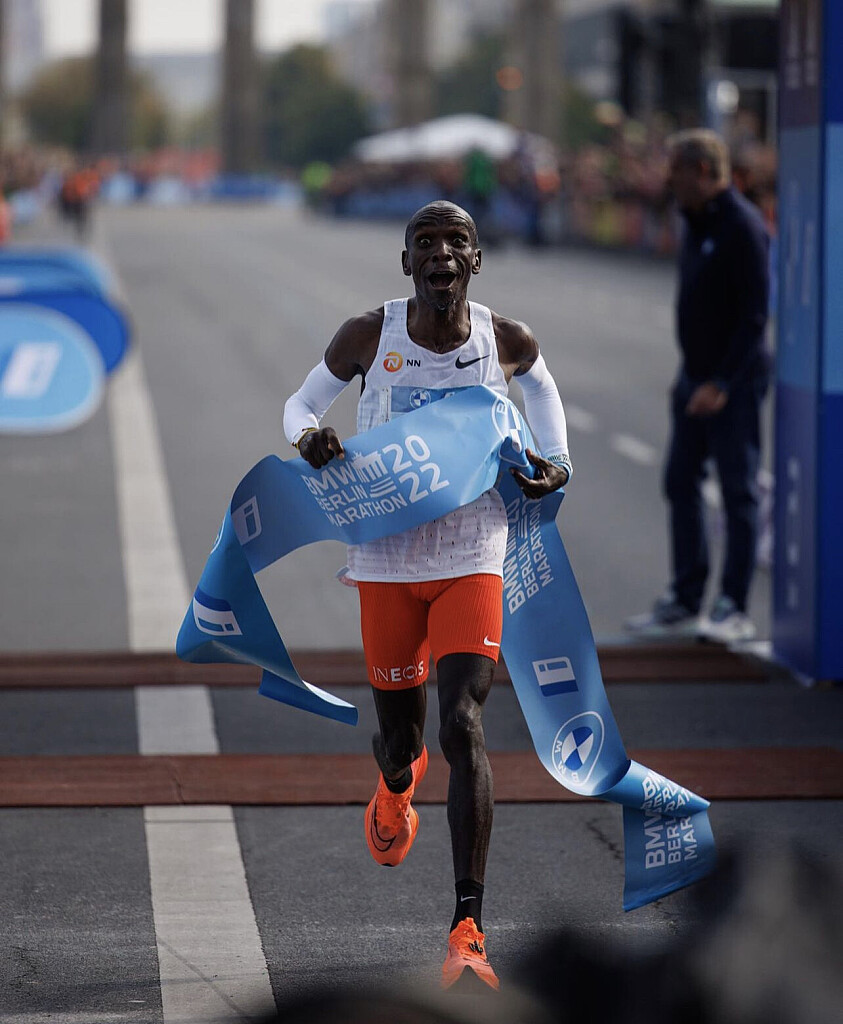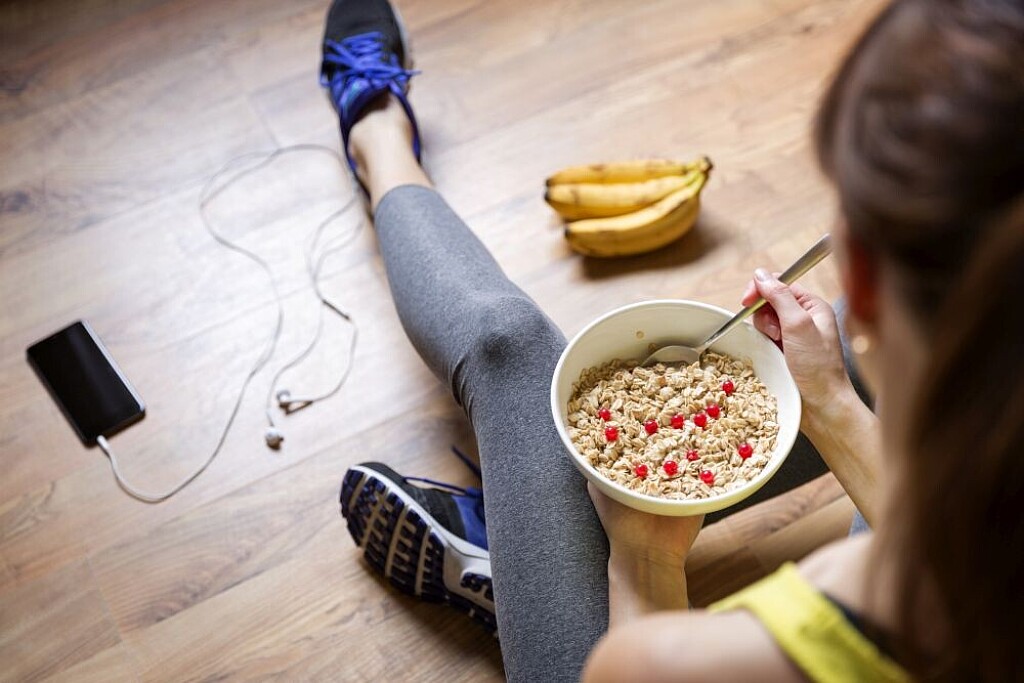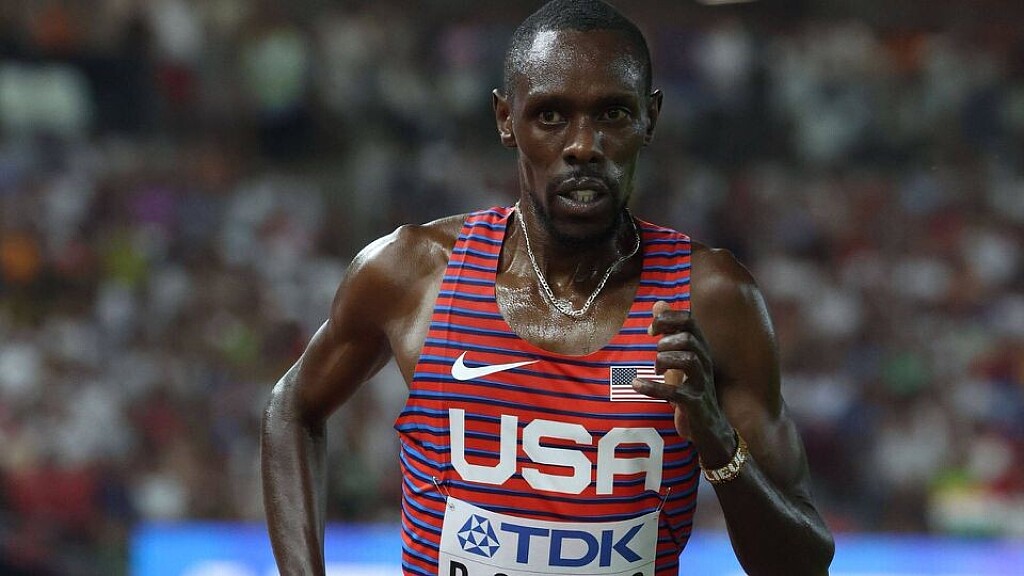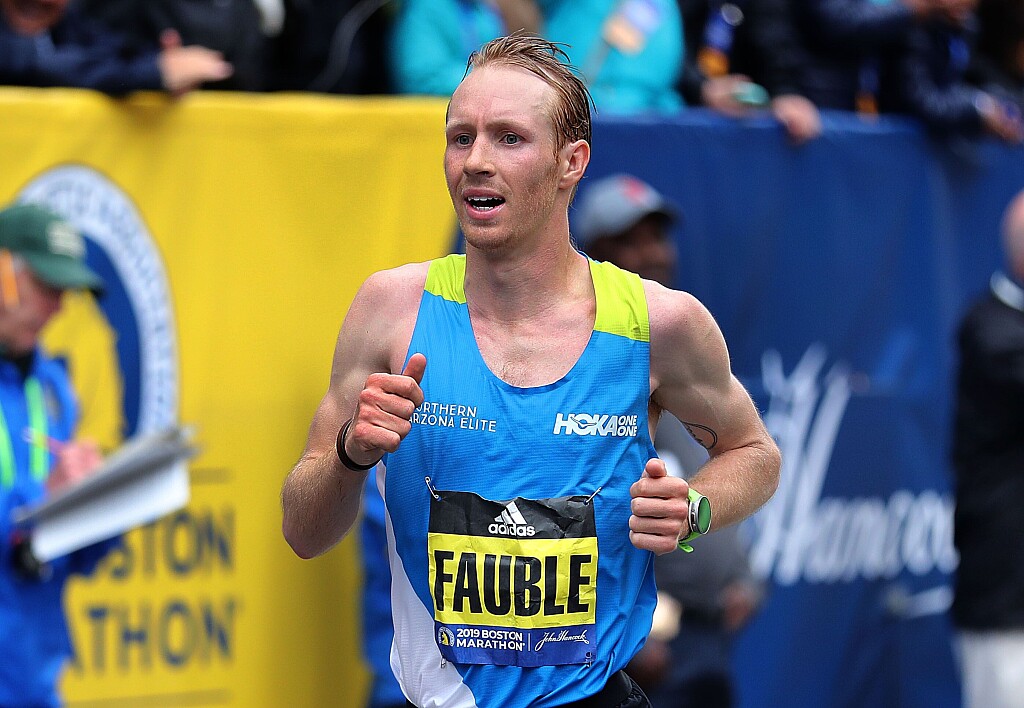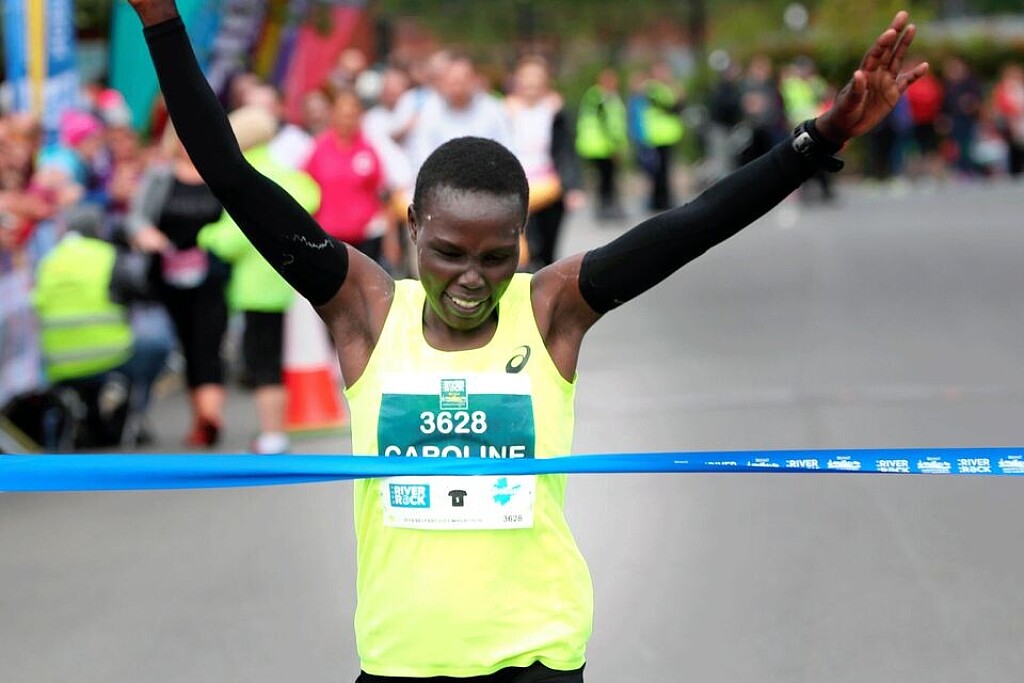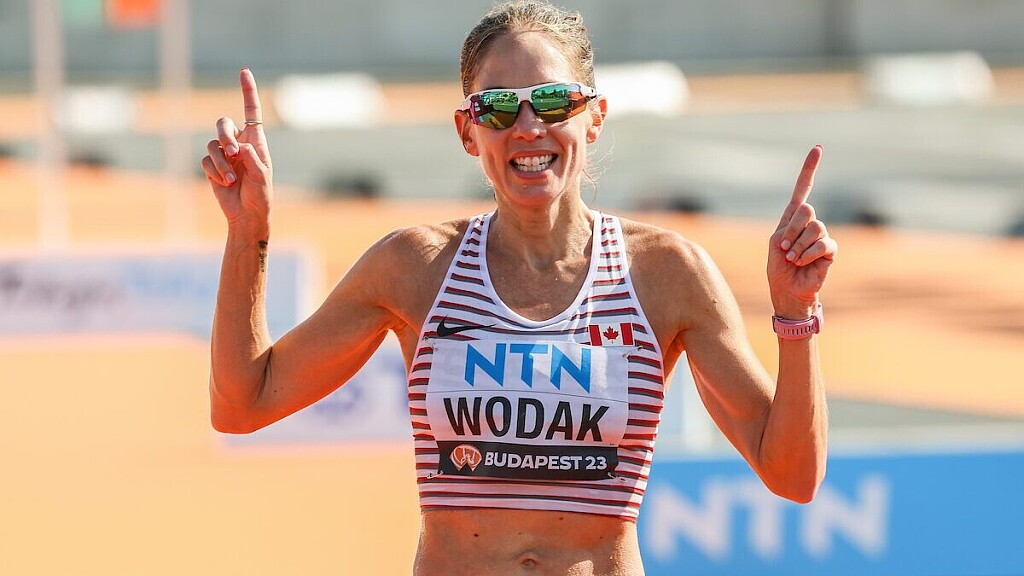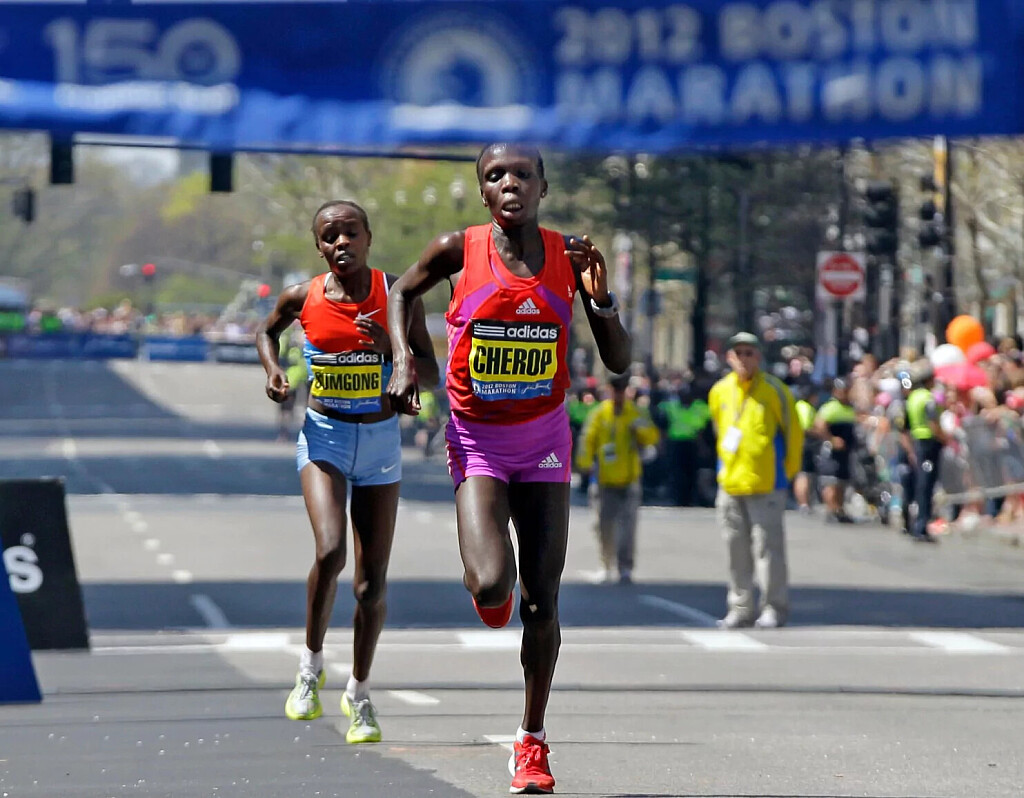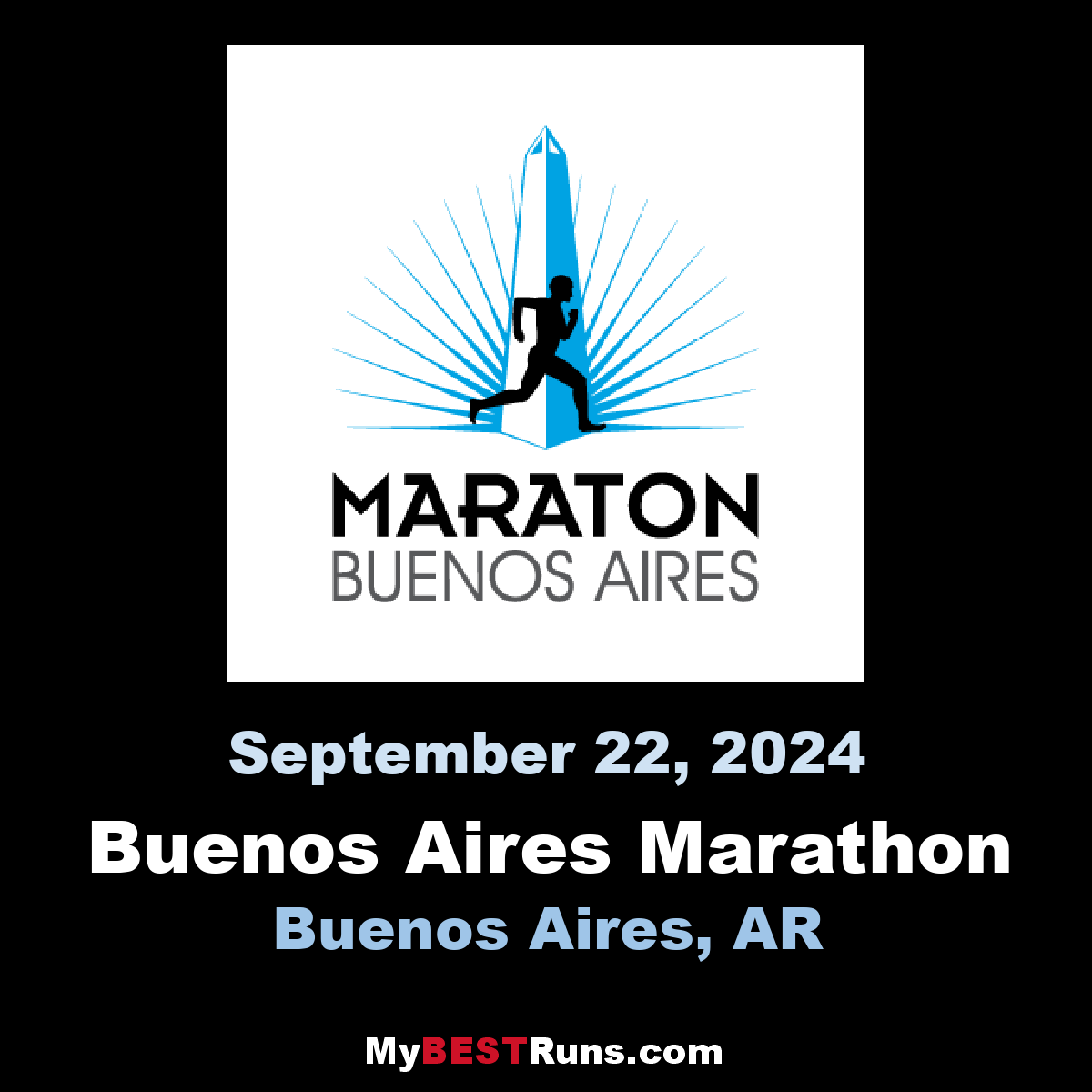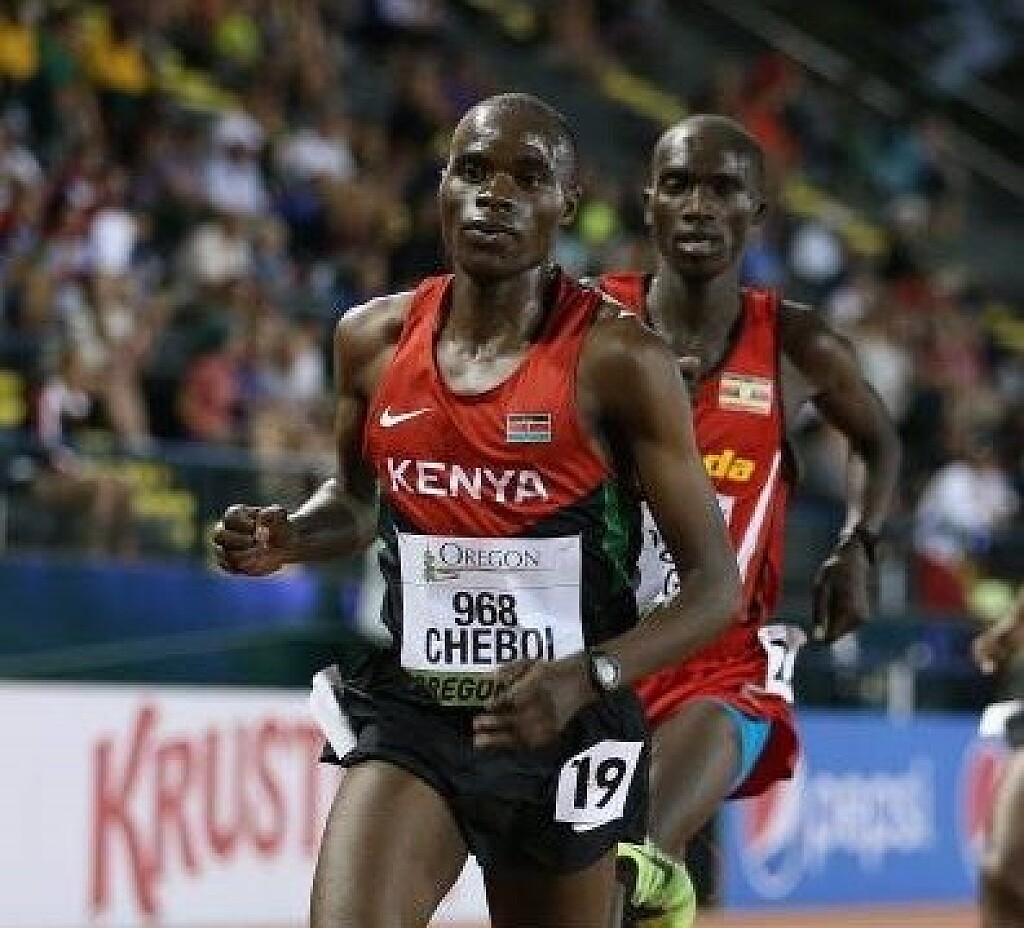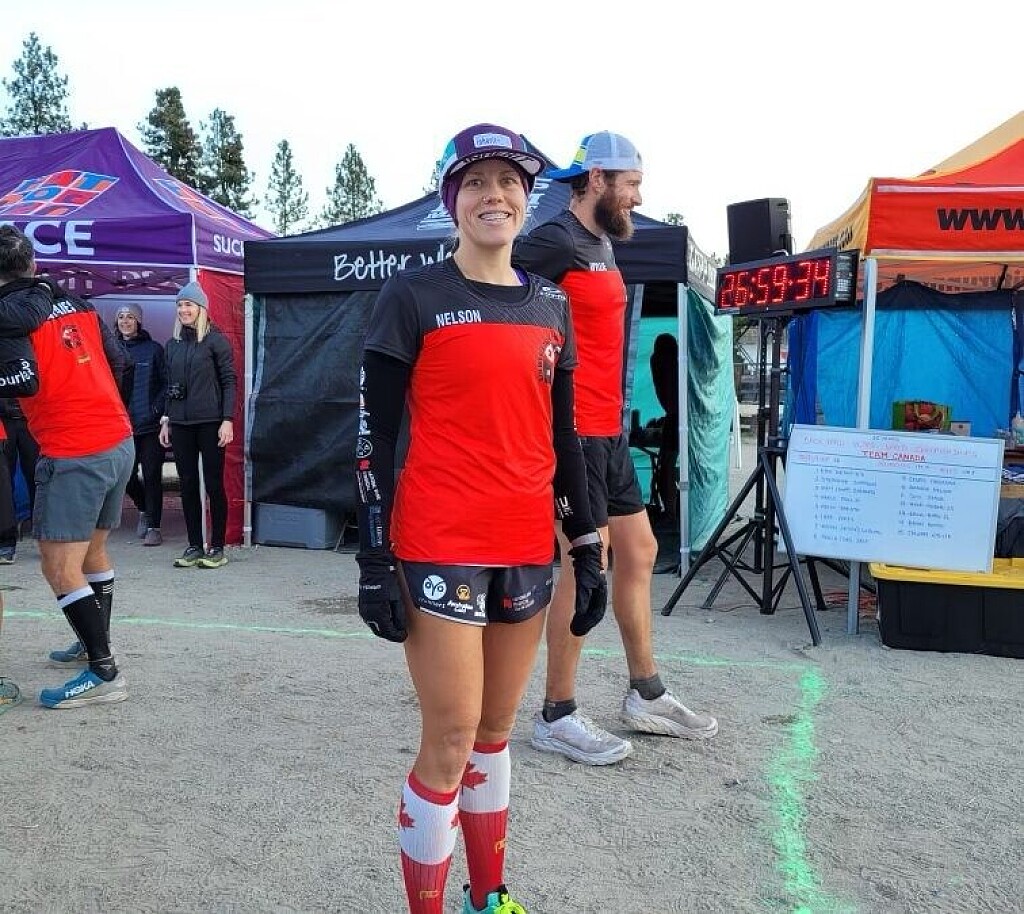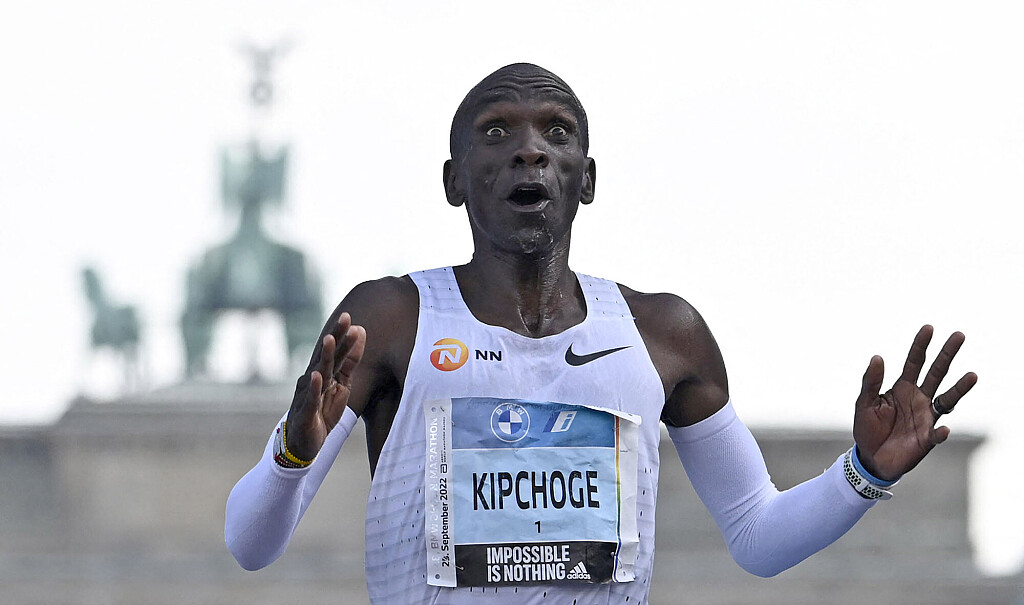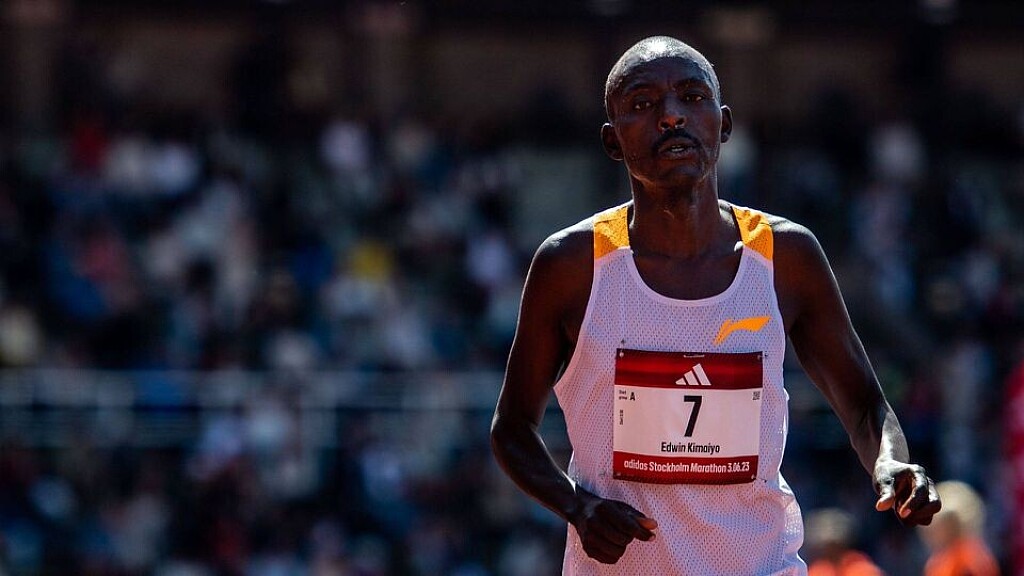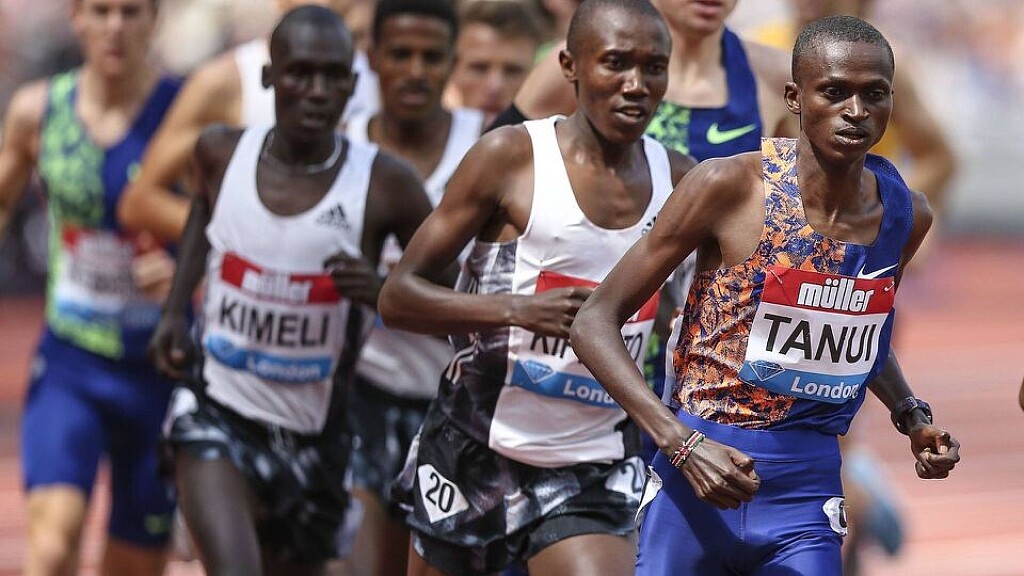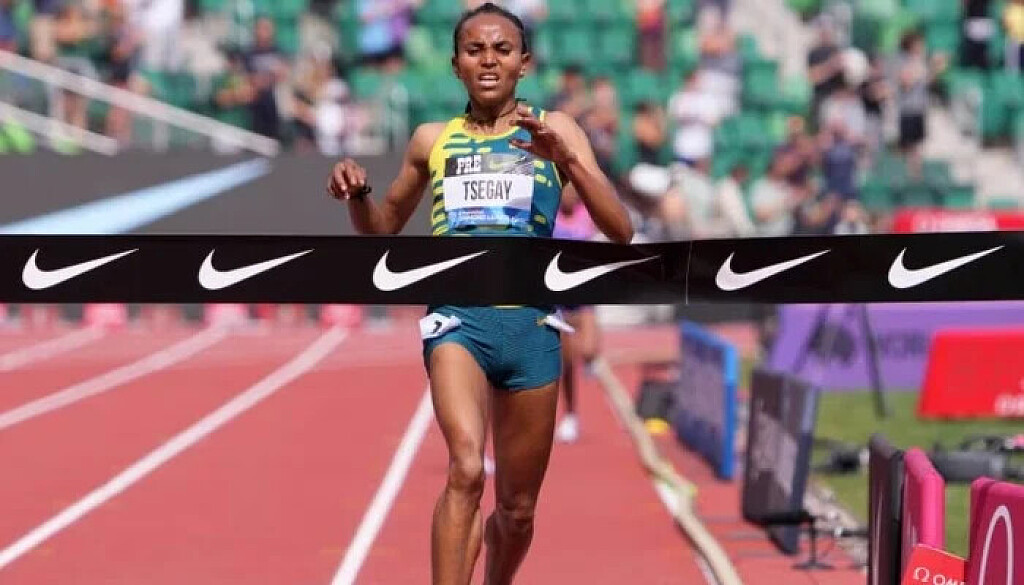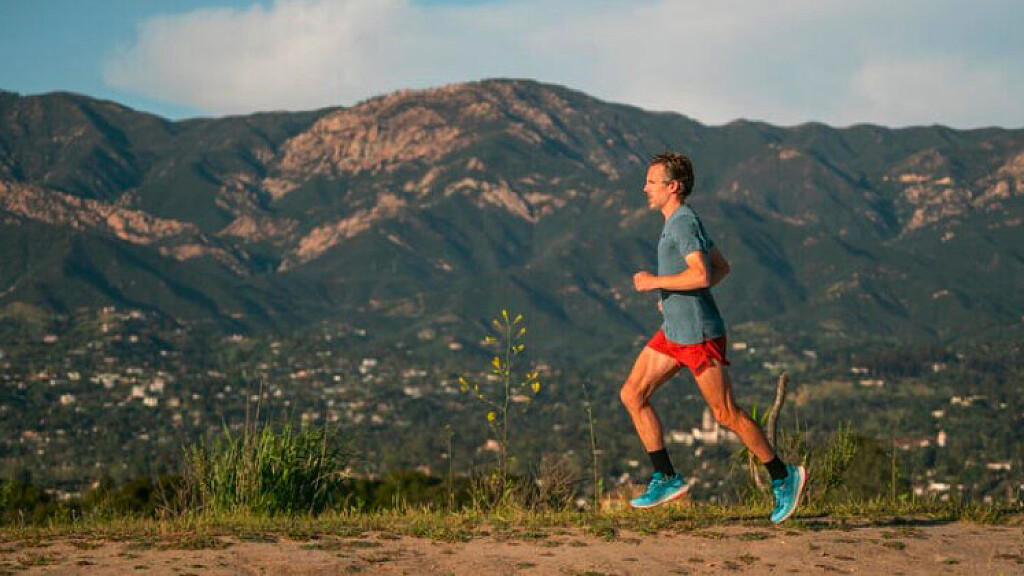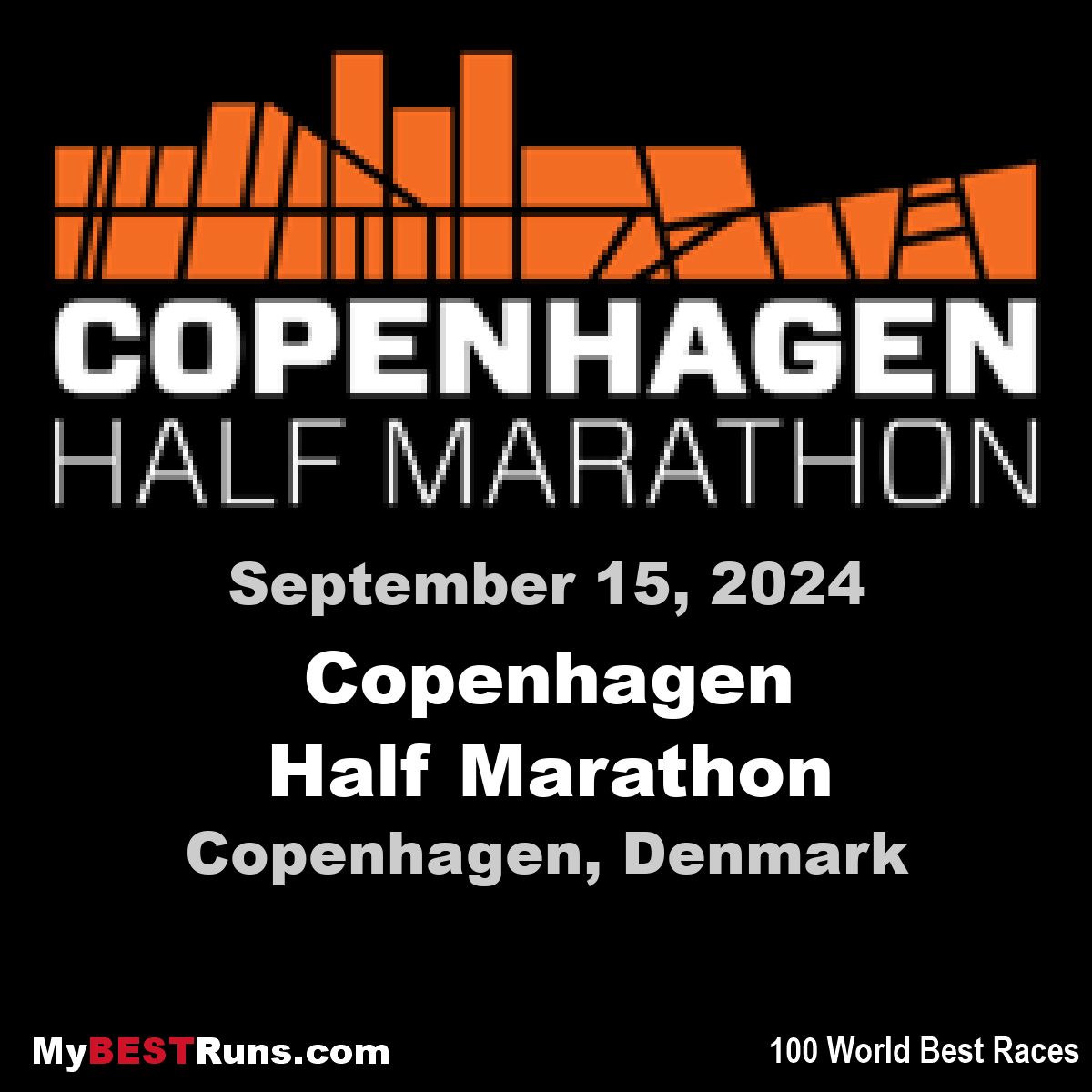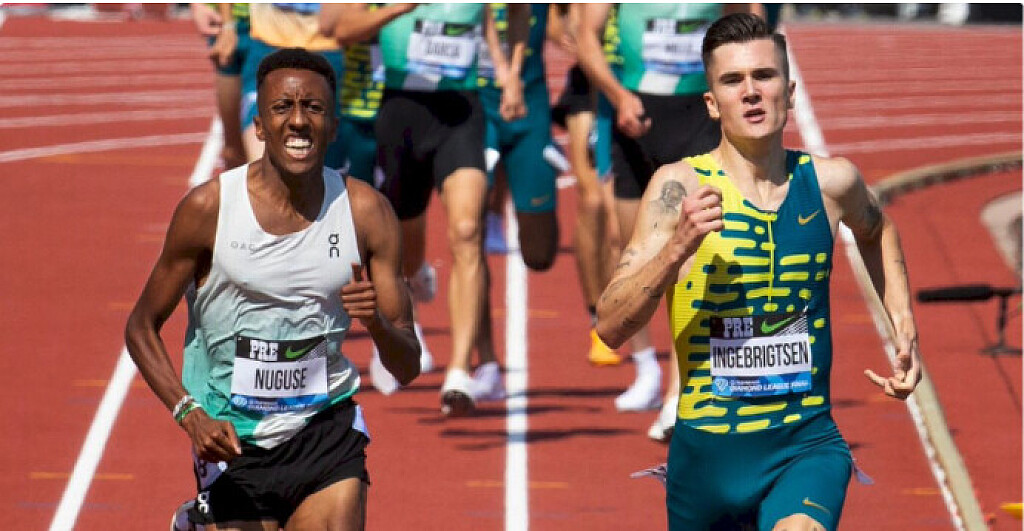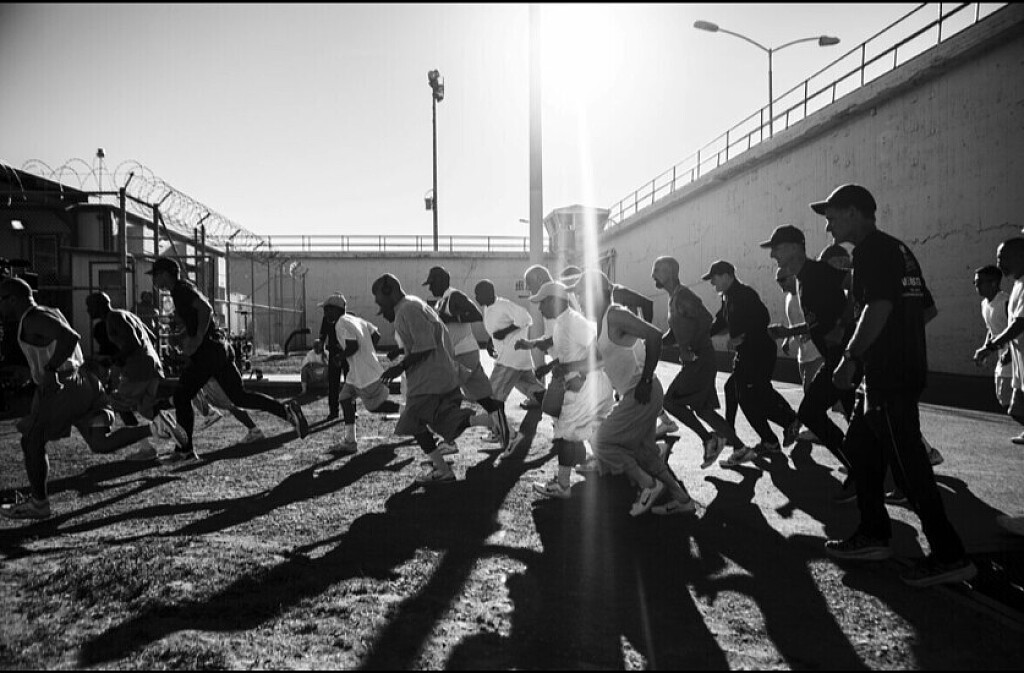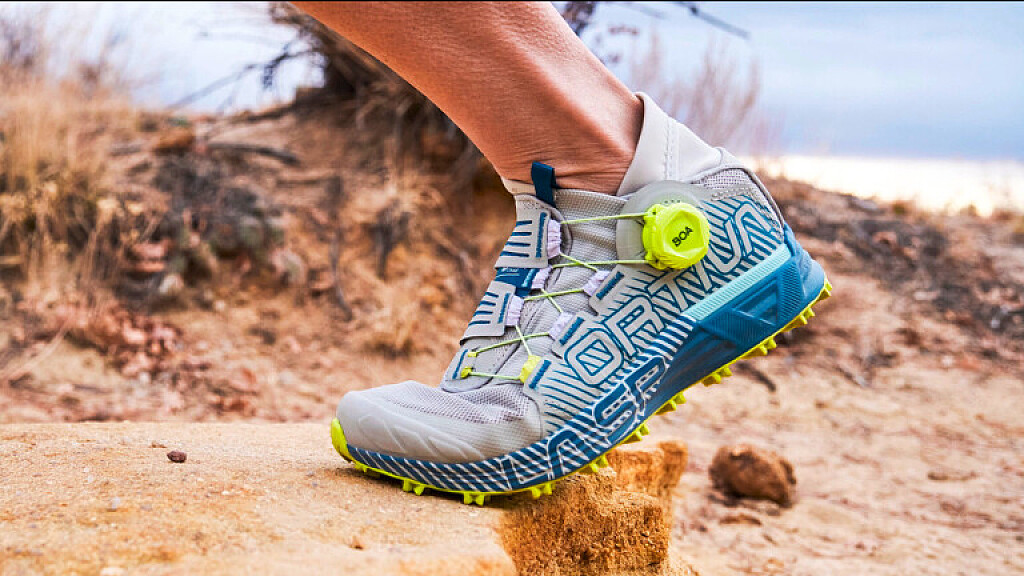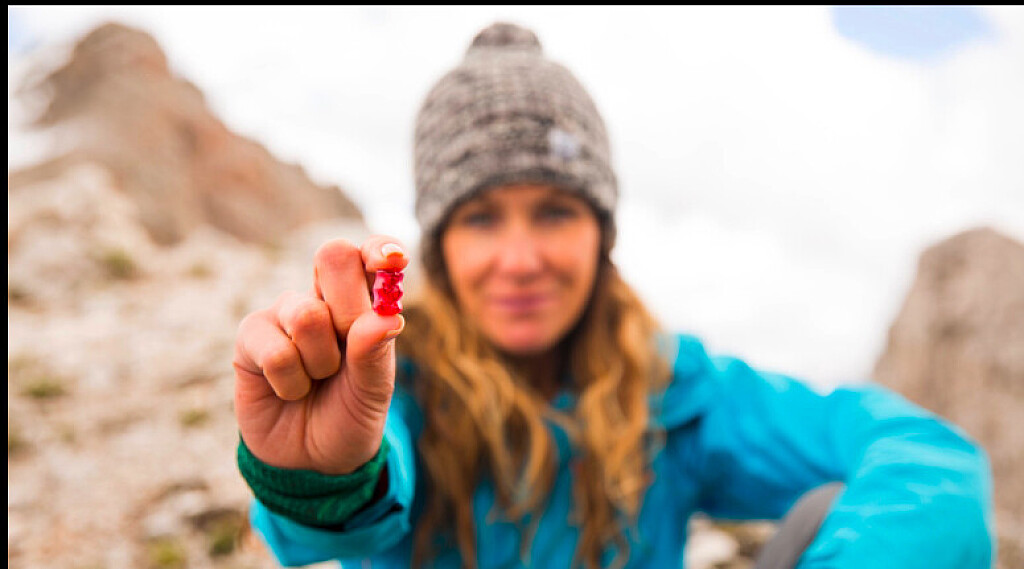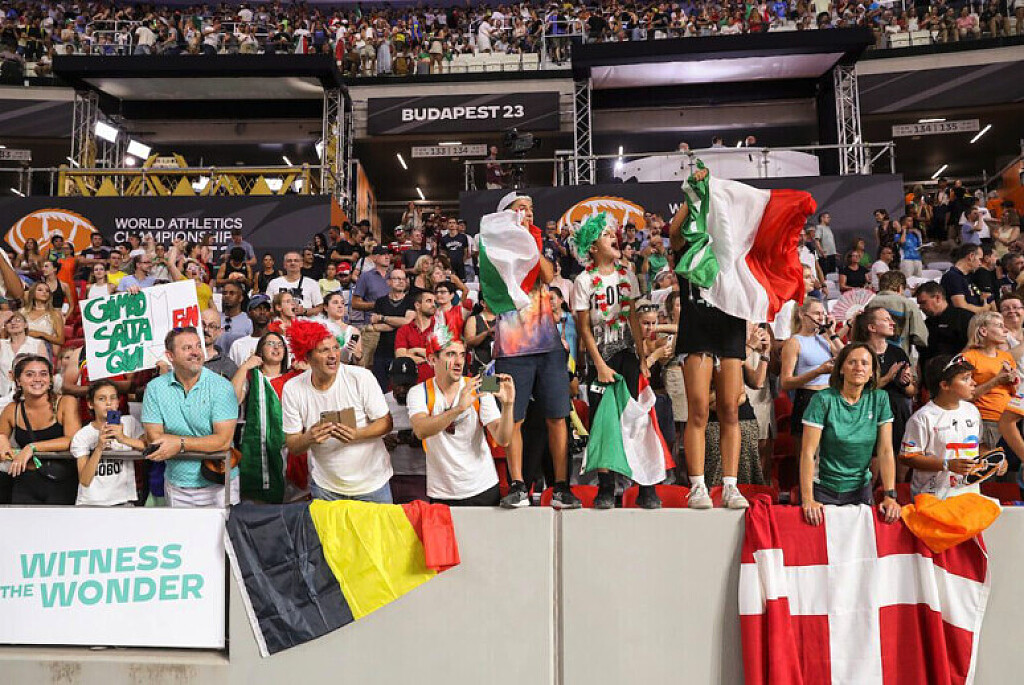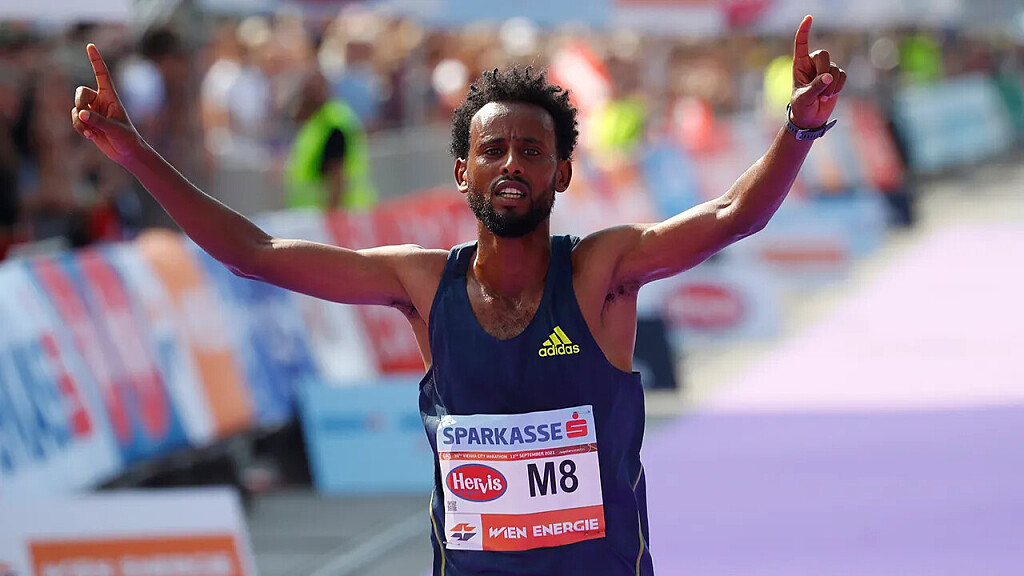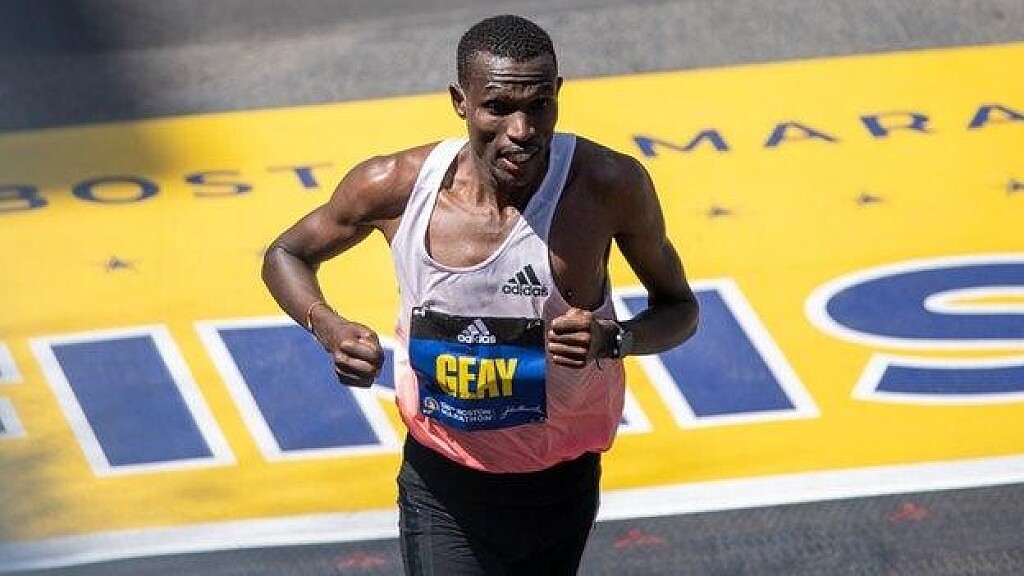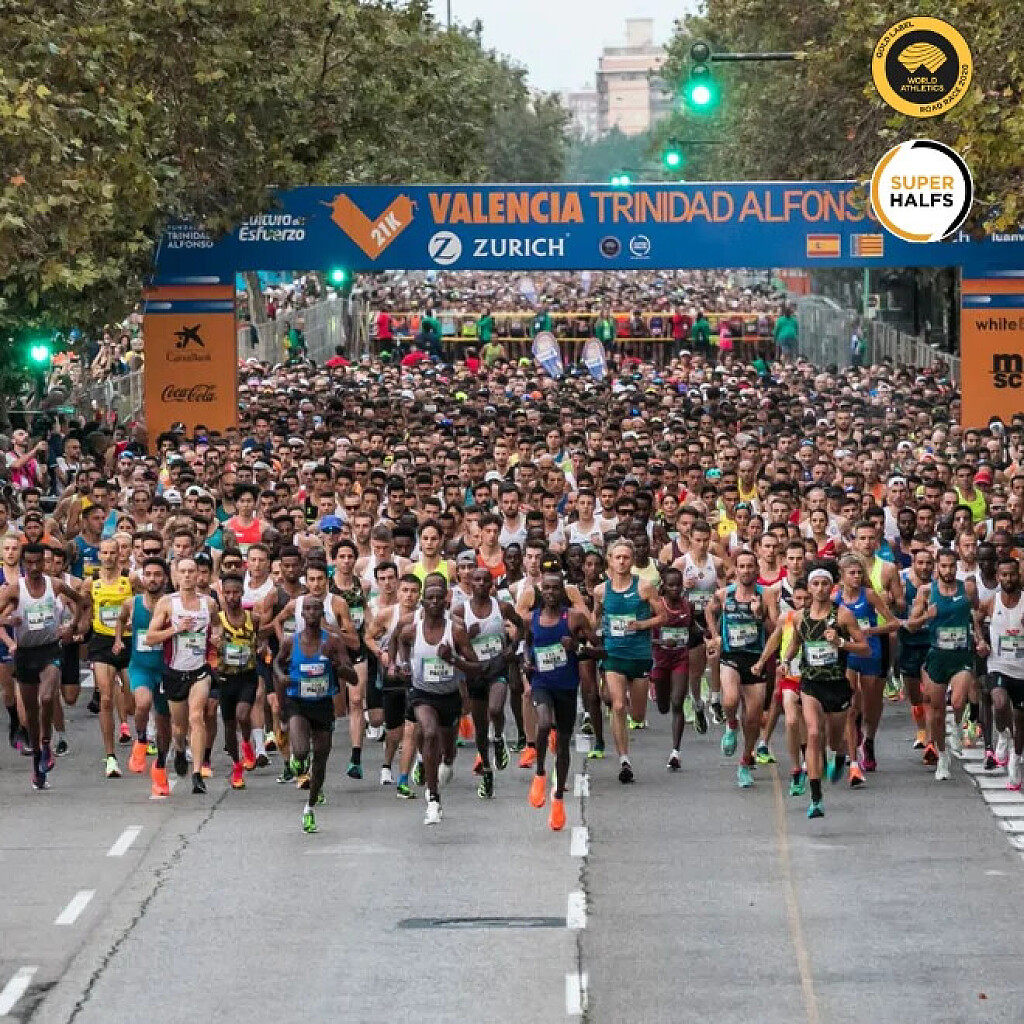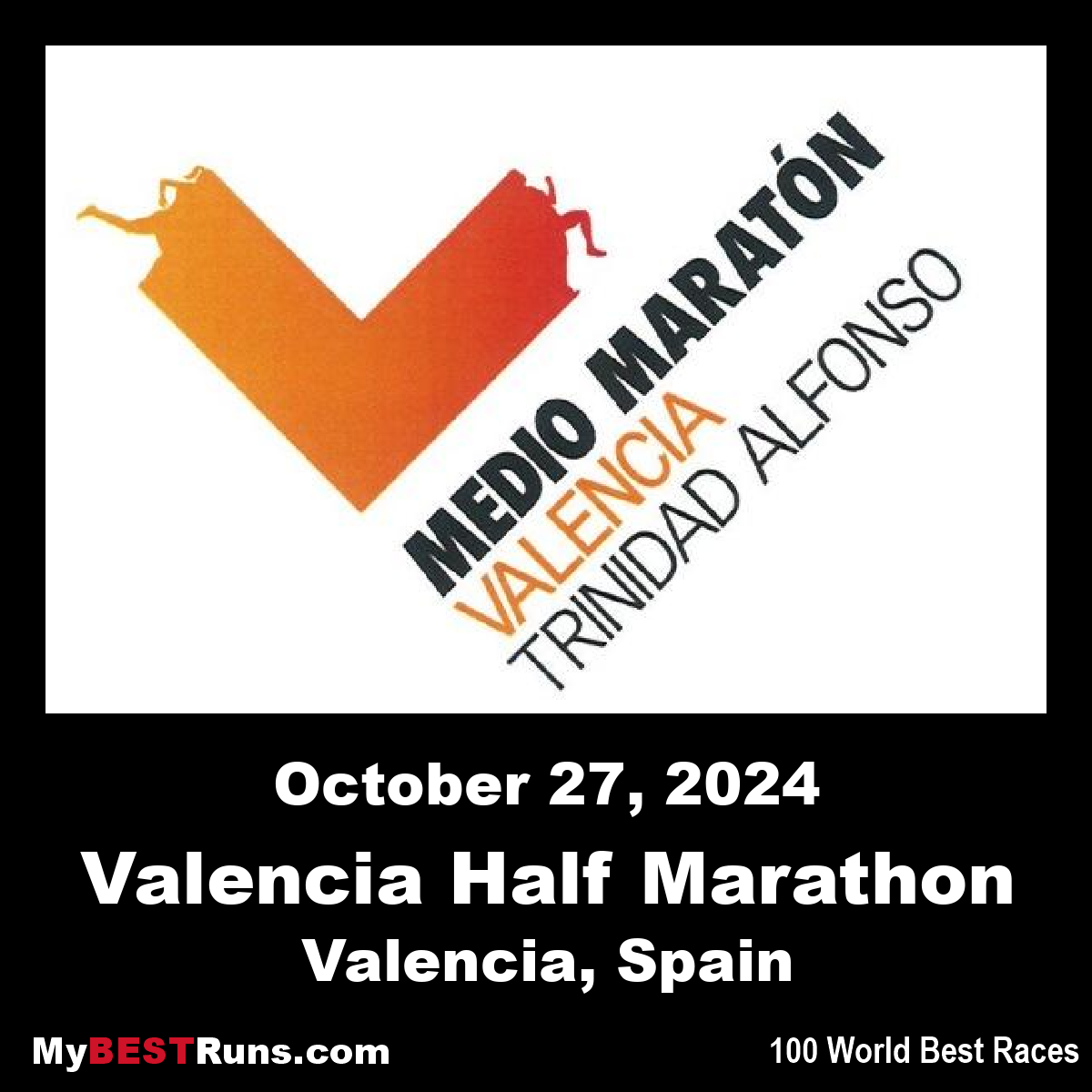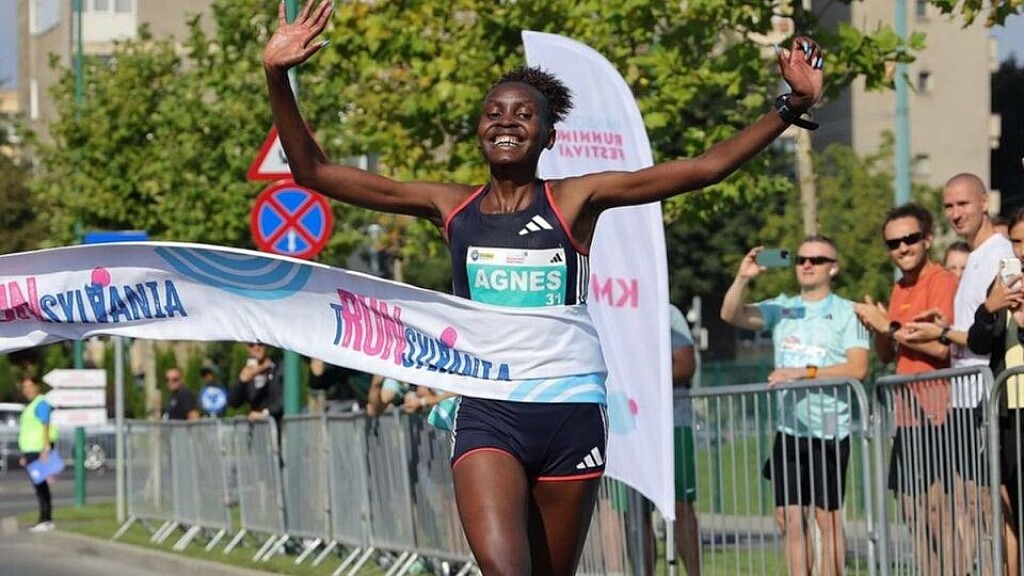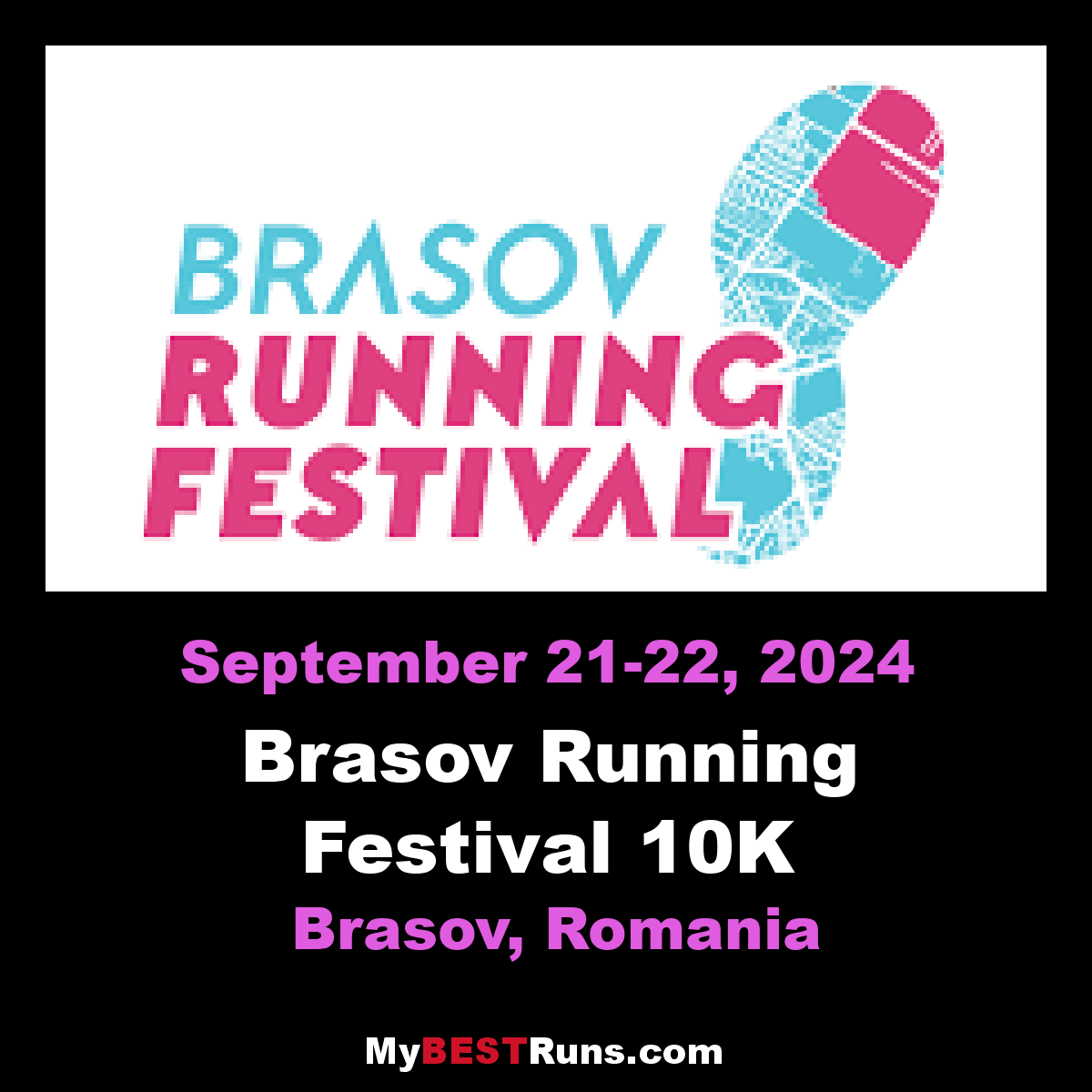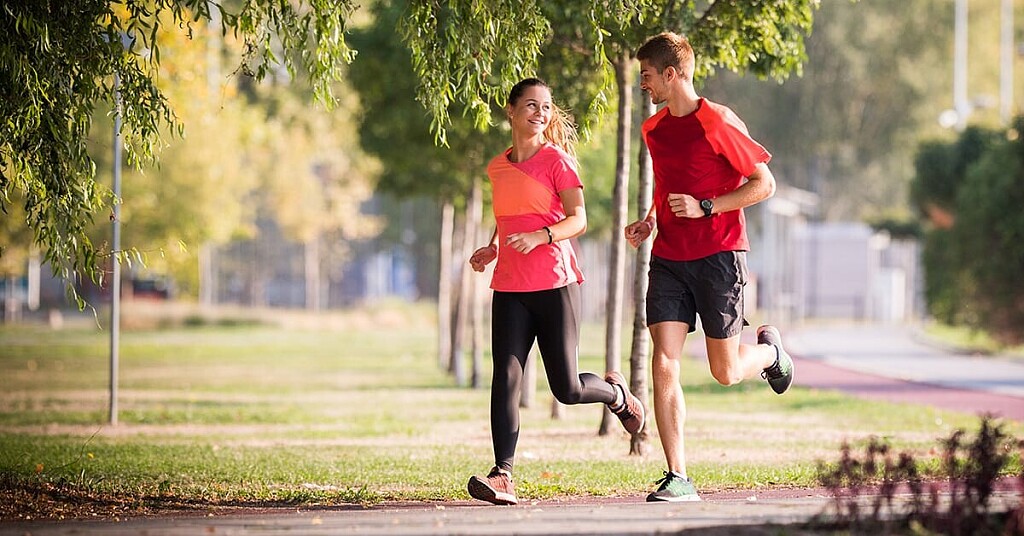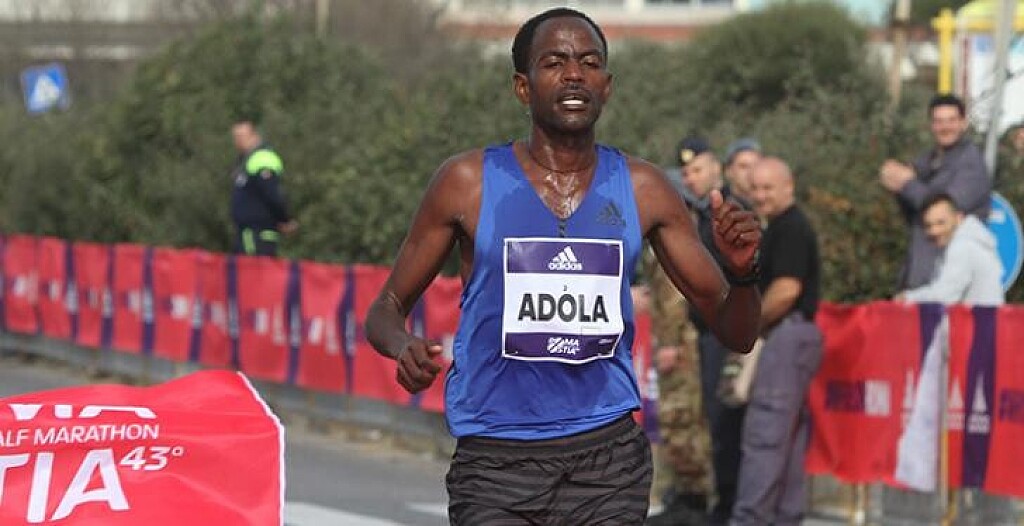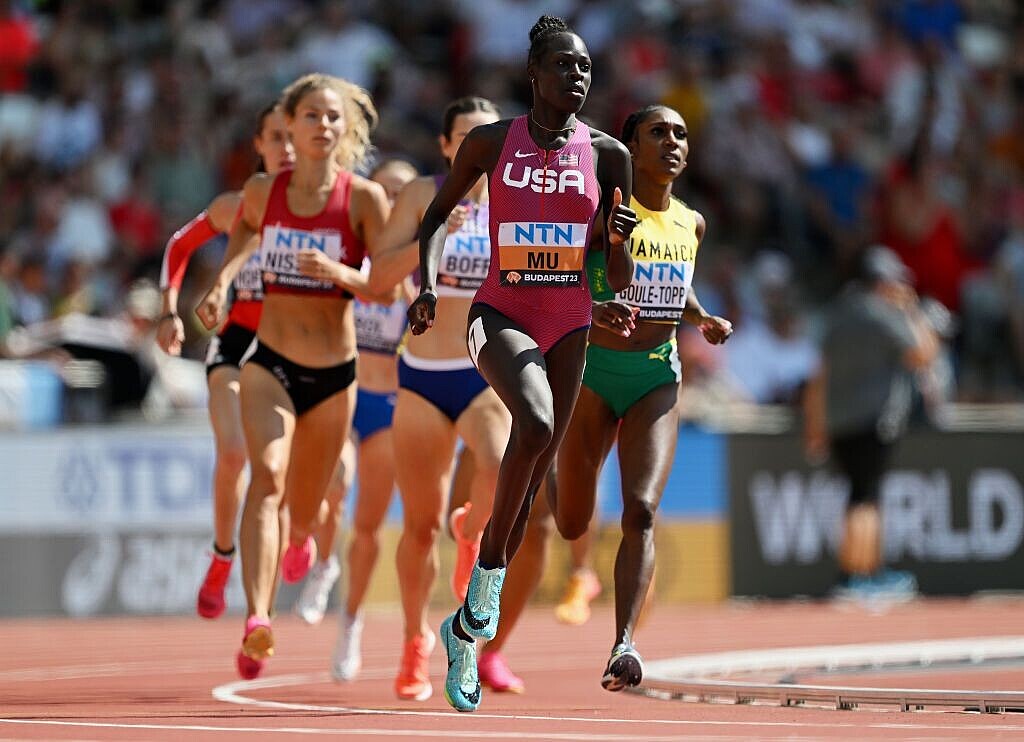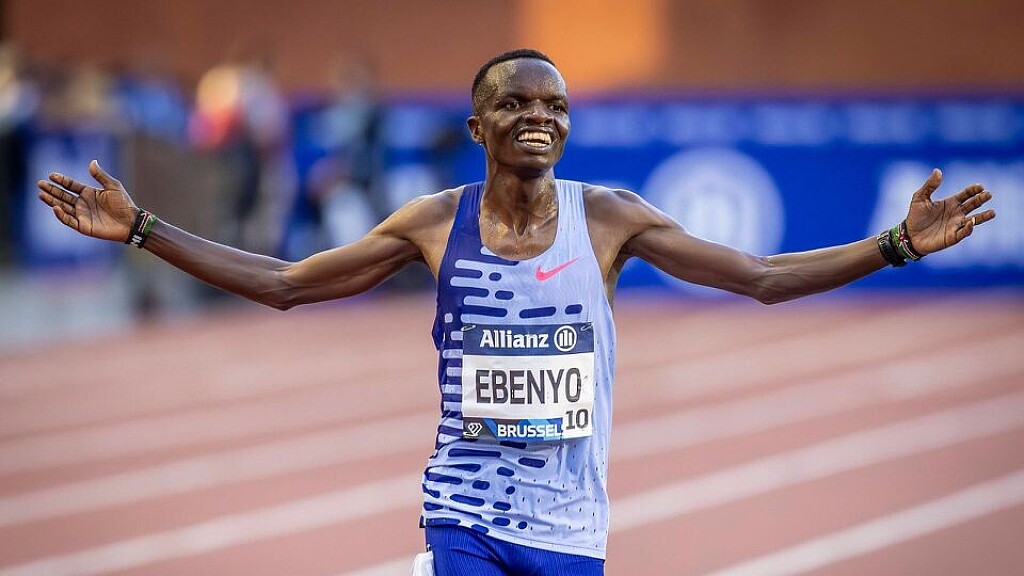Running News Daily
Running News Daily is edited by Bob Anderson. Send your news items to bob@mybestruns.com Advertising opportunities available. Train the Kenyan Way at KATA Kenya and Portugal owned and operated by Bob Anderson. Be sure to catch our movie A Long Run the movie KATA Running Camps and KATA Potato Farms - 31 now open in Kenya! https://kata.ke/
Index to Daily Posts · Sign Up For Updates · Run The World Feed
Long queues at Vitality London 10k race after runners do not receive bib numbers
Large queues have formed for a running race in London after swathes of runners did not receive their bib numbers. Around 15,000 runners were due to take part in the Vitality London 10km race on closed roads around the capital on Sunday.
Queues of participants waiting for replacement numbers snaked through Green Park, with the reason behind the delay unknown.

The first wave of runners was due to set off at 10am with the rest heading off in staggered starts, but organisers were having to hold them back.A London Marathon Events spokesperson told the PA news agency: “We’re aware there are a number of people who haven’t received their numbers, so we’re issuing replacement numbers as fast as we can at Green Park.”
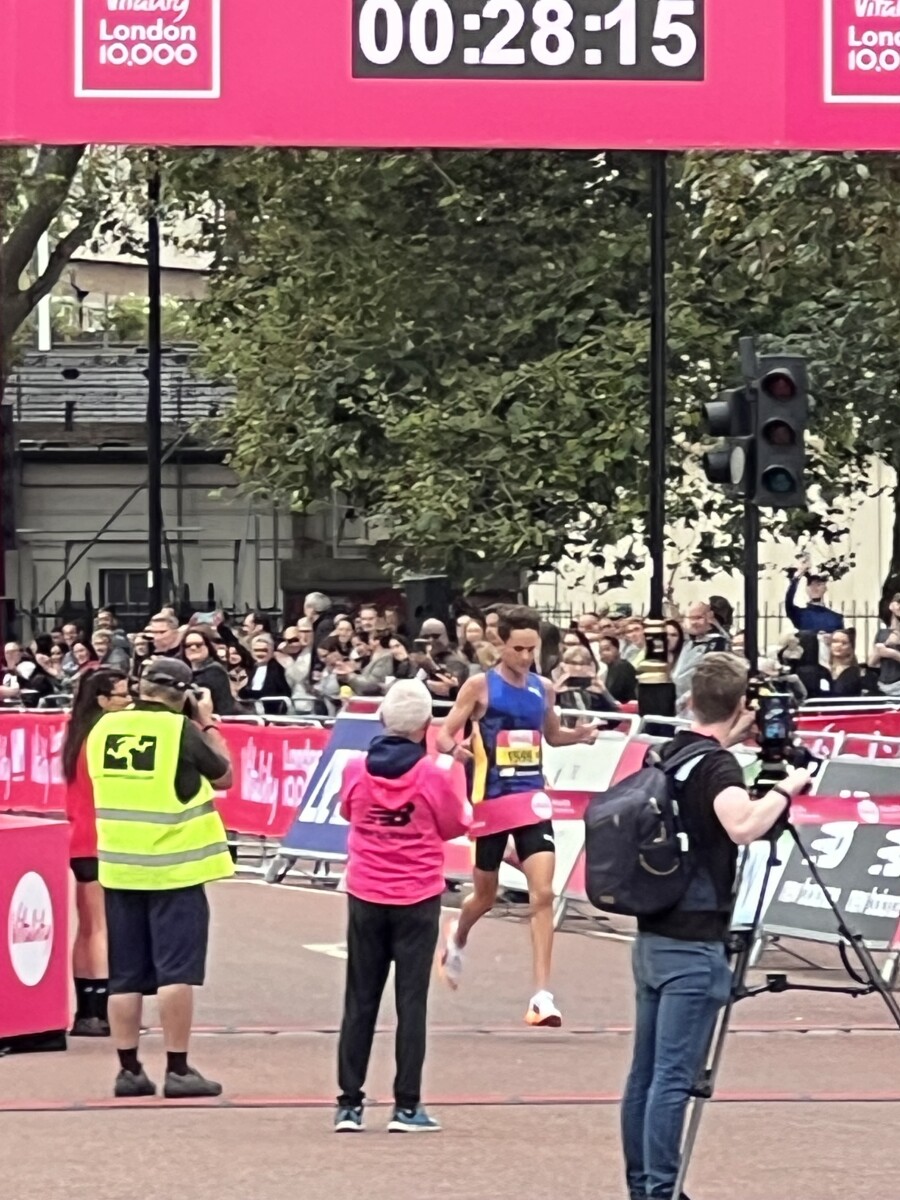
Anthony Bailly, 33, an IT project manager from Haringey, north London, said he had been waiting since about 8.35am.He said: “Not much is being told to us, other than an ask to split into various numbers of queues, but it’s pretty much a free-for-all now.
“They have been calling people forward based on their start time, but people are reluctant to move to the priority queue because it’s starting to get longer than the queue we’re already in.”
The route starts on The Mall and travels past landmarks including Admiralty Arch, St Paul’s Cathedral, the Bank of England, Somerset House, Big Ben, the Houses of Parliament and Westminster Abbey, before finishing in front of Buckingham Palace.
Notable participants include British-Iranian dual national Anoosheh Ashoori and Richard Ratcliffe, the husband of Nazanin Zaghari-Ratcliffe, as well as Dame Barbara Windsor’s widower Scott Mitchell and EastEnders actor Jake Wood.
Update: the race did take off and the winning time was unofficially 28:15 (photo by Catherine Cross for MBR).
(09/24/2023) ⚡AMPVitality London 10,000
The Vitality London 10,000 takes you past many landmark sites, including the London Eye, Buckingham Palace and the Bank of England – so you even get to do a bit of sightseeing along the way! You will run alongside elite runners and have coverage from the BBC, making this 10km one of the highest in profile of its kind....
more...Berlin Marathon: will the women’s course record fall again?
Ethiopia’s Tigist Assefa will be aiming for the course record once more in Berlin on Sunday, in the deepest elite field in the race’s 49-year history, including seven runners with sub-2:20 personal bests.
In 2022, Assefa astounded fans by improving her best by over 18 minutes, taking more than two and a half minutes off the course record with her time of 2:15:37, and earning the unique status of the only woman to break sub-two minutes for the 800m and sub 2:20 for the marathon.

“I’m delighted to be running again in Berlin,” 26-year-old Assefa said at the elite women’s press conference on Thursday. “Last year’s race proved an unexpected success for me. I think I can run even faster on Sunday, a further improvement would be a success,” she said.
Will Assefa be setting her sights on the world record of 2:14:04? She felt that might be too ambitious: “Much can happen so I cannot say at the moment what would be the halfway split,” she said on Thursday. “I want to improve my time but I am not thinking about the world record.”
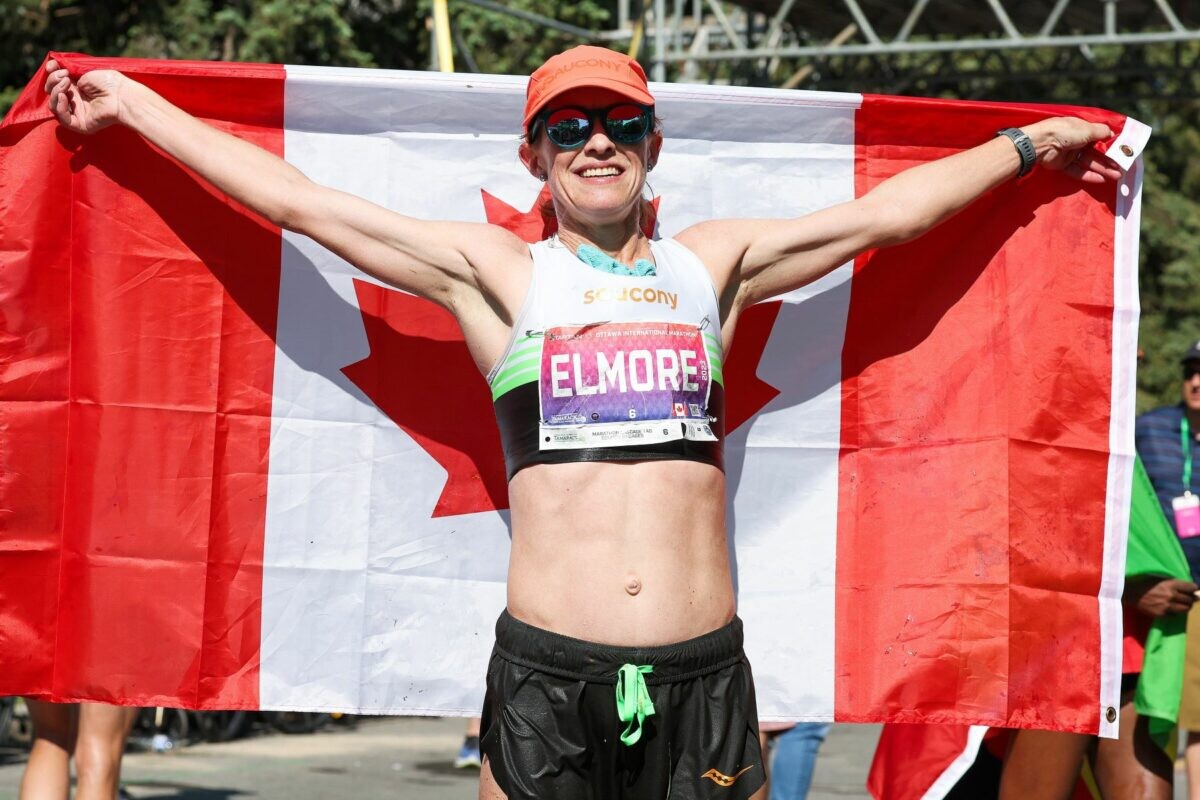
Assefa will face a serious challenge from Kenya’s Sheila Chepkirui, who set a new course record at the 2022 Berlin Half Marathon in a blistering 65:02. She also took third in a speedy Valencia Marathon in 2:17:29, and ran 2:18:51 in London in April for fourth place. “My aim is to break my personal best. I can imagine going through the first half on Sunday in around 68 minutes,” she said.
Challenges could also come from Assefa’s compatriots Tigist Abayechew, third in Berlin in 2022, Hiwot Gebrekidan, second in Berlin in 2021 and Workenesh Edesa, who was fourth last year. “The women’s course record of 2:15:37 is an absolute world-class time,” said the race director Mark Milde. “But, given the strong field, we hope that this can be broken.”
Many of the elite field will simply be hoping to achieve the Olympic standard of 2:26:50.
Canada’s Malindi Elmore will toe the line
Malindi Elmore of Kelowna, B.C. looks to be in fine form to run on the same course where Natasha Wodak broke Elmore’s Canadian marathon record last year. In May, Elmore threw down a gutsy performance at the 2023 Tartan Ottawa International Marathon, where her goal was to get the Olympic standard; she was on pace through 30K and sitting in fourth position. Over the final 12 kilometres, she moved up two spots to finish second, but missed the standard by less than a minute. It seems unlikely she plans to reclaim her Canadian record (which is three minutes faster than the Olympic standard) this weekend, but as all marathon fans know, anything can–and usually does–happen.
A record number of 47,912 runners from 156 nations have entered the 49th edition of the BMW Berlin Marathon. Germany’s most spectacular road race is part of the Abbott World Marathon Majors (AWMM) and is also a Platinum Label Road Race of World Athletics. The men’s press conference will be held on Friday, September 22.
(09/23/2023) ⚡AMPby Keeley Milne
BMW Berlin Marathon
The story of the BERLIN-MARATHON is a story of the development of road running. When the first BERLIN-MARATHON was started on 13th October 1974 on a minor road next to the stadium of the organisers‘ club SC Charlottenburg Berlin 286 athletes had entered. The first winners were runners from Berlin: Günter Hallas (2:44:53), who still runs the BERLIN-MARATHON today, and...
more...Why Eliud Kipchoge has reason to be nervous as Amos Kipruto threatens to end his Berlin marathon dominance
Amos Kipruto's quest for a personal best at the Berlin Marathon raises questions about Eliud Kipchoge's confidence. A thrilling showdown awaits.
Amos Kipruto, the second-fastest man in the field, is on a mission to improve his personal best (PB) as he prepares to tackle the Berlin Marathon.
In a pre-race interview, Kipruto expressed his determination to bounce back after a setback at the London Marathon last April, where he narrowly missed the top spot.
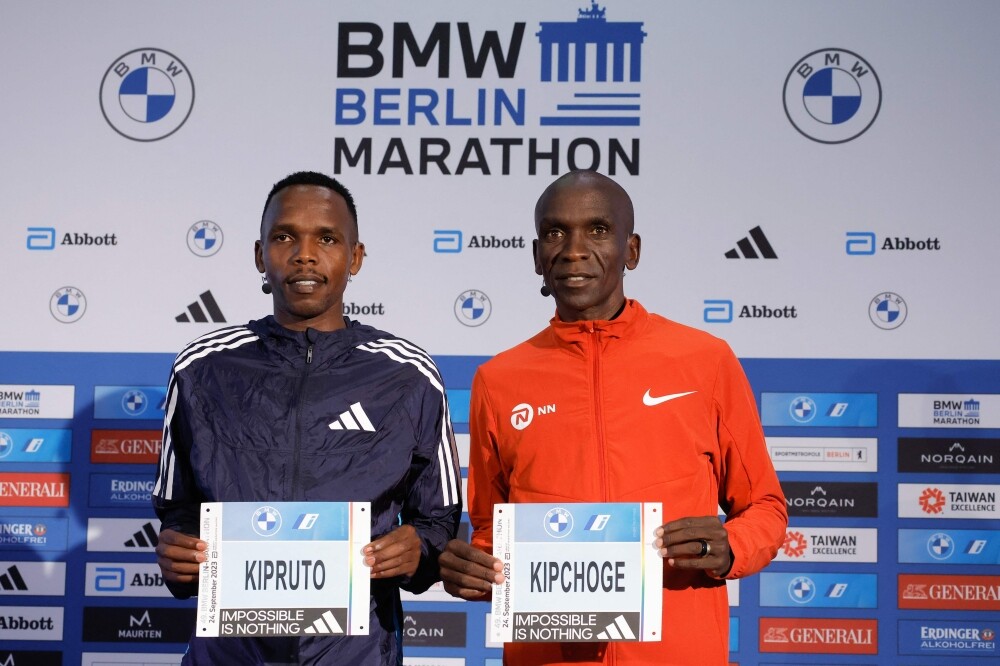
“Losing London it disturbed me, but I never lost hope, and I am here to fight for the best. On Sunday I will be competing for my personal best, I am racing against my time. If I can achieve that, I will be happy,” said Kipruto, who's looking to beat the impressive 2:03.13 he achieved as the runner-up behind the legendary Eliud Kipchoge at last year’s Tokyo Marathon.
Kipruto, 31, is no stranger to the Berlin course. He was the runner-up in 2018, an unforgettable year when Kipchoge first shattered the world record.

However, it is not just Kipruto who has a point to prove. Eliud Kipchoge, the marathon maestro himself, is eager to remind the world of his enduring dominance.
Following a performance in Boston last April that left some questioning his form, Kipchoge is determined to showcase his prowess on a course he knows all too well.
This race holds particular significance for him as he gears up for Paris 2024, where he seeks an unprecedented third Olympic Marathon gold.
During Friday's press conference, Kipchoge chose to keep his race strategy close to his chest, opting instead to tantalize fans with a promise of "a beautiful race because the weather will be good." Indeed, the race is anticipated to take place under optimal circumstances, with minimal wind and a pleasant 11-degree Celsius temperature (51.8 F).
In 2022, the 38-year-old left the world in awe as he crossed the halfway point in an astonishing 59:51, marking the fastest split in marathon history.
When asked if the 21km split would face a challenge again this year in Berlin, Kipchoge responded with a radiant smile, "Who knows what will happen during the race." He then added, "2023 is a different game altogether. We are approaching it in a different way, but when you are in the race, anything might happen. We follow what's in our hands."
As the Berlin Marathon draws near, the question on everyone's mind is whether Amos Kipruto's determination and thirst for a personal best will make Eliud Kipchoge nervous.
The marathon world is known for its unpredictability, and on race day, anything is possible. For now, the stage is set for an epic showdown between two Kenyan legends, with the world eagerly awaiting the outcome.
In a sport where every step counts, where records are shattered and legacies are forged, both Kipruto and Kipchoge know that only time will reveal who will emerge victorious in this battle of wills and speed.
(09/23/2023) ⚡AMPby Festus Chuma
BMW Berlin Marathon
The story of the BERLIN-MARATHON is a story of the development of road running. When the first BERLIN-MARATHON was started on 13th October 1974 on a minor road next to the stadium of the organisers‘ club SC Charlottenburg Berlin 286 athletes had entered. The first winners were runners from Berlin: Günter Hallas (2:44:53), who still runs the BERLIN-MARATHON today, and...
more...Running a half-marathon? Try this alternating tempo run
The half-marathon is a unique distance. Thanks to its blend of speed and endurance, runners need to include workouts that improve their stamina as well as workouts that improve their long speed, if they want to see their finish time come down. If you’ve got a half-marathon on the calendar, try this alternating tempo run to help you practice nailing your goal pace, even when you’re tired.
The goal of this workout is to improve your stamina, or your ability to run faster for longer. The working part of the session is five miles (8 km) in length, during which you alternate between half-marathon pace and marathon pace each mile (every 1.6 kilometers).
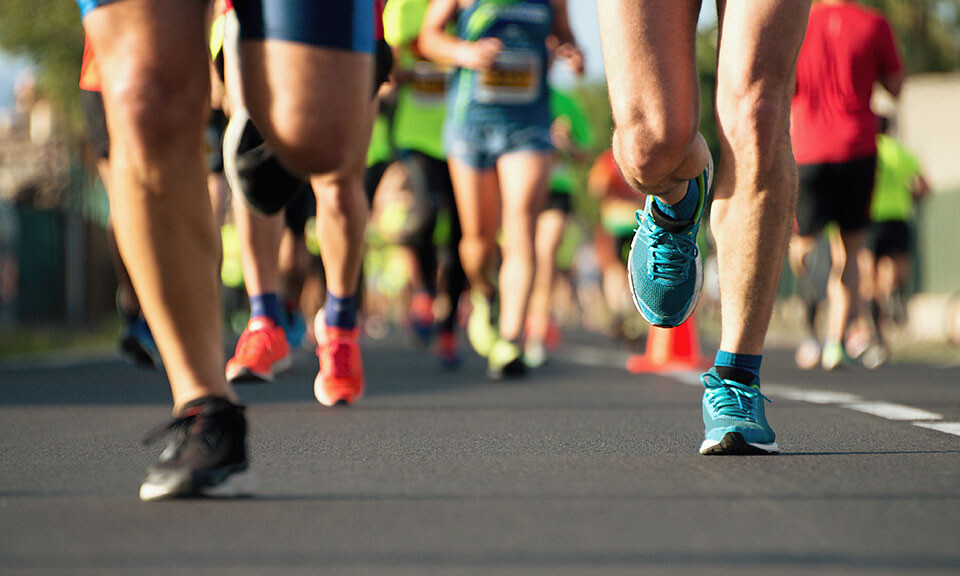
Because there is no rest during the workout, it’s very important to be vigilant about your pace. You may be tempted to run too fast at the beginning of the workout (a common mistake runners make during half-marathons), but the miles will start to add up. This workout requires you to know both your half-marathon pace and your marathon pace. If you haven’t run a marathon yet, you can plug your half-marathon pace into a pace calculator to get your target marathon pace (spoiler alert: it will likely be 15-30 seconds per mile slower than your half-marathon pace).
Note: If this is your first half-marathon and your goal is just to make it to the finish line, the amount of time you spend running (at an easy pace) leading up to your goal race is the most important thing. In that case, this workout may not be necessary. If you’re chasing a specific time goal or looking to improve on your last performance, keep reading.
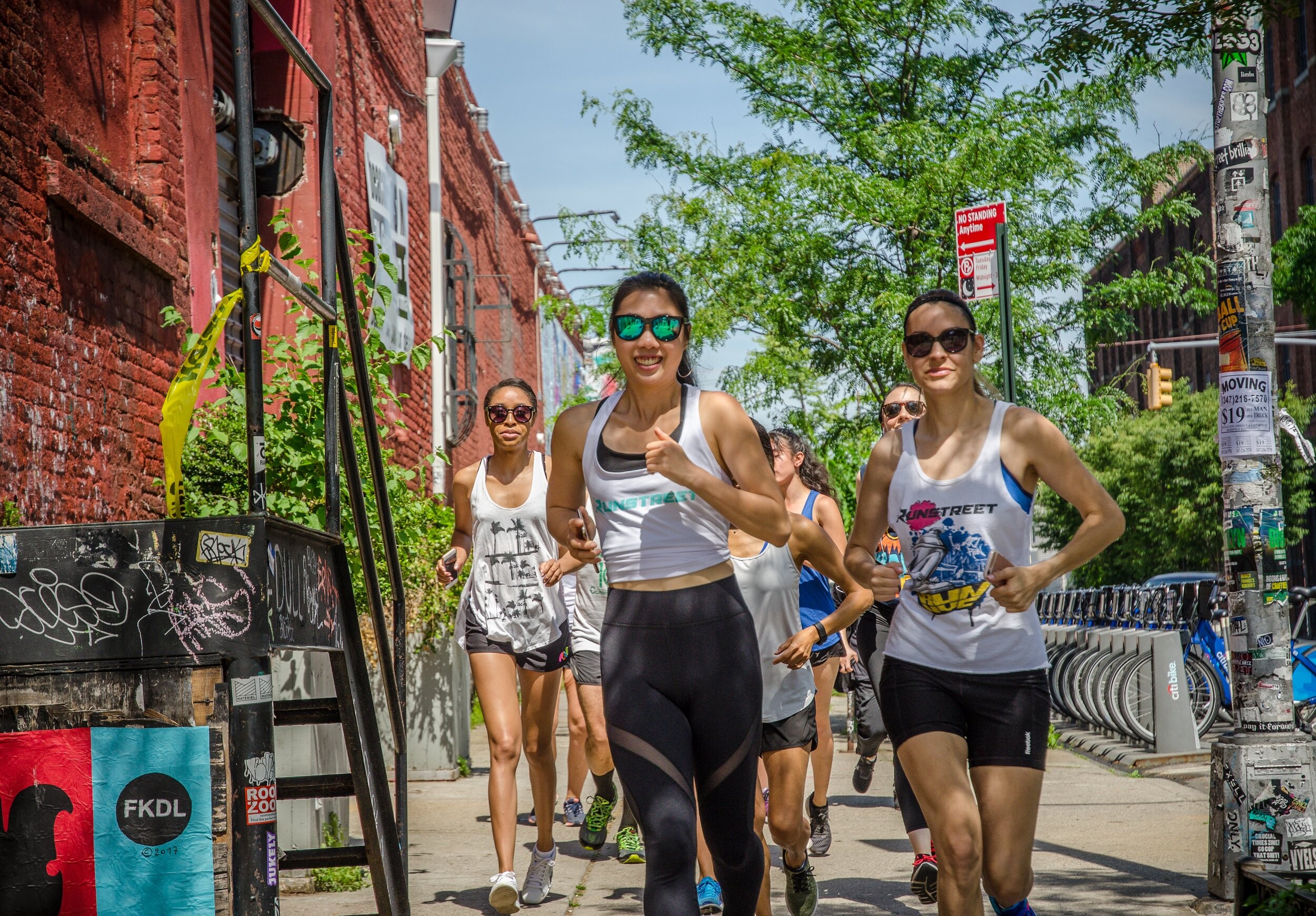
The workout
Warmup: 15-20 minutes easy jog
Workout:
1 mile at half-marathon pace
1 mile at marathon pace
1 mile at half-marathon pace
1 mile at marathon pace
1 mile at half-marathon pace
Cooldown: 10-15 minutes easy jog
(09/23/2023) ⚡AMPby Brittany Hambleton
10 Things to Know About the 2023 Berlin Marathon
Here’s how you can watch the race, track runners, and register for next year
More than 45,000 runners are expected to participate in the Berlin Marathon on September 24 in Germany’s capital city. It’s the 49th edition of the race and one of the six World Marathon Majors races along with races in Chicago, New York, Boston, London and Tokyo. The weather forecast is calling for cloudy and cool conditions on race morning in Berlin, so fast times are once again expected.


Here’s a rundown of 10 noteworthy elements about this year’s race.
The Berlin Marathon has produced 12 world records—more than any other marathon—since its inception in 1974, including the past eight men’s records since 2003. Kenya legend Eliud Kipchoge lowered the world record for the fastest official marathon ever run (2:01:09) last year in Berlin, and it’s also where he ran the previous world record (2:01:39) in 2018.
Berlin has produced six of the top 10 fastest men’s times in history, including three of the four sub-2:02 efforts (including the 2:01:41 run by Kenenisa Bekele in 2019). It hasn’t been quite as fast for women, however it has been the site of three women’s world records, most recently when Japan’s Naoko Takahashi ran the world’s first sub-2:20 marathon (2:19:46) in 2001. Last year, Ethiopia’s Tigst Assefa won the women’s race in 2:15:37, which, at the time, was the second-fastest marathon ever run and now ranks fifth.
Berlin is the flattest course of all the World Marathon Majors, with a total elevation gain of 241 feet and loss of 260 feet. (The biggest “hills” come between miles 16 and 20, but they max out at less than 30 feet of gain.) Berlin annually produces some of the fastest pro results in the world, in part because it’s a flat course, but also because the race organization provides pacemakers (auxilliary runners who set an optimal pace but only run about a portion of the course before dropping out) so the opportunity for fast times are assured. (There are no pacemakers at the Chicago, New York City Marathon, and Boston Marathon, so those races play out only by the tactics of the runners in the field.) But the fast elite times, flat course, and typically cool weather conditions have attracted age-group runners targeting new PRs, too.
Running legend Eliud Kipchoge, universally accepted as the G.O.A.T. of marathoning, has won 15 of the 18 marathons he has entered, including the past two Olympics. Berlin is where he’s had most of this success, dating back to his first victory in 2015 and he has since also won there in 2017, 2018, and 2022. Can he add one more victory to his total?
He lowered his own world record to 2:01:09 last year by averaging 14:21.4 per 5K, or 4:37 per mile. However, the 38-year-old Kenyan is coming off an uncharacteristically disappointing race at the 2023 Boston Marathon, where he finished sixth in 2:09:23. Will he approach another world record? “My aim is to always run a good race,” he said recently. “Berlin is like home for me. In view of the Olympic Games next year in Paris, I thought about which race could be the best preparation for the Games for me, and Berlin is the best option.”
Including Kipchoge, the men’s field in Berlin includes 10 runners who have run faster than 2:06 and seven more who have broken 2:07, including last year’s runner-up Mark Korir (2:05:58). Kipchoge should be challenged by fellow Kenyan Amos Kipruto, who owns a 2:03:13 from his runner-up showing at last year’s Tokyo Marathon. The winner of the 2022 London Marathon last fall (2:04:39), Kipruto, 31, placed a distant second in the 2018 Berlin Marathon behind Kipchoge (2:06:23) and owns a bronze medal in the marathon from the 2019 World Athletics Championships in Doha.
Other top runners in the field include Kenya’s Geoffrey Kamworor, who ran 2:04:23 to place second at the London Marathon in April, Ethiopia’s Birhanu Legese, who was second (2:02:48) in Berlin in 2019 and Kenya’s Wilson Kipsang, 41, a former winner in Berlin, New York, and Tokyo. However, Kipsang, who lowered the world record to 2:03:23 on the Berlin course in 2013, is coming off a four-year ban for missing drug tests in 2018 and 2019.
Last year, Ethiopia’s Tigist Assefa, a 2016 Olympian in the 800-meter run, entered the race as an untested marathon (with a PR of 2:34:01) and surprised everyone with her 2:15:37 victory in the third-fastest time ever.The 26-year-old is back this year but hasn’t run any races because she’s been sidelined with a few nagging injuries.
Her biggest competitor will likely be Sheila Chepkirui, who holds a personal best of 2:17:29 from last December’s Valencia Marathon. She’s a former African Cross Country Championships winner and was the bronze medalist in the 10,000-meter run at the 2022 Commonwealth Games. Other top women runners include Ethiopians Tigist Abayechew (2:18:03), Workenesh Edesa (2:18.51), and Hiwot Gebrekidan (2:19:10).
Scott Fauble, a three-time seventh-place finisher at the Boston Marathon (including this year in 2:09:44), is racing Berlin with the hopes of securing the Olympic-qualifying standard of 2:08:10. The 31-year-old runner from Portland, Oregon, will still need a top-three finish at the U.S. Olympic Trials Marathon on February 4 in Orlando, but securing the time will give him a leg up on qualifying for the Paris Olympics next summer.
Also racing in Berlin are 2016 U.S. Olympian Jared Ward (Provo, Utah) and 2020 U.S. Olympian Jake Riley (Boulder, Colorado). Ward, 35, owns a 2:09:25 personal best, but he hasn’t run faster than 2:12 since his sixth-place finish (2:10:45) in the New York City Marathon in 2019. The 34-year-old Riley, who owns a 2:10:02 PR, is coming back after having double Achilles surgery in July 2022 to correct Haglund’s syndrome (the second time in his career), and hopes to run in the 2:12-2:14 range. Ethiopian-born Teshome Mekonen, who recently received U.S. citizenship, will also be racing in Berlin. The 28-year-old, who lives in New York City, has a 1:00:02 half-marathon personal best and lowered his marathon personal best to 2:11:05 last January in Houston.
Annie Frisbie is the top American runner in the women’s field in Berlin. The 26-year-old from Hopkins, Minnesota, made her marathon debut at the 2021 New York City Marathon with an impressive seventh-place finish (2:26:18). She’s continued to run well since then, placing 20th (2:28:45) in the 2023 Boston Marathon (2:28:45) and most recently finishing fifth (1:07:27) at the U.S. 20K Championships on September 4 in New Haven, Connecticut. Frisbie was a Wisconsin state champion runner in high school and an All-American runner for Iowa State University.
The Berlin Marathon was started in 1974 by Horst Milde, a German baker and running enthusiast. When it began at the height of the Cold War and East Berlin being sealed off by a wall, the marathon was run only in West Berlin. Since 1990, it has started and ended near the Brandenburg Gate, sending runners on a jagged loop through the city—including the neighborhoods of Charlottenburg, Tiergarten, Moabit, Mitte, Friedrichshain, Kreuzberg, Neukölln, Schöneberg, Friedenau, and Zehlendorf. Runners will pass tourist sites like the Reichstag building, the Siegessäule (Victory Column), Berlin Cathedral, and Potsdamer Platz. Live music is played at more than 60 locations along the course, including at all the famous landmarks.
The inaugural Berlin Marathon had 244 finishers; 234 men and 10 women, and was won by Günter Hallas (2:44:53) and Jutta von Haase (3:22:01), respectively. Last year, the race had 34,788 finishers, including 23,280 men (67 percent) and 11,508 women (33 percent). The last German runners to claim victory were Irina Mikitenko (2:19:19) in 2008 and Ingo Sensburg (2:16:48) in 1980. No American man or woman has ever won the Berlin Marathon.
The Berlin Marathon has an inline skating division for 500 participants that begins at 3:30 P.M. after all runners are cleared from the course. The skater course record of 56:46 was set last year by Belgian Bart Swings, and he’s back this year aiming for his ninth victory. In the women’s race, all eyes are on last year’s winner, Marie Dupuy of France, in 1:11:19. All finishers of the inline skating division are eligible to enter the 2024 Berlin Marathon as runners.
The race, which starts at 9:15 A.M. local time (or 3:15 A.M. ET in the U.S.), will be broadcast worldwide by several TV partners, but not in North America. However, several websites offer live streaming so people can watch the Berlin Marathon from anywhere in the world, especially if you’re a VPN subscriber. Watch Athletics will be broadcasting the race online in real time for free, while FloTrack’s livestream requires a subscription ($29.99 for one month) in order to view their livestream. Runners can be tracked via the Berlin Marathon website’s Results page, or via the BMW Berlin Marathon App app available on Apple or Google Play.
Race day begins with the elite handbike division at 8:50 A.M., followed by the wheelchair and handcycle divisions at 8:57 A.M. Runners are sent off in four waves beginning at 9:15 A.M., starting with the men’s and women’s elite waves. The race has a strict time limit of 6 hours, 15 minutes as well as course closure times at the 33K/20.5-mile mark (3:50 P.M.) and 38K/23.6-mile mark (4:35 P.M.). Runners who have not reached those points by those times can continue on the sidewalks alongside the course or get a ride on the course-sweeping bus.
Entry to the 2024 Berlin Marathon, which is slated for September 29, 2024, will be done via a lottery that will open in October. You can enter the lottery as a solo runner or as a team consisting of two or three people. (If the team is drawn, all persons from the team are included.) Lottery dates for 2024 have not yet been announced, but the draw for the 2023 edition took place in December 2022.
If you’re selected, the registration fee will be about $160 euros. You can also secure a guaranteed spot in the race based on previous marathon times. In 2023, female runners up to 44 years old qualified if they ran faster than 3:00; female runners up to 59 years old qualified if they ran under 3:20; and female runners over 60 years qualified if they ran under 4:10. For men, the qualifying times were 2:45 (up to 44 years old), 2:55 (46-59 years old), 3:25 (60 and older.)
If you don’t get in through the lottery, you may still be able to get into the race via a charity bib or through tour operators.
(09/23/2023) ⚡AMPby Outside online
Meet the Guy Who Summited Mount Washington 100 Days in a Row
The gear shop owner is the new president of the Prezzies
It was already 9:15 P.M. on August 8 when Andrew Drummond and his friend, Matt Hart, set out along the Appalachian Trail from Madison Spring Hut, a small shelter in New Hampshire’s Presidential Range. The two men had two goals for their outing. The first was to serve as support crew for a thru-hiker attempting an FKT on the 2,198-mile trek. The second was to climb six miles to the top of 6,288-foot Mount Washington, to fulfill Drummond’s own goal.
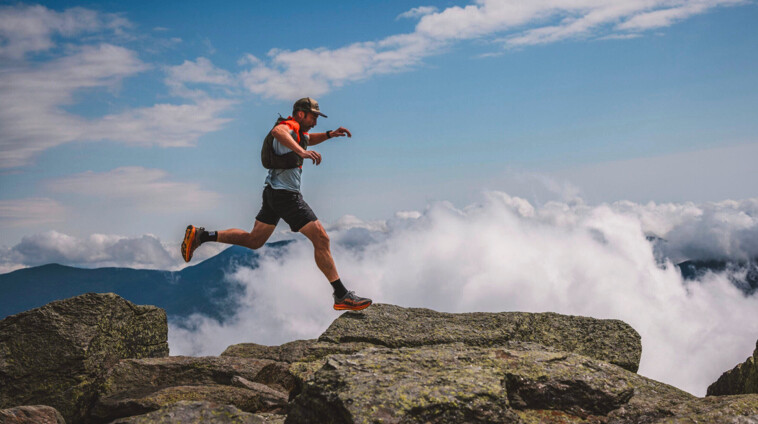
The minutes ticked by as they picked their way through rocky terrain in the fog with only headlamps for light. It was impossible to make out cairns and faint trail signs. Hart’s pole snapped, further slowing their progress. Drummond was checking his watch constantly, both for navigation and to check that they were going to make it before midnight.
“There’s really no reason I should have been pushing it that close,” said Drummond. “I was pretty concerned about making the summit in time.”
It was the 79th consecutive day that Drummond, 42, had set out to reach the peak’s summit, and this was the closest he came to falling short of reaching it. His overall goal was to ascend Mount Washington 100 times in as many days. The two men hurried up the mountain in the dark, trudging through wind gusts that reached 71 miles per hour. Eventually, they tapped the summit sign with half an hour to spare.
Drummond had a pretty good idea of the size and scope of the challenge when he decided to take on the project earlier this year. He grew up in Conway, New Hampshire—New England’s tallest peak was basically in his backyard. Drummond moved back to the area in 2014, and estimates he hiked the peak approximately 50 times before embarking on his challenge.
Drummond got the idea earlier in the spring talking with Todd Nappi, a friend and local crusher who had just this summer made his 250th summit of Mount Washington.“Anything I do, I can rationalize that there’s always someone crazier,” Drummond said, naming the positive feedback loop that inflates the baseline level of intensity in many mountain towns.
Drummond began his challenge on May 22 with a round trip on skis—the only ascent that wasn’t on foot. “I don’t think it was until I was 10 or 12 weeks in that my body finally got a handle on what was going on,” said Drummond. “And then I could start turning it up a little bit—if I wanted to run some sections uphill, I could. I had some really good hikes where I was able to push it, and feel like I was moving a lot more efficiently.”
The 100-ascent challenge appealed to Drummond for several reasons. He was running a trail marathon in Switzerland in September, so the challenge seemed like perfect preparation for the race. Plus, the mountain sits ten miles from his house, making the trek “a manageable distance and elevation gain.”
Climbing the peak that many times appealed to him for other reasons. “Seeing all the natural phenomenon of the weather, the wilderness experiences, and just being outside—I gravitate towards that, and it lived up to expectations. It’s one of the most beautiful places in the world,” he said.
The trails up Mount Washington are rugged and rocky, making for arduous climbs and tricky descents. In the first week, Drummond developed a neuroma (a painful lump on the ball of the foot) and had to swap out his shoes to better protect his feet from impact. “It’s like every rock wants to kill you,” said Drummond. He also rolled his ankles and fell “more times than I’d like to admit.” His worst injury came a month in, when he slipped while descending and cut his palm on a rock—the injury required an emergency room visit and 22 stitches.
But as the weeks ticked by, Drummond’s body held up to the wear and tear, as well as the early wake-ups and occasional midnight climbs. “When I felt overuse pains coming on I’d push a hike into the evening and take a 36 hour break. That would help,” he said. Usually, though, he was at the trailhead first thing in the morning.
New England’s tallest mountain is famous for having some of the most intense weather in the world, including gale-force winds. This summer was the wettest on record, and Drummond often trekked in conditions that would keep most people inside, including 80 mile-per-hour gusts and snow into early June. “The really memorable days are the hardest ones,” he said. But Drummond also recalls beautiful moments that were equally as intense. “I had some days where I could just see straight into Vermont, and all the way to the Atlantic Ocean while a full moon was rising,” said Drummond.
Drummond isn’t a professional athlete—he owns a gear store in Jackson, New Hampshire, called Ski the Whites, and keeps active in the area skiing, biking, and running local trails. For years, he’s supported other athletes who go for big records in the Whites, and over the summer he crewed for thru-hiker Kristian Morgan during his southbound Appalachian Trail FKT attempt.
“He’s definitely the hub of the community here,” said Nappi, who attends weekly runs and other events Drummond puts on. “His shop is directly on the main road. You can go in there anytime and there’s like, five people on his couches hanging out,” said Nappi. According to Nappi, Drummond’s achievement of 100 summits in as many days fits in the spirit of competition in the area, where instead of race results, “everyone’s dreaming up something big, something interesting and a little niche,” said Nappi.
Drummond’s friends often kept him company on his daily trek. “I probably had almost 50 unique people come out with me over the whole thing,” reflected Drummond. “And you know, a lot of them wouldn’t have come out on those days either. So I’ve gotten other people out there, and that feels good.”
On August 29, Drummond reached the peak for the 100th time. He kept the celebration pretty low-key—a few friends accompanied him to the top, and he took some time to reflect on the achievement. “It was a Tuesday morning, so I didn’t want to make an event out of it,” said Drummond. “But I had taken a video every time I touched the summit sign, and so I went through my camera roll and made a little reel and sort of re-lived everything. I just feel very proud I got to have all those experiences.”
Drummond recommends athletes pursue a local challenge—even if it doesn’t involve climbing a peak 100 times. “It’s your backyard—that’s meaningful,” he said. “Something right out the door, easy access—whether it’s your bike commute or a local trail, you’ll certainly look at it in a new light. And that will probably make you better as a result.”
So, has climbing Mount Washington 100 times satiated his appetite for the peak? “I felt a little bit of a draw to go back up today,” Drummond told me on August 30, the day after completing the challenge. There are other trails he’s excited to check out, on his upcoming trip to Europe and elsewhere in the Whites, but he still hasn’t had his fill of Washington. “I was in such a rhythm, so it’s really strange to stop. I think that I need to take it easy for a bit, but yeah, I’ll be going back up. Probably pretty soon.”
(09/23/2023) ⚡AMPShould I Tune In or Tune Out During My Run?
How to think on challenging runs depends on your intention. Here’s what the research says. Runners often develop a type of tunnel vision. Case in point: In 2006, Scott Douglas went to India to cover a five-day stage race in the Himalayan foothills. The day before the race, he and the eventual winner went for a run from the race headquarters in Mirik. There was a small lake with a perimeter path nearby that was perfect for the occasion—they could easily settle into a rhythm and crank out several 10-minute loops until it was time to call it a day.
When Douglas got back to the lodge, his wife, Stacey, asked, “Wasn’t that amazing!?” It turned out that Stacey had also gone to the lake for a stroll and had come upon a couple dozen women celebrating the Diwali festival. Clad in bright yellow and red wraps and head scarves, they squatted next to the lakeside trail with big bowls of bananas, melons, other fruits, vegetables, and flowers as offerings.

Douglas can relay these details, thanks to a photo Stacey took, but he hadn’t noticed them—not on the first loop around the lake, or the third, or any other one. Without making a conscious decision to do so, he’d been entirely focused on his run.There are far loftier examples of intense concentration in running history. In the 2004 Olympic marathon, Deena Kastor didn’t realize she was in the bronze-medal position until the final 100 meters. During the 2018 Boston Marathon, which was run in an apocalyptic rain-and-wind storm, eventual winners Des Linden and Yuki Kawauchi didn’t know they had taken the lead until well after doing so.
Some of this seeming tunnel vision stems from runners focusing on what are known as “process goals,” such as running the next mile as well as they’re able, rather than thinking about outcomes, such as winning an Olympic medal. Also, during hard efforts, seasoned runners are good at suppressing strong emotions like anxiety that can lead to focusing on distracting and irrelevant information.
Let’s look in more detail at how successful runners hone their ability to concentrate on the task at hand to the point of seeming oblivious to much of what’s going on around them.
Throughout his career as one of the world’s leading exercise psychology researchers, Noel Brick asked athletes ranging from beginners to Olympians a simple question: What were you thinking? The answers provide fascinating insight into what athletes think about during peak performances. Brick has lost count of the number of times he has sat captivated as athletes recounted how they struggled with, and overcame, the challenges they experienced when racing and training.
One of the most common themes that emerges is that running fast is incredibly hard, both physically and mentally. This is true for novices and Olympians alike. But what separates the best from the rest is their ability to extract exceptional performances through a process of deep focus and concentration. These athletes know what they need to focus on and, more importantly, have the mental tools in their kit to do it. Take this example from an elite cross-country runner whom Brick interviewed following one of her toughest races:
I went through two and four [kilometers] on the back of the leading group. And going into the third lap, I started falling off the leading group. And it was everything for me to stay attached [because I was distracted by a spectator] and suddenly I just lost a second’s concentration, and it was like, “Don’t lose concentration, concentrate now,” and I covered the move. I finished second in that race. But if I had fallen off that group, I wouldn’t have gotten back on and that would have been it.
Triumph in a footrace—however that’s defined for you—often requires winning the battle that takes place within your mind. For athletes like the one quoted above, this means resisting a range of different distractions. Some are external, like a spectator who momentarily captures the athlete’s attention. Others are internal thoughts, like worry or the sometimes-irresistible urge to stop or quit.
So how do they do it? What tools do athletes use to remain focused and on task? Just as important, how do they get their concentration back if they lose it?
The first answers to these questions began to emerge in the late 1970s. Across a series of studies, psychologist William Morgan and exercise physiologist Michael Pollock interviewed recreational and elite distance runners to discover what they focused on during training and competition.
Their findings revealed that national- and world-class marathoners adopted what Morgan and Pollock called an “associative strategy.” As described in a classic study, these runners “paid very close attention to bodily input such as feelings and sensations arising in their feet, calves, and thighs, as well as their respiration; . . . [their] pace was largely governed by ‘reading their bodies’; . . . [and] they constantly reminded or told themselves to ‘relax,’ ‘stay loose,’ and so forth.”
The details of what elite runners paid attention to when racing surprised the research team. Up until this point, the consensus was that it was best to tune out from bodily sensations. After all, if running fast was hard, then surely paying less attention to physical feelings would be better than focusing in on them.
But Morgan and Pollock soon realized that these elite marathoners were different from the recreational athletes they usually interviewed. Not only were their physical performances miles apart, literally and figuratively; so, too, were their mental strategies.
What non-elites preferred to do was adopt a range of distraction strategies. In other words, they preferred to tune out from the physical sensations they experienced. They did so by thinking about past memories, imagining listening to music (remember, this was pre-earbuds), singing, or, for one runner, visualizing stepping on the faces of two coworkers she detested.
With these two separate ways of thinking, we’ve now got a dilemma. What is the best way for athletes to think? Which type of strategy helps most: tuning out or tuning in?
These were the questions that grabbed Brick’s attention when he began to plot his PhD research in 2012. By 2014, he had published a review of 112 studies on the attentional strategies of endurance athletes—that is, what they focus their attention on. In it, he sifted through the evidence supporting distraction, on the one hand, and association, on the other.
Before we can answer this question, we first need to consider a much simpler one. What do we mean by best? If better—that is, faster—performance is the goal, then athletes probably want to avoid being distracted at all costs.
But that’s not the full picture. In Brick’s review, he noted that distractions, such as daydreaming, conversing with a training partner, or focusing on scenic views, can help to reduce boredom and make a run more enjoyable. In other words, when the outcomes are less about going faster and more about feeling better, then distraction is best. A recreational runner whom Brick interviewed put it like this:
My mind just wanders whenever I’m out. It’s as if it’s a freedom. It’s my time and it’s me thinking about my things, you know? You’re not sitting in the house or you’re not working or you’re not thinking about things. You’re just thinking about your things.
What these insights tell us is that distraction has its place in our mental tool kit. It can be a useful way to manage our emotions, especially when we need to switch off, chill out, and get away from it all.
One great way to do this is to spend time in natural spaces, such as the countryside or a park. Studies have found increased brain activity relating to calmness and meditative thoughts when people exercise in a park versus crowded urban settings. In the latter, brain activity linked with negative thoughts such as rumination has been found to be much higher than when people exercise in more natural settings.
But this is only half the story. Although positive distractions like nature have benefits, performing to the best of their capabilities is a more immediate priority for athletes during competition. In these instances, tuning in might be a better approach than tuning out.
When Brick dug deeper into the results of more than 35 years of research, he soon discovered that the effects of association strategies on performance were much more nuanced than previously thought. When athletes focused excessively on bodily sensations like breathing or muscle soreness, their performance suffered. Doing so made tasks feel harder. In contrast, strategies like keeping relaxed or optimizing movement technique improved performance, sometimes without increasing how hard a task felt.
An intricate study involving 60 experienced runners helps to explain some of these nuances. These individuals completed three 5-kilometer runs, once on a laboratory treadmill, once on a 200-meter indoor running track, and once on a flat outdoor road route. Half the runners—the association group—were asked to tune in every 30 seconds during each run to the heart rate and pace readings on their watch. The other half were assigned to a distraction strategy of listening to music through headphones. All participants were instructed to run as fast as they would like during each 5-kilometer run. The research team also recorded how good or bad runners felt, how hard each run was perceived to be, and their final 5-kilometer times.
In line with research on other distraction strategies, the findings revealed that those who listened to music felt calmer and more tranquil during their runs. Runners also felt better when running outdoors than they did in the indoor settings.In terms of performance, however, runners in the heart rate and pace-monitoring group ran faster than the music group by an average of 1 minute and 47 seconds. In a sport in which participants obsess over every second of a race time, that’s a significant difference!
Just as interesting were the effects of location on performance. Although 5-kilometer times were slower on the treadmill than both the track (by 3 minutes and 46 seconds) and the road route (by 4 minutes and 2 seconds), running on the treadmill felt hardest. This was most likely because of the treadmill environment, devoid of mental stimulation or distraction. In this setting, athletes probably focused on little else other than how tough their run felt. In contrast, running the outdoor road route, the fastest location of all, felt easiest.
Periodically monitoring bodily sensations and tuning into pace allows for better performance. In contrast, tuning out might result in a slower pace but can help make an activity feel more pleasant. In effect, our focus matters, and when best performance is a priority, then having the mental skill to focus effectively is essential.
(09/23/2023) ⚡AMPViktoria Brown smashes her own 6-day record
Whitby, Ont.’s Viktoria Brown has conquered the multi-day racing scene, and she just keeps getting better. Brown ran a whopping 747 kilometers at the EMU 6-day Race in Hungary, besting her previous Canadian 6-day record of 736 km. Runners competed on an 898.88 meter-long certified road loop that was 100 per cent asphalt.
Brown is well-known for her many multi-day records, and for recently competing at Badwater 135, the scorching ultra in Death Valley, Calif., where she finished fourth.
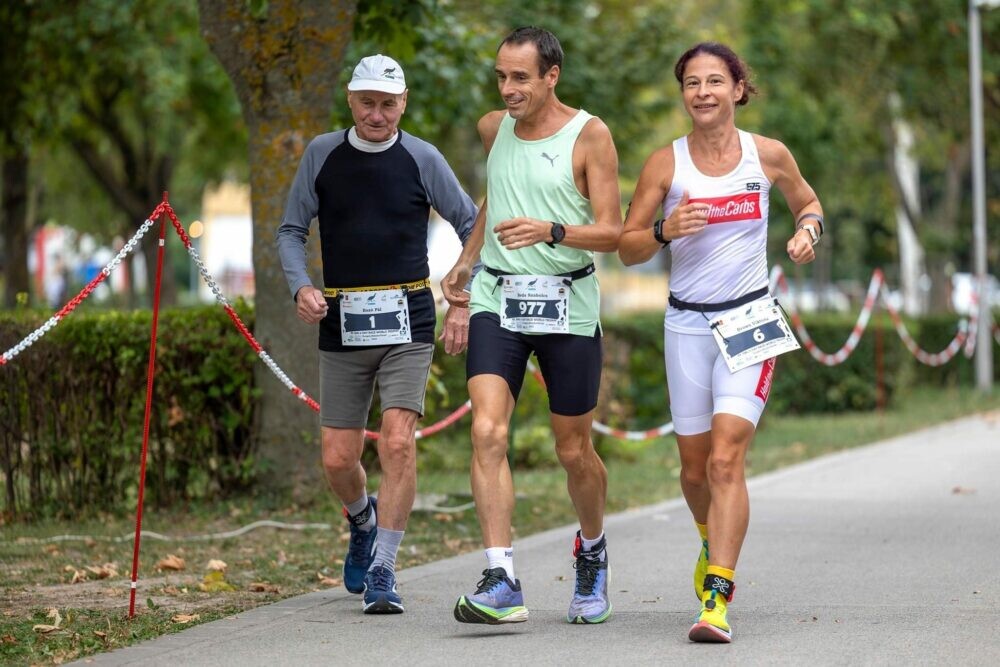
She holds the 48h Canadian record (363 km), and the 72-hour Canadian record (471 km), and was the owner of the 72h WR, recently bested by Danish athlete Stine Rex. She entered EMU having trained minimally, and became ill with salmonella poisoning partway through the event.”My goal at this race was to hit 800 kilometers,” Brown told Canadian Running.
“Only three women have ever done that, and I believe that without the salmonella poisoning, I would have hit it,” she said. “I only ran 56 km on day five, while I ran 110+ km on all other days, including 151 km on day six.”
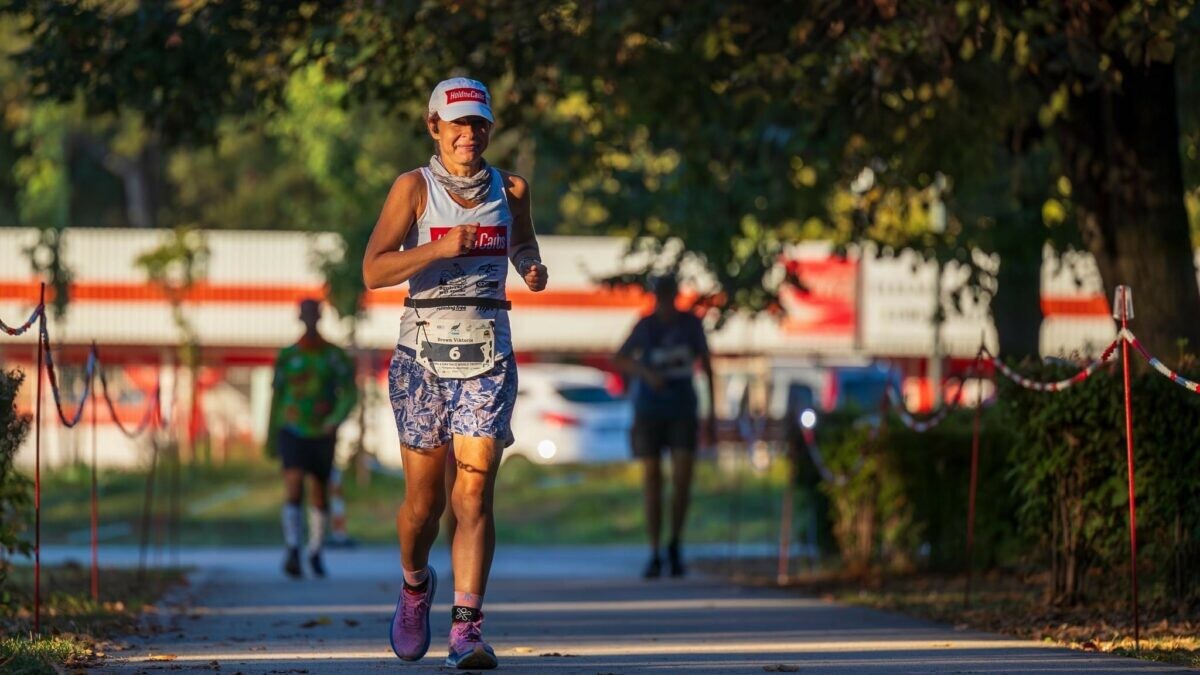
Ultras are often a test in troubleshooting, and this is only magnified by multi-day racing.”Vomiting started at noon on Monday (the start of day five) and went on all day until I went down for sleep around 10 pm,” Brown said. “I got up at 3:30 am, was back on the course at 4 a.m., and ran straight until the race ended, 32 hours later.” Brown says she was extremely lucky to have a medical doctor on her crew, whom she credits with bringing her back from illness.
To combat the salmonella, Brown slept for six and a half hours to reset her body.”I wasn’t throwing up anymore, although my body was completely empty and I still had diarrhea,” she said. “But that meant that five-10 per cent of the intake was absorbed, so we could slowly start to refuel.” Brown had to walk until late afternoon on Tuesday, both because her body was recovering and due to intense heat during the daytime.”By late afternoon I was able to start jogging, then running, and then even running relatively fast by the end.”
Brown says she felt she was unable to train for this race, but her excellent base fitness proved to be enough. “After the 48h World Championship in August (that I won) I had some slight pain under my right knee, so I could only do minimal training,” she explains.”By the time the injury healed, I caught a cold, so then I couldn’t train at all. Maybe being more rested for this race helped more than the training would have,” said Brown.
Post-race, Brown says it’s hard to catch up on sleep, but she has a surprising lack of soreness and no blisters.”My body is in great shape, but my mind will need some serious recovery,” the runner said. “These races are extremely demanding mentally.” Brown will compete next at the Kona Ironman World Championship in Hawaii in October, and later at the 24-hour world championship with Team Canada in Taiwan.
(09/22/2023) ⚡AMPby Keeley Milne
Beyond Marathons: Uncovering the World’s Most Scenic Trail Runs
For experienced trail runners searching for their next trail marathon and newcomers to the sport who are researching trail run events for the first time, we have compiled a list of the top destinations for trail running
These races are renowned and provide breathtaking scenery, making them a must-have addition to your race calendar. Our selection deliberately combines well-known races with hidden gems you may not be familiar with. These hidden gems offer a unique sense of adventure and excitement, going beyond the usual races that everyone knows about.
WaitomoTrailRun,New Zealand
The Waitomo Trail Run, a one-of-a-kind event located in New Zealand's North Island, offers a unique and unforgettable experience. Now in its third year, this trail run has quickly become the largest of its kind in the country.
Participants find themselves immersed in the stunning landscape of Hobbit country, with its picturesque rolling hills adorned with vibrant green grass. As you traverse the course, you'll also have the opportunity to explore captivating limestone caves illuminated by the enchanting glow of glowworms.
It's important to note that littering is strongly discouraged, as there is a peculiar consequence for those who discard their energy gel wrappers. Participants may find themselves tasked with clearing gorse from the hills above Te Anga road while sporting nothing but jandals, shorts, and a singlet. However, they will be rewarded with warm cordial for sustenance and have the opportunity to partake in the wet Perendales crutching experience for several days.
Lavaredo Ultra Trail, Northern Italy
Located in central-eastern Italy, the Dolomites showcase breathtaking rock formations that are truly remarkable. The Lavaredo Ultra Trail takes place within this distinctive lunar landscape, ranking as one of the most exquisite races worldwide. Only by participating in this event will you truly grasp why this place holds a magical allure, much like Venice.
Even the world’s best sportsbooks that cover marathon odds would struggle to conjure up the necessary prices due to the distraction this location's beauty presents.
As part of the UTWT competitions, the race unfolds amidst the majestic Dolomite mountains, running alongside the picturesque Misurina Lake and at the base of the renowned Tre Cime of Lavaredo, a symbol of global mountaineering. The beauty of this location stems from the striking contrast between the lush alpine forests, the rugged gray rocks, and the vivid blue skies and lakes.
While the race offers fast sections, it is also technically demanding, requiring attentiveness to the rocky terrain and tree roots along the course. This is an event that should not be missed, although securing a spot through the registration draw is essential. Be sure to mark it on your agenda, as the experience is bound to be unforgettable!
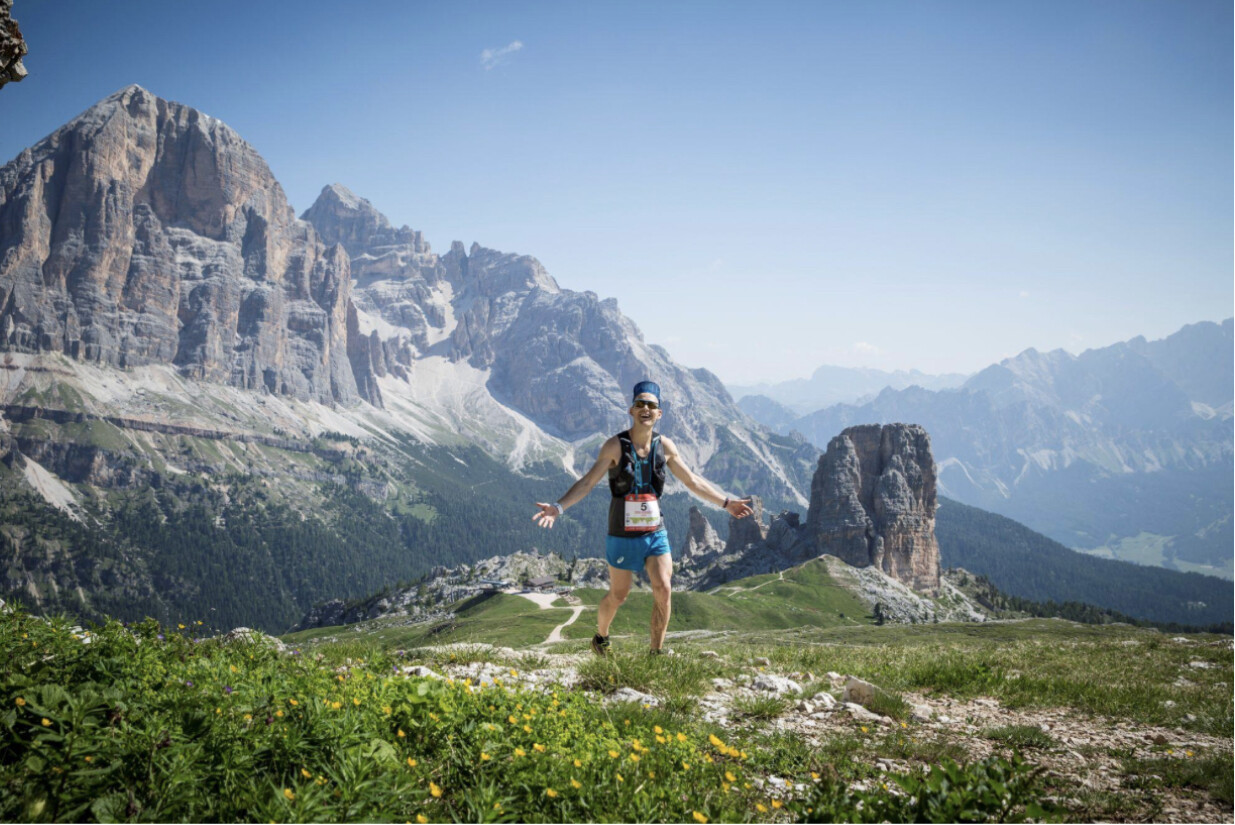
Vallee Du Trail, Chamonix, France
Chamonix, renowned as the valley for trail running and the official host of the prestigious Ultra Trail du Mont Blanc, embodies the essence of the trail running community. Chamonix is a paradise for trail runners, as it offers a remarkable collection of 18 well-marked running routes that meander through picturesque mountain trails, enchanting forests, and serene alpine meadows, all while providing breathtaking panoramas of majestic mountains and icy peaks.
What sets Chamonix apart is its inclusive and hospitable trail running community, which caters to elite athletes and anyone who possesses a deep affection for the mountains and the exhilarating outdoors.
MatterhorUltraks, Switzerland
The Matterhorn, the ultimate representation of a picturesque alpine setting and alpine skiing, takes center stage for trail running during the summer. In Switzerland's Matterhorn Ultraks event, this majestic peak is visible from all directions and can be encircled through various routes ranging from 16 to 46 km.
One particularly remarkable feature is the K30 trail, which spans 31.5 km and includes a thrilling highlight: a suspension bridge crossing the glacier gorge. Zermatt serves as the starting point for all the trails.
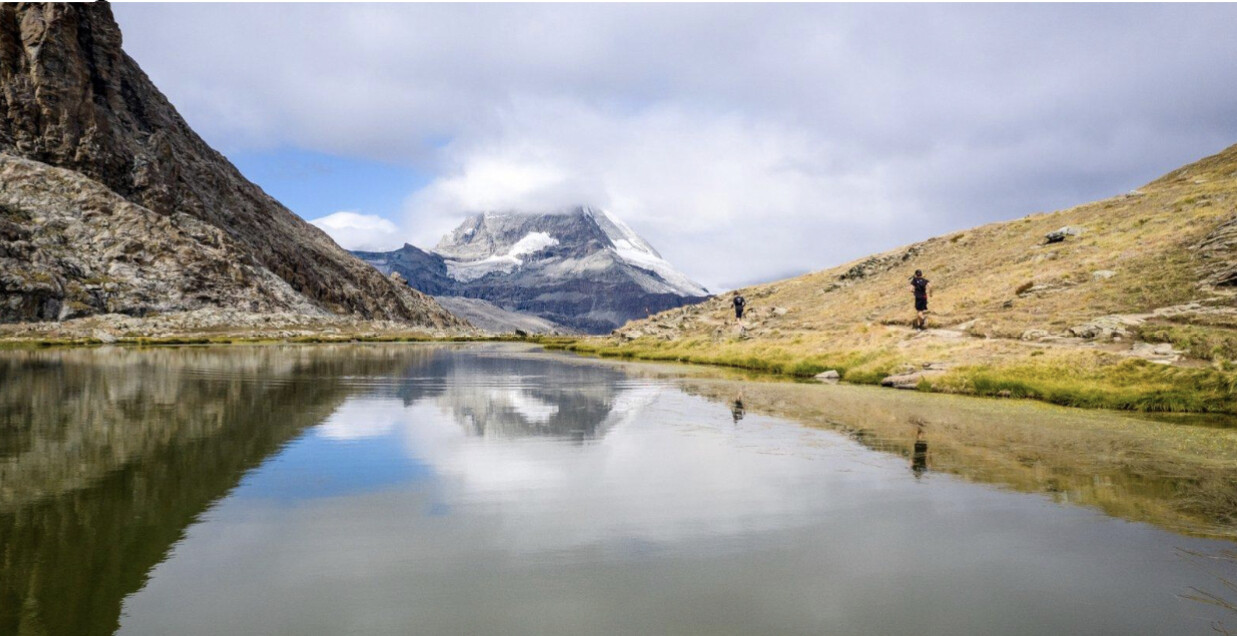
By the way, "Ultraks" represents a series of trail running events at the most awe-inspiring mountain peaks across Europe.
X-TerraTrailRunWorld Championship, Hawaii
The X-Terra Trail Run World Championship is held at Kualoa Ranch, located in Hawaii. This ranch is famously known as Jurassic Valley, as it served as the backdrop for the iconic dinosaur movies.
The trails used in the X-Terra Trail Run World Championship are typically inaccessible to the general public. Therefore, this race offers a unique opportunity for runners to explore and appreciate the natural beauty of this area.
The terrain itself is diverse and awe-inspiring. Participants will have the chance to run alongside cliffs and white sand beaches and navigate their way through dense rainforests.
No prior qualifications are required to participate in the 21-kilometer championship course. This event also includes a 10-kilometer race, a five-kilometer race, and an "adventure walk," making it accessible to runners of all ages and skill levels, from beginners to elite athletes.
(09/22/2023) ⚡AMPChepkirui hunting for new PB in Berlin showdown with Ethiopia's Tigest Assefa
Kenyan Sheila Chepkirui and Ethiopian Tigest Assefa gear up for the Berlin Marathon showdown, aiming to break records and secure Olympics
Kenyan marathoner Sheila Chepkirui is preparing to compete in the women's contest at the 2023 Berlin Marathon against a formidable Ethiopian lineup, led by the defending champion, Tigest Assefa.
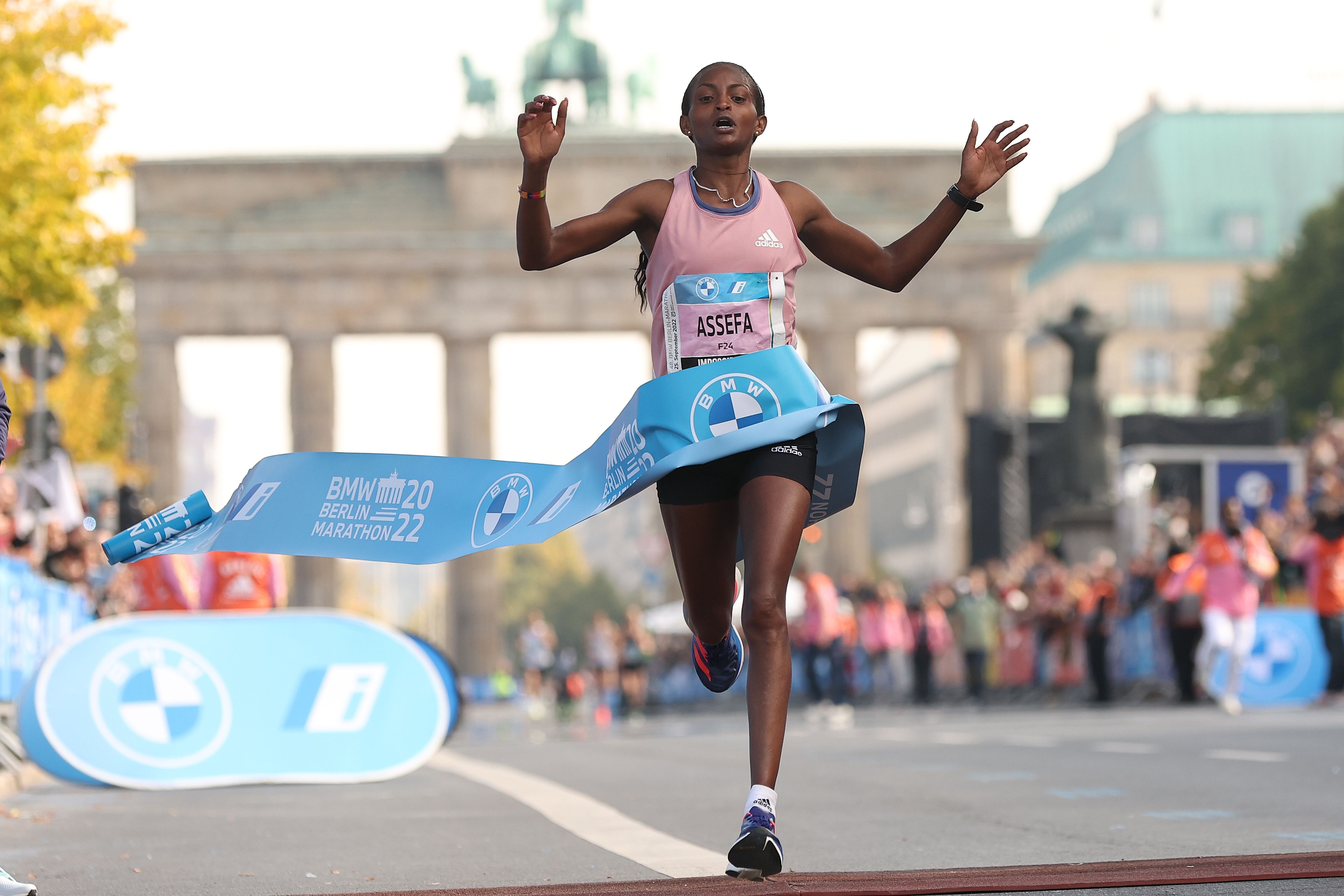
Chepkirui, who finished fourth at the London Marathon last April, carries an impressive personal best of 2:17:29 from the Valencia Marathon last year.
Assefa made headlines last year by posting an incredible time of 2:15:37 at the Berlin Marathon, setting a new course record and establishing herself as one of the fastest marathon runners in history.

Chepkirui, a Kenya Defence Forces soldier and a former Africa cross country champion, has already proven her mettle on the international stage by clinching the 10,000m bronze medal at the 2022 Commonwealth Games in Birmingham, UK.
Ethiopian runners dominate the list of fastest women's runners at this year's Berlin Marathon, with Tigist Abayechew (2:18:03), Workenesh Edesa (2:18:51), and Hiwot Gebrekidan (2:19:10) all boasting impressive sub-2:20 times. Amane Beriso, the winner of last year's Valencia Marathon, adds further depth to the Ethiopian contingent.
However, all eyes will be on Chepkirui, who hails from Kiptere Secondary School in Kericho and boasts a remarkable half marathon personal best of 64:36. Her determination to excel is evident, as she aims to make up for her absence at the Boston Marathon last April due to visa issues.
Chepkirui, who runs under the Ikaika Sports stable, is the sole Kenyan representative in the Berlin Marathon after Margaret Wangare withdrew due to injury. Her marathon journey began at last year's Valencia Marathon, where she impressed with a third-place finish and a personal best time of 2:17:29. Now, she is focused on breaking her own record.
"My aim is to break my personal best. I can imagine going through the first half on Sunday in around 68 minutes," said the 32-year-old Chepkirui.
Tigst Assefa, the defending champion, is also eager to make her mark once again in Berlin. Reflecting on her remarkable performance last year, where she shattered the course record, Assefa expressed her delight at returning to the event.
"Last year's race proved an unexpected success for me. I think I can run even faster on Sunday, a further improvement would be a success," said Tigst Assefa.
While she remains focused on improving her time, she is cautious about discussing the world record of 2:14:04.
Both Chepkirui and Assefa have an additional goal in the BMW Berlin Marathon: securing Olympic qualifying times. Given the fierce competition in Ethiopia and Kenya, achieving the necessary times for Olympic qualification will require exceptional performances.
Two more Ethiopian athletes, Tigist Abayechew with a personal best of 2:18:03 and Workenesh Edesa with a best time of 2:18:51, are making their return to Berlin. Last year, they, along with Tigst Assefa, achieved an unofficial world team record of 6:52:31.
Mark Milde, the race director, expressed optimism about the potential for records to be broken, saying, "The women's course record of 2:15:37 is an absolute world-class time. But, given the strong field, we hope that this can be broken."
The elite women's field at the Berlin Marathon boasts both breadth and depth. Japan's Hitomi Niiya, with a personal best of 2:19:24, has the potential to challenge her national record set 18 years ago on the same course. Another athlete to watch is Ethiopian Senbere Teferi, a world record holder for 5km on the road with a time of 14:29.
In addition to the international competition, a fierce contest is expected among German women. The German contingent, featuring athletes like the Schöneborn twins, Deborah and Rabea, Domenika Mayer, Kristina Hendel, and Laura Hottenrott, has a strong presence with personal bests ranging from 2:25 to 2:27.
(09/22/2023) ⚡AMPby Festus Chuma
BMW Berlin Marathon
The story of the BERLIN-MARATHON is a story of the development of road running. When the first BERLIN-MARATHON was started on 13th October 1974 on a minor road next to the stadium of the organisers‘ club SC Charlottenburg Berlin 286 athletes had entered. The first winners were runners from Berlin: Günter Hallas (2:44:53), who still runs the BERLIN-MARATHON today, and...
more...Eliud Kipchoge is ready for a fast race in Berlin
Once again the best marathon runner of all time will be on the start line of the BMW BERLIN-MARATHON. The double Olympic champion from Kenya, who brought his own world record down to 2:01:09 a year ago in Berlin, will be almost compelled to go all out for a fast time on Sunday, such is the enormously competitive running scene among his compatriots where only an extremely fast time within the Olympic qualifying mark will secure one of the three places for the Kenyan men’s team in the Olympic Marathon in Paris next year.
Eliud Kipchoge’s ambition in Paris is to become the first runner in history to win three Olympic Marathon titles. The Kenyan is aiming to use the BMW BERLIN-MARATHON almost as a springboard to book his place in Paris. While Eliud Kipchoge could strike up a world record pace at the head of the field, Germany’s marathon star Amanal Petros seeks an unprecedented achievement in the history of the BMW BERLIN-MARATHON by becoming the first to set a men’s national record here, a feat so far never accomplished in the previous 48 editions of the event.
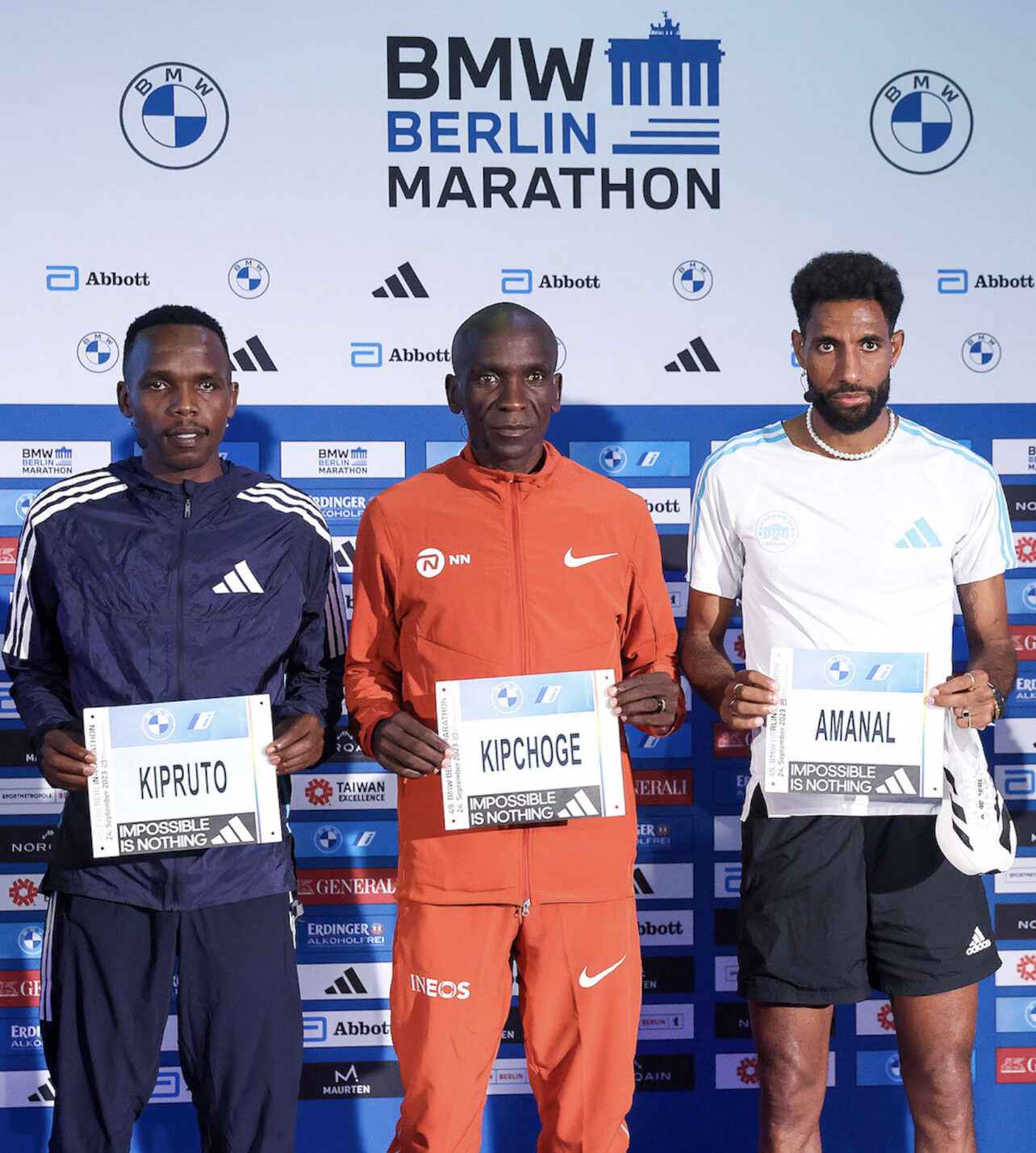
A record number of 47,912 runners from 156 nations have entered the 49th edition of the BMW BERLIN-MARATHON. Germany’s most spectacular road race is part of the Abbott World Marathon Majors (AWMM) and is also a Platinum Label Road Race of World Athletics.
“We feel honoured that the best marathon runner in sporting history, Eliud Kipchoge, has decided to run the BMW BERLIN-MARATHON for a sixth time. This confirms the outstanding status of the event and raises hopes for an exceptional result,” said race director Mark Milde, who has organized Kipchoge’s previous five races in Berlin.
“Berlin for me is like home. Looking at the Olympic Games in Paris next year, I considered which races would be the best preparation for me and Berlin was the best option,” explained Eliud Kipchoge. A year ago his pace for much of the early stages of the race suggested he might even break two hours. “But that was 2022, it’s a different year now and a different race,” said the 38-year-old. Winning in Berlin for the fifth time would give him more titles here than any other champion. He is currently level with the legendary Ethiopian Haile Gebrselassie on four victories.
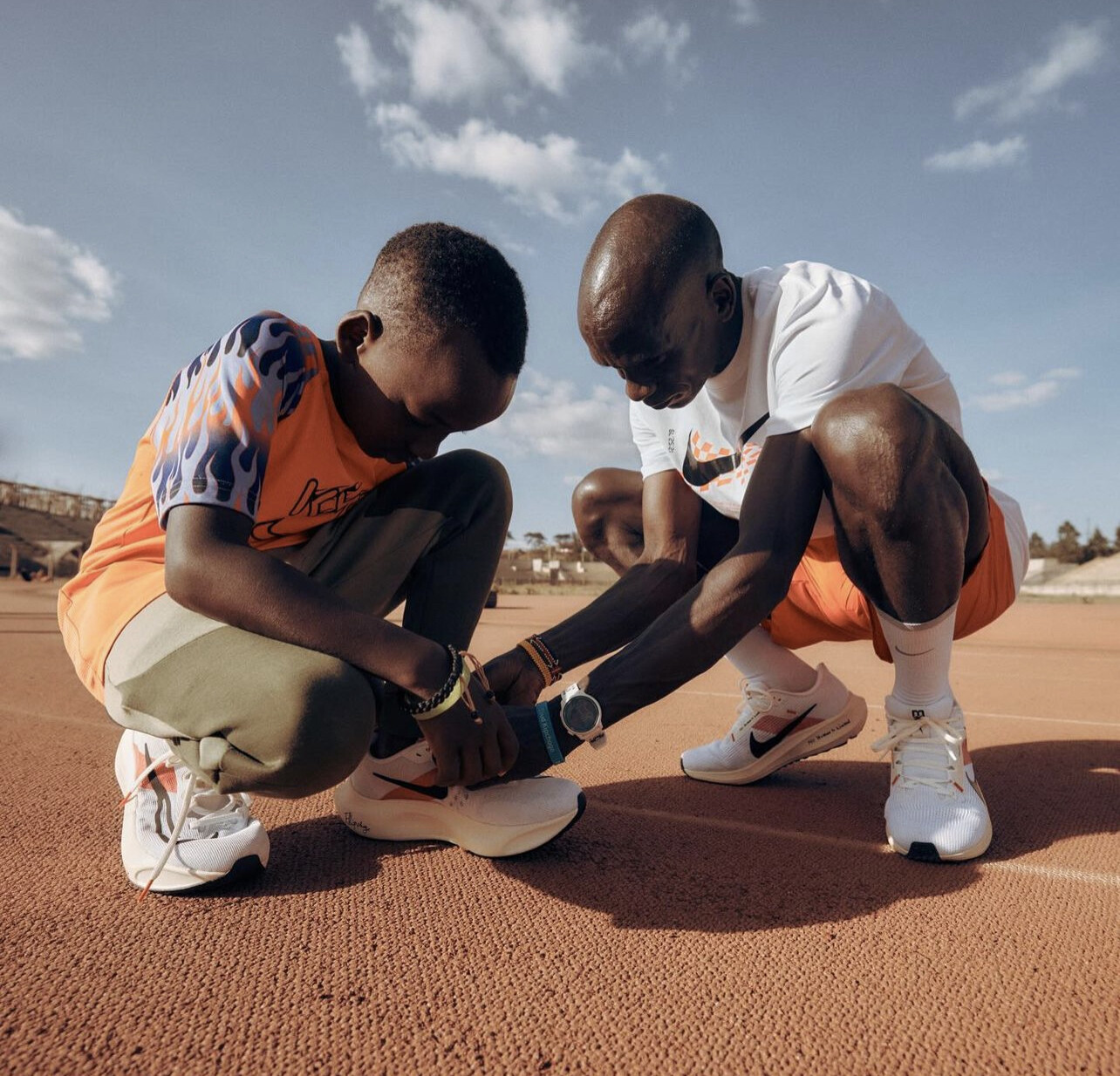
It is not beyond the bounds of possibility that Eliud Kipchoge breaks the world record for the third time in Berlin, although he did not announce any definite goals at the press conference. “I’m nervous, but that shows I’m ready,” said Kipchoge. “I’ll try to run a good time.” Of his 20 marathons, Eliud Kipchoge has emerged victorious in all but three, in itself a unique achievement.
The man with the second fastest time going into the race is also Kenyan, Amos Kipruto. He ran his personal best of 2:03:13 in Tokyo last year, finishing runner-up to Eliud Kipchoge. “My aim on Sunday is to run a personal best,” stated Amos Kipruto, whose career highlight so far is winning the London Marathon last year.
A dozen men on the start list show best times of under 2:06, proof of the strength in depth among the elite in this year’s BMW BERLIN-MARATHON. “It would be fair to say that every elite runners comes to Berlin to run their personal best,” admitted Mark Milde.
Amanal Petros has as his goal in his BMW BERLIN-MARATHON debut that of breaking his own German record of 2:06:07 by a clear margin. “I’ve trained in Kenya for almost four months at altitude of 2,400 metres, concentrating entirely on Berlin. That was very challenging,” said the 28-year-old. “Going through halfway in around 62 minutes is feasible but we can adjust the pace at any time.”
Not only the German but the Swiss national record for the marathon could come under pressure. Tadesse Abraham improved his best to 2:06:38 as a 39-year-old last year in Zurich. Now turned 41, he might even threaten the world masters record of none other than Kenenisa Bekele, who ran 2:05:53 in London last year.
Men’s elite runners with personal bests
Eliud Kipchoge KEN 2:01:09
not record eligible:1:59:40,2
Amos KiprutoKEN2:03:13
Jonathan MaiyoKEN2:04:56
Eliud Kiptanui KEN 2:05:21
Ghirmay Ghebreslassie ERI 2:05:34
Ronald KorirKEN2:05:37
Tadu Abate ETH 2:05:38
Philemon KiplimoKEN2:05:44
Enock Onchari KEN 2:05:47
Mark Korir KEN 2:05:49
Andualem ShiferawETH2:05:52
Haftu TekluETH2:05:53
Amanal PetrosGER2:06:27
Josphat BoitKEN2:06:34
Tadesse Abraham SUI 2:06:38
Okubay Tsegay ERI2:06:46
Abel KipchumbaKEN2:06:49
Yusuke Ogura JPN2:06:51
Denis ChirchirKEN2:07:17
Eyob Faniel ITA 2:07:19
Justus KangogoKEN2:07:40
Titus Kipkosgei KEN2:07:46
Godadaw BelachewISR2:07:54
Dominic Nyairo KEN2:08:13
Derseh Kindie ETH 2:08:23
Guojian Dong CHN2:08:28
Liam Adams AUS 2:08:39
Scott FaubleUSA2:08:52
Hendrik Pfeiffer GER 2:10:18
Samuel Fitwi GER 2:12:14
Konstantin Wedel GER 2:13:02
(09/22/2023) ⚡AMPBMW Berlin Marathon
The story of the BERLIN-MARATHON is a story of the development of road running. When the first BERLIN-MARATHON was started on 13th October 1974 on a minor road next to the stadium of the organisers‘ club SC Charlottenburg Berlin 286 athletes had entered. The first winners were runners from Berlin: Günter Hallas (2:44:53), who still runs the BERLIN-MARATHON today, and...
more...Five tips for pre-run fueling
Nothing new, only tried and true–that’s the mantra runners follow when it comes to deciding what to eat the morning of and during their race. But figuring out what “tried and true” is for you can be unexpectedly challenging. Use these tips during your training to help you determine what works best for your body, so your hopes for a new PB don’t get dashed by mid-race stomach cramps.
1.- Use a journal

Write down what you ate before (and during, if you’re training for a longer race) your run, along with notes about how you felt during the run. Did your stomach feel unsettled, or was it smooth sailing? Did you feel energetic, or like you were dragging your feet? (Keep in mind that if the weather is unexpectedly warm, that could slow you down significantly and affect your energy level, which may be unrelated to your fuelling.)
2.- Plan ahead

Decide what you’re going to eat before your run, and make sure you have everything you need to prepare it. If possible, make your pre-run meal the night before, so it’s easy to grab in the morning, or at least,assemble your ingredients, so it’s quick and easy to make. This is especially important if you’ve got an early morning run on the calendar. Saving some time on food prep allows you to relax a bit before you head out, which can improve your digestion and help you feel better during your run.
3.- Start small
It’s important to fuel before a run that’s longer than 60 minutes, but if this is your first time training for a longer race and you’re not used to eating before you run, start with something small, like crackers or half a banana. As you continue to practise pre-run fuelling, your stomach will become more accustomed to it. Try to eat at least an hour before your warmup.
4.- Test on your easy day
Long runs are the perfect time to test new foods or fuelling strategies; so are recovery runs. Avoid experimenting with anything new before a key workout.
5.- Know what you need
Most runners should eat about 50-60 grams of carbohydrate before a long run to top up their glycogen stores. A cup of cooked oatmeal with a banana will put you right around the 50-60 mark, so will a couple of slices of toast topped with jam or honey.
Remember, different foods work for different runners, so just because something works for your running buddy doesn’t mean it’ll work for you, too. Always take the time to test out new foods ahead of time, and prepare in advance to make sure you have what you need on race day.
(09/22/2023) ⚡AMPby Brittany Hambleton
Paul Chelimo planning to spoil Eliud Kipchoge's party in Berlin
Paul Chelio intends to make his marathon debut at Sunday's Berlin Marathon with one goal in mind, to spoil the party.
All roads will lead to the Berlin Marathon on Sunday where Eliud Kipchoge will be planning to lower his time as he races on one of his favourite courses.
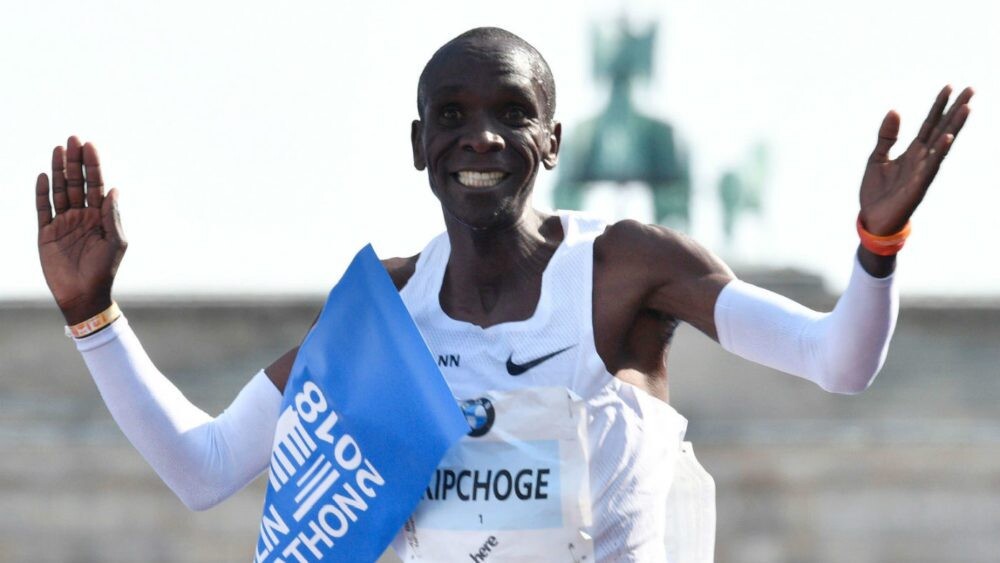
However, many athletes will be hoping to stop him from reigning supreme, and in particular, Kenyan-born American Paul Chelimo will be hoping to stop his dominance.
Chelimo is yet to run a marathon and he has shared his thoughts on making his debut in the German capital with a goal in mind.
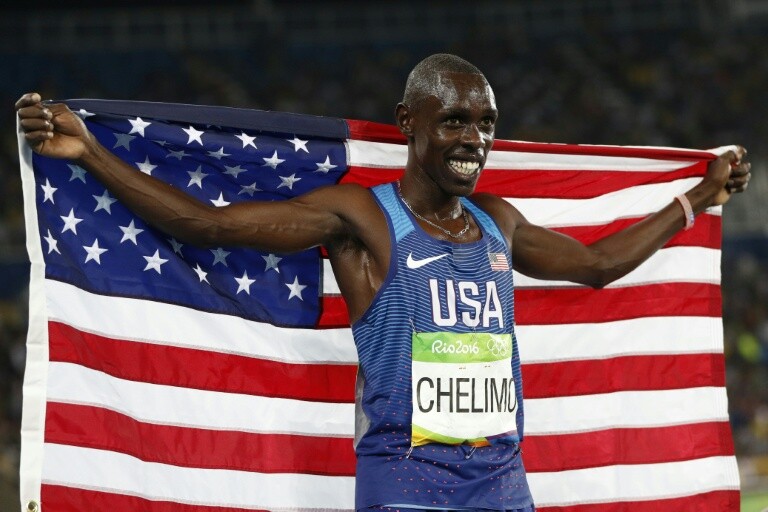
In a post on his Twitter page, he said: “Might show up to Berlin this weekend and spoil the party.”
Chelimo has had a great season on the track so far but has failed to impress in the road races, finishing 14th at the Berlin Half Marathon and 20th at the Valencia 10km race.
On the track, he has managed to bag wins in the men’s 10,000m at the Night of the 10,000m PB’s and also win the 5000m at the Track Night Vienna.
If he makes up his mind to race at the Berlin Marathon, he will definitely have it rough trying to stop the world record holder over the distance.
Kipchoge started off the season on a low note but he has since bounced back and will be looking to impress in the streets of Berlin. He has won there four times and he will be looking to bag his fifth title.
It remains one of his favourite course since he has also set the world record twice on the same streets. It will surely take concerted efforts to bring him down.
(09/22/2023) ⚡AMPby Abigael Wuafula
BMW Berlin Marathon
The story of the BERLIN-MARATHON is a story of the development of road running. When the first BERLIN-MARATHON was started on 13th October 1974 on a minor road next to the stadium of the organisers‘ club SC Charlottenburg Berlin 286 athletes had entered. The first winners were runners from Berlin: Günter Hallas (2:44:53), who still runs the BERLIN-MARATHON today, and...
more...How to handle missing your goal race
Running is an amazing sport that offers plenty of benefits, but it also carries a high risk for injury. As the fall racing season gets underway in Canada, the unfortunate reality is that some of us aren’t going to make it to the start line of our goal races. If you’re among the unlucky ones, we feel you. Getting sidelined by an injury is disappointing; you might even feel devastated, for a time. Here’s our best step-by-step advice for how to handle the heartbreak.
Step one: accept

Many runners go through a period of denial when an injury threatens their racing plans. While this reaction is understandable, it’s also problematic. Denial can cause you to push through an injury when you shouldn’t, or try to rush the rehab process so you can get back to running, only to ultimately underperform at your goal race (and potentially also re-injure yourself).
That’s why the first step is acceptance. It’s tough, we know, but once you accept the fact that you likely won’t be on the start line as planned, you can switch gears and come up with a rehab plan, so you can get back to running and chasing new goals.

Step two: grieve
Accepting your fate doesn’t mean you can’t be sad about it. In fact, we encourage you to take a day or two to just be sad about your circumstances.
Getting injured sucks at any time of year; it’s even worse when you’re preparing for a goal race. Go ahead and feel the feels, just don’t get stuck there.
Step three: reflect
Once you’re (mostly) done being sad, take some time to think about your training and try to identify what you could have done differently to avoid getting injured. Did you increase your mileage too quickly? Were you getting enough sleep? How was your nutrition? The purpose of this isn’t to beat yourself up, but to try and pinpoint the root cause of your injury so you can avoid the same fate in the future.
Step four: take action
Now that you’ve identified the reason (or reasons) you got injured, the next step is doing something about it. Of course, this likely involves taking some time off running, but for most runners, simply stopping and waiting for the injury to go away isn’t enough. We strongly encourage you to book an appointment with a physiotherapist or sports medicine specialist who can help you not only heal your injury, but also prevent it in the future.
Step five: take care of yourself
Everybody’s different, so what you do during your time away from running is up to you. If it’s the social aspect of being with your running friends that you miss the most, continue to go out to races and cheer them on from the sidelines. If watching others run while you can’t sounds like torture, then wish your running buddies well and tell them you’ll see them at the after party.
Being injured is really hard, especially when the timeline for when you can hit the road again is murky. Remember, running isn’t going anywhere, so whether you have to take a few weeks off or a few months, healing your body is more important than any race. Be patient with yourself, take this time to engage in other activities or hobbies, and when you eventually return to running, you’ll appreciate it even more than you did before.
(09/21/2023) ⚡AMPby Brittany Hambleton
Scott Fauble Is Aiming for the Olympic Standard at Berlin Marathon
Fauble will hope to become first American man to hit 2:08:10 Olympic standard in Sunday’s race
Scott Fauble was not planning on running a fall marathon in 2023. On April 17, he finished 7th at the Boston Marathon to earn top American honors — just as he did in Boston and New York in 2022. His time of 2:09:44 represented the fourth sub-2:10 of his career, making him just the seventh American to accomplish that feat after Ryan Hall, Galen Rupp, Meb Keflezighi, Khalid Khannouchi, Alberto Salazar, and Mbarak Hussein. In previous years, a top-10 finish at a World Marathon Major counted as an automatic qualifying standard for the Olympic marathon; Fauble, with three straight top-10 finishes on his resume, figured he was in good position for Paris and could shift his focus to the US Olympic Trials in February 2024.
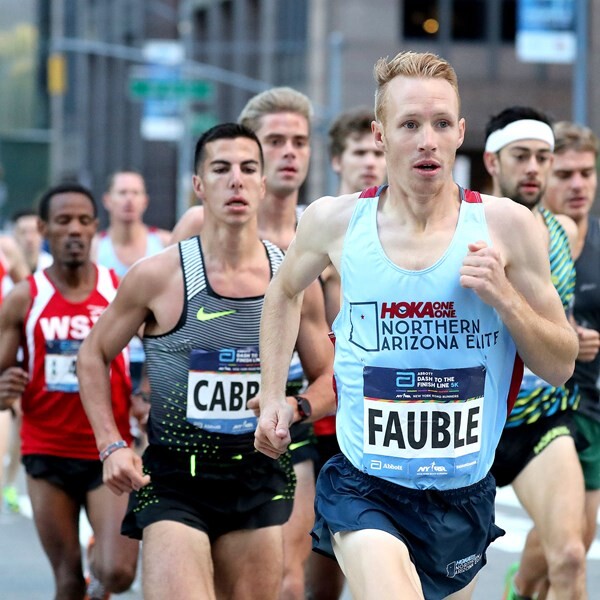
But the Olympic qualifying system for 2024 is far more complicated than in previous years, with ever-shifting world rankings and things like “quota reallocation places” creating confusion among fans and athletes alike. Any athlete ranked in the top 65 of the filtered “Road to Paris” list on January 30, 2024, is considered qualified…except the “Road to Paris” list does not currently exist. After Boston, Fauble, who is currently ranked 122nd* — that’s in the world rankings, which is a different list than “Road to Paris” — tried to take a closer look at where he stood, creating spreadsheets and projecting where he might rank after accounting for time qualifiers, the three-athlete-per-country limit, and potential changes after the 2023 fall marathon season. After a while, his brain began to hurt.
“I felt like the Pepe Silvia meme from It’s Always Sunny in Philadelphia,” Fauble said. “…It was like, this is complicated and stressful and I can just get the standard. This doesn’t need to be an issue.”
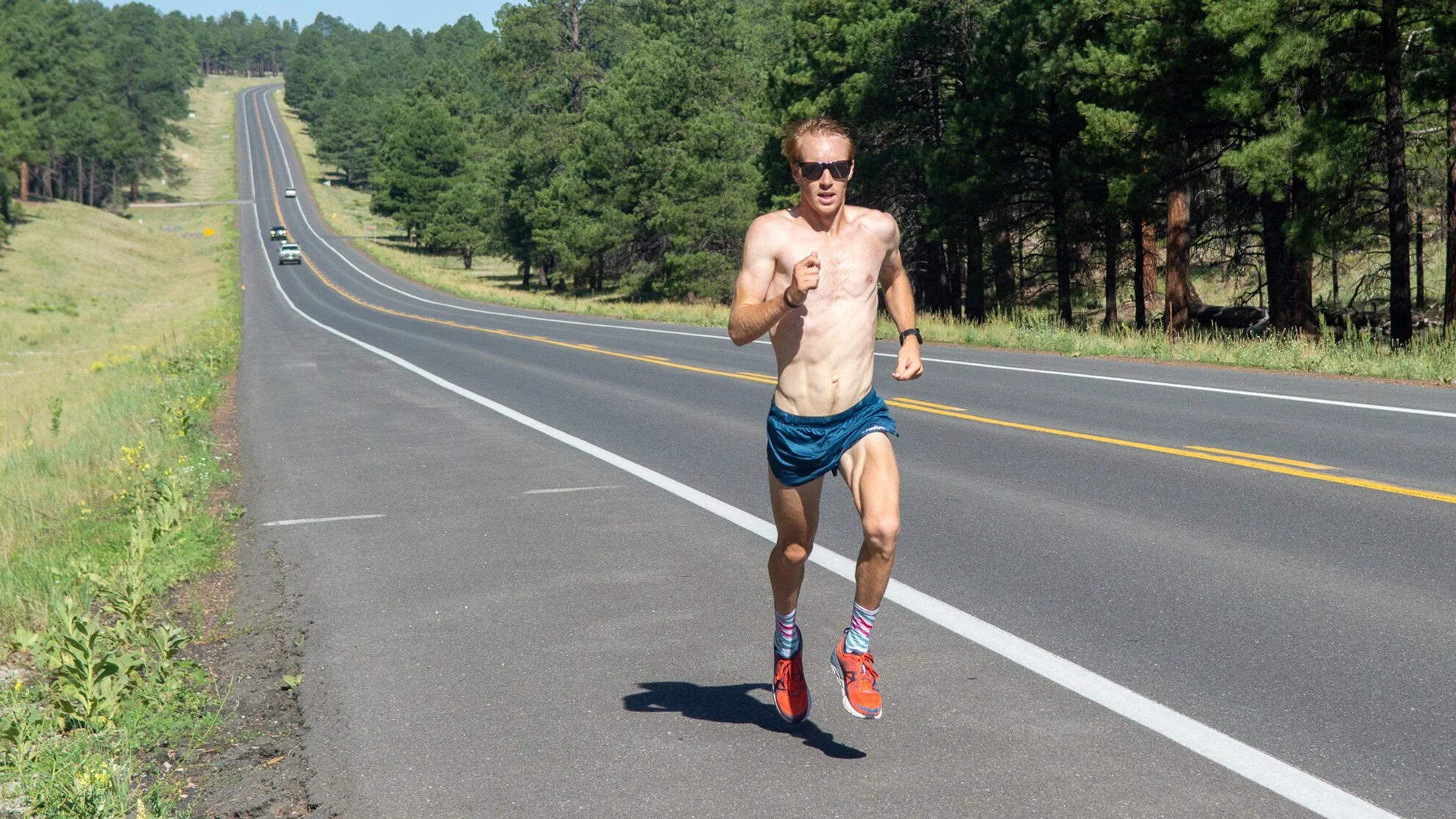
That is why Fauble, begrudgingly, made the decision to run the Berlin Marathon. He was not initially looking forward to the race, but with a strong training block in Boulder behind him and the race just four days away, he has changed his tune.
“I’m very excited,” Fauble said. “I wasn’t planning on doing a fall marathon after Boston and I had to figure out ways to get excited for it and I think that’s one of the things that has fired me up, actually seeing how fast I can go and pushing for a PR as opposed to letting the race play out and seeing what I can do.”
Chasing a time is a dramatically different approach to Fauble’s typical marathon M.O. Of the nine marathons he has run, only two have featured pacemakers: his debut in Frankfurt in 2017, and the Marathon Project in 2020. When Fauble runs Boston and New York, the hilly courses where he has found the greatest success, he does not enter with a goal time in mind. Instead, Fauble will wait until the race begins and assess a number of factors — the weather, how he’s feeling, how fast the other runners are going — before deciding which pace to run. Typically, that has led to Fauble letting the leaders go early and picking off stragglers as they fade over the second half of the race.
Berlin will be different. There are no hills to account for, and while Fauble will still fight for every place, he is not hiding the fact that the primary goal of this race is to hit a time. Specifically, the Olympic standard of 2:08:10. Only five Americans have ever bettered that time in history, but Fauble, who ran his personal best of 2:08:52 in Boston in 2022, believes he is capable of doing it.
“I don’t think that me running in the 2:07s is a huge stretch of the imagination,” said Fauble, who has removed some of the hillier routes from his training under coach Joe Bosshard but has otherwise prepared similarly for Berlin as he would Boston or New York. “I think I’ve been in that kind of shape a bunch of times.”
Every American marathoner will be rooting for Fauble
Currently, no male American marathoner has earned the 2024 Olympic standard — either by hitting the time standard of 2:08:10 or by finishing in the top five of a Platinum Label Marathon (which includes Berlin). It’s pvery likely someone such as Fauble or Conner Mantz will be ranked in the top 65 of the “Road to Paris” list at the end of January, but with the Olympic Trials less than five months away, US marathoners are getting antsy.
American pros rarely run the Berlin Marathon, typically opting for Chicago or New York in the fall — both of which pay much bigger appearance fees to American runners. But this fall, many are bypassing New York because of the date (just 13 weeks before the Trials) and the course (too slow for a shot at the Olympic standard). A sizeable crew, led by Mantz and Galen Rupp, will be in Chicago, while a far larger number than usual have opted for Berlin.
Berlin’s course is just as fast as Chicago’s, if not faster. It’s also two weeks before Chicago — an extra two weeks to prepare for the Trials — and the weather is typically a little better in Berlin than Chicago. That’s why Keira D’Amato opted for Berlin over Chicago for her American record attempt last year. It’s also why 60:02 half marathoner Teshome Mekonen — another American targeting the Olympic standard this fall — chose Berlin over Chicago.
In addition to Fauble and Mekonen, the 2023 Berlin field also includes 2016 Olympian Jared Ward, 2021 Olympian Jake Riley, and Tyler Pennel, who has finished 5th and 11th at the last two Olympic Marathon Trials. All of them will be looking to run fast. And every other American marathoner will be hoping they do the same.
That’s because of a new provision in the Olympic qualification system which states that any country with three qualified athletes may choose to send any three athletes it wants to Paris — as long as they have run at least 2:11:30 (men) or 2:29:30 (women) within the qualifying window. That’s why every American will be rooting for Fauble and others to run fast this fall: if the US has three athletes with the standard, then anyone who has run under 2:11:30 has the opportunity to make the team by finishing in the top three at the Trials.
The above provision, which World Athletics is referring to as “quota reallocation” means that someone such as Fauble could run the Olympic standard and open up a spot in Paris for an American athlete who ends up beating him at the Trials — thus taking a spot that would not otherwise be available had Fauble not run the standard. Fauble, obviously, is hoping such a scenario does not come to pass. But he is aware of the possibility and has accepted it as part of his reality.
“I don’t mind it,” Fauble said. “Sports have never really been about identifying the best team or the best athlete. They’re an entertainment product and they overemphasize very specific days on the calendar. Even if I was the only one with the standard and I get beat at the Trials, the 73-9 Warriors didn’t win the NBA title that year. You’ve gotta do it on the big days. That’s what being a professional athlete is about.”
(09/21/2023) ⚡AMPby Jonathan Gault
BMW Berlin Marathon
The story of the BERLIN-MARATHON is a story of the development of road running. When the first BERLIN-MARATHON was started on 13th October 1974 on a minor road next to the stadium of the organisers‘ club SC Charlottenburg Berlin 286 athletes had entered. The first winners were runners from Berlin: Günter Hallas (2:44:53), who still runs the BERLIN-MARATHON today, and...
more...Cam Levins to race close to home at Royal Victoria Half-Marathon
Canada’s marathon and half-marathon record holder Cam Levins has chosen to race close to home at the Royal Victoria Half-Marathon on Oct. 8, in his preparations for the 2023 TCS New York City Marathon on Nov. 5.
Last week, Levins pulled out of the half-marathon at the 2023 World Athletics Road Running Championships in Riga, Latvia. Levins said he underestimated how significant the travel and recovery would be to and from the event. The championships would be a 20-hour trip for Levins each way with two layovers if he flew from his home in Portland, Ore. Levins and his coach Jim Finlayson decided the long trip would not be ideal in his build for New York.
Canada’s marathon and half-marathon record holder Cam Levins has chosen to race close to home at the Royal Victoria Half-Marathon on Oct. 8, in his preparations for the 2023 TCS New York City Marathon on Nov. 5.
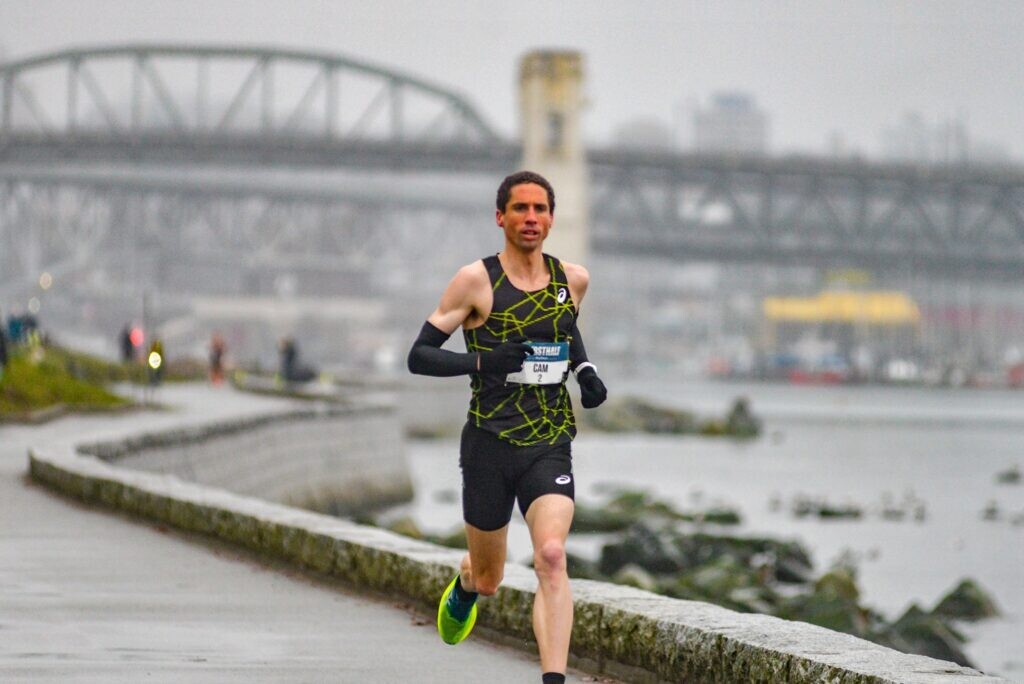
Last week, Levins pulled out of the half-marathon at the 2023 World Athletics Road Running Championships in Riga, Latvia. Levins said he underestimated how significant the travel and recovery would be to and from the event. The championships would be a 20-hour trip for Levins each way with two layovers if he flew from his home in Portland, Ore. Levins and his coach Jim Finlayson decided the long trip would not be ideal in his build for New York.
The half-marathon will be close to home for Levins, who grew up three hours north of Victoria in Black Creek, B.C., where his parents, Gus and Barb Levins, still reside.
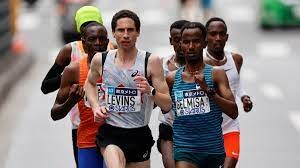
The Royal Victoria Marathon weekend is experiencing a resurgence after being disrupted by the pandemic. Last year saw the long-awaited return of the marathon, with 7,934 participants coming back after the pandemic hiatus. This year, organizers are optimistic about the event’s growth, aiming to reach 10,000 participants.
In March, the 34-year-old broke his Canadian marathon record for the second time in less than a year, clocking an impressive 2:05:36 for fifth place at the 2023 Tokyo Marathon. This was also the fastest time ever recorded by a North American, surpassing American Khalid Khannouchi’s 2:05:38 from the 2002 London Marathon.
Levins’s remarkable run in Tokyo not only met the Olympic standard of 2:08:10 but also secured his spot on Team Canada’s marathon squad for the 2024 Paris Olympics next July. His journey to the 2023 New York Marathon in November is all in preparation for his pursuit of Olympic glory in Paris, which is expected to be one of the most difficult Olympic marathon courses to date.
(09/21/2023) ⚡AMPby Marley Dickinson
Royal Victoria Marathon
We are one of Canada's premier running event, offering athletes an unmatchable running experience on the pristine West Coast. Our world-class, record-breaking course is designed by runners, for runners. As the only Certified Boston Qualifier on Vancouver Island, come join us to compete, to conquer and to move from warm-up to reward. ...
more...What are isometric exercises, and why should runners do them?
If you haven’t tried isometric exercises (or are unclear on what the term means) you’re not alone. This oft-neglected type of strength training involves contracting a muscle without changing its length, with no visible movement at the joint. Instead of the muscle lengthening or shortening, as it does in isotonic exercises (like bicep curls or squats, for example), the muscle remains static, exerting force against an immovable object or resisting an opposing force.
Isometric exercises are characterized by holding a position (or maintaining a contraction) for a set period. Because they require little to no equipment, isometric exercises super easy and convenient, and perfect to add to your routine tonight.
Why isometric exercises?
For runners, isometric exercises are often used in injury rehab, because they allow you to strengthen certain muscles without putting excessive strain on injured tissues. They’re time-efficient, targeting specific muscle groups, and easily integrated into a warmup or cool-down. They can also help build strength and stability in specific muscle groups, which is essential for maintaining proper running form, building endurance and preventing injuries.
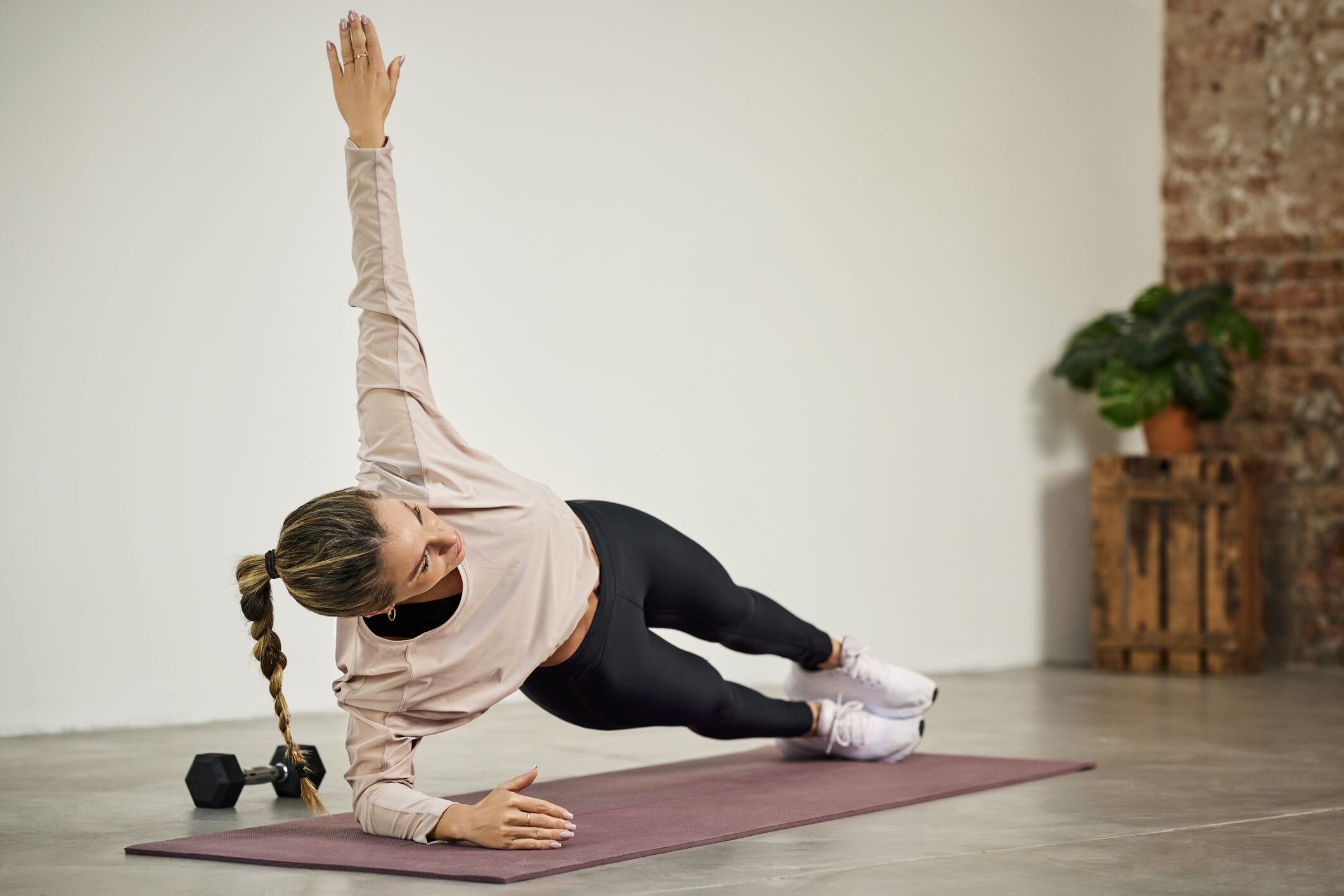
Planks
Planks build postural strength around your lower core, which is essential for maintaining good biomechanics, especially when you’re feeling fatigued near the end of a hard run or race.
Begin in a push-up position and straighten your arms, tighten your core and straighten your legs. Focus on keeping your butt in a straight line between your shoulders and heels.

Once you have your body positioned, hold the push-up position for two to three minutes. Stop when you can no longer hold the pose–having good technique is more important than how long you can hold the plank. Add 30-second increments until can hold for several minutes.
Try different plank variations, supporting yourself on your elbows, or by lifting one leg toward your chest. Advance to adding side planks.
Single-leg balance
Standing on one leg for an extended period (with eyes open, which is easiser, or closed, which is more challenging) can help improve balance and stability, which is essential for navigating uneven terrain while running. It can also help with proprioception (awareness of where the ground is in relation to your body), and strengthens the muscles around the ankle, knee, and hip joints.
Find a flat, stable surface to stand on. Begin standing upright with your feet hip-width apart and your arms relaxed at your sides, and shift your weight onto one leg. Keep a slight bend in your knee to avoid locking it.
Engage your core muscles by gently pulling your navel toward your spine, and slowly lift the foot of your non-weight-bearing leg off the ground, bringing it to a position where it is just hovering above the floor. Your raised thigh should be parallel to the ground, and your knee should be bent at a 90-degree angle. You can point your toes or flex your ankle; choose a comfortable position.
Gaze at a fixed spot in front of you to help with balance. Beginners can start by holding 15-30 seconds per leg and gradually work up to 60 seconds or longer as they improve their balance.
Release and repeat on the other side.
Wall-sits
This exercise helps create a powerful and resilient stride, improving leg endurance.
Place your back flat against the wall, and slide down until your thighs are at a 90-degree angle to your back (and to the floor). Keeping your lower back flat against the wall, take a deep breath and hold the sitting or chair position for two to three minutes.
It’s OK if you find that challenging–most beginners struggle to hold until the two-minute mark. Add 30-second increments over time, until you reach seven to 10 minutes or complete fatigue.
(09/21/2023) ⚡AMPby Keeley Milne
Kenyan Caroline Jepchirchir headlines Munich Marathon
Kenya’s Caroline Jepchirchir will lead a strong Kenyan team at the 37th edition of the Generali Munich Marathon scheduled on October 08, 2023 Olympic Stadium in Munich, Germany.
The 35 year-old who is also the reigning Iten Marathon champion, comes to this race with a life time best of 2:26.11 that she got last year at the Enschede Marathon where she finished in fourth place.
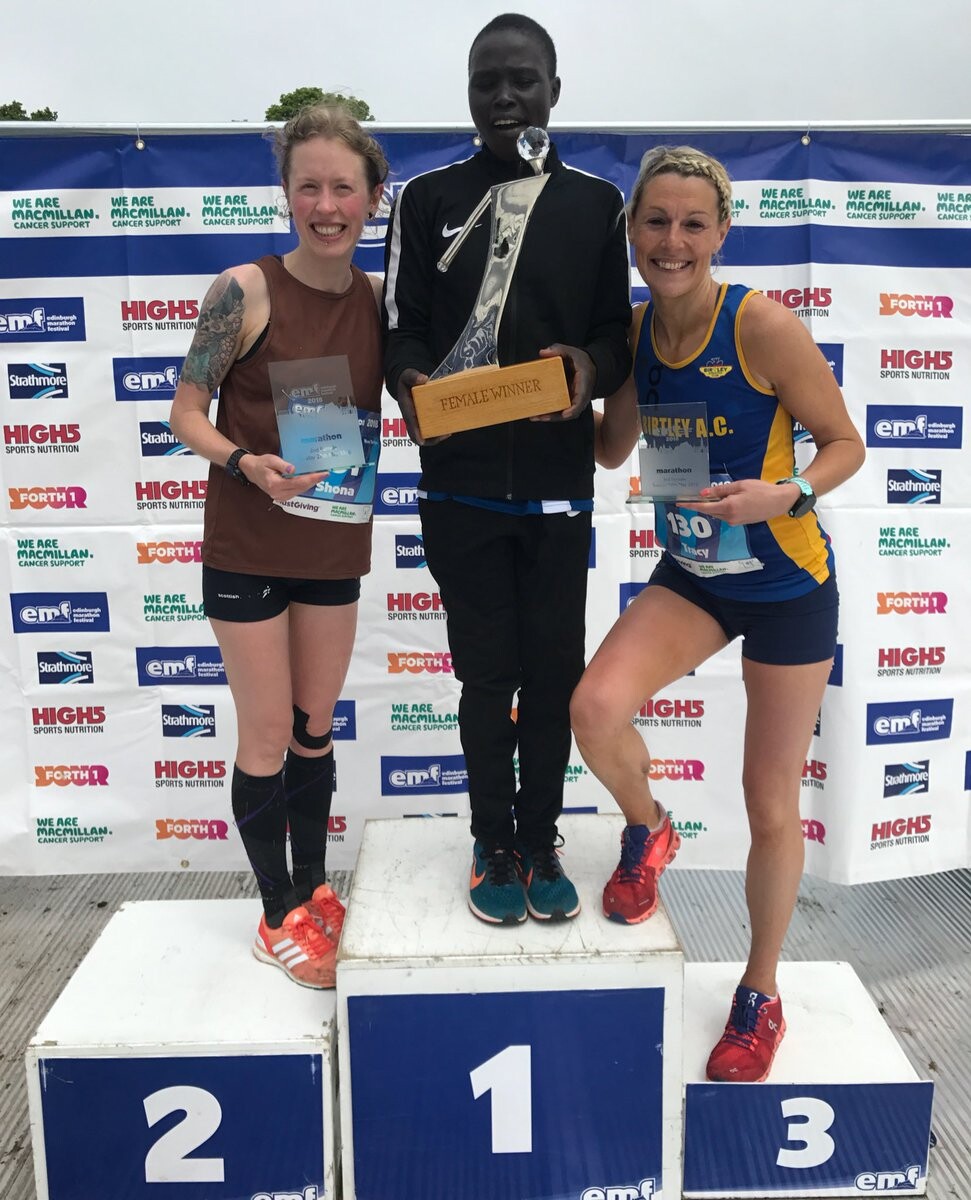
Jepchirchir will have to get past Tecla Chebet who has won six of her seven marathons with her latest being Linz Marathon where she posted her personal best of 2:27.18.
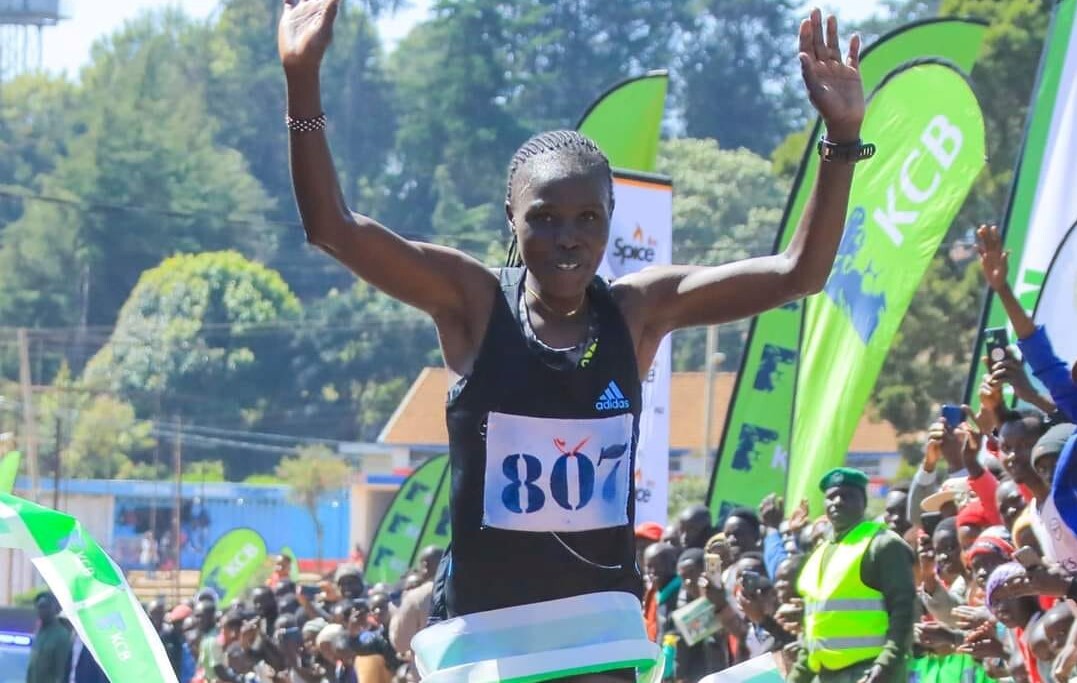
The two Kenyans will be chasing to lower the race course record of 2:23.09 that was set last year by their compatriot Agnes Keiono who destroyed the previous record of 2:33.09 that had stood for thirty one years by Karolina Szabó from Hungary.
“In 2022 we successfully came back with international elite racing and it is now our aim to further establish our position at this higher level. Last year’s course records proved that our course is not only very attractive regarding the sightseeing features but very fast as well. A marathon weekend trip to Munich is definitely worth it, “said Race Director Gernot Weigl.
(09/20/2023) ⚡AMPby John Vaselyne
Generali Munich Marathon
The GENERALI MUNICH MARATHON has held the elite label of the WORLD ATHLETICS since 2020 and the marathon route is officially measured and recognized. The route runs from the Olympic Park and Schwabing to Leopoldstraße with the Siegestor, via Königsplatz and the Pinakotheken to the English Garden. From there past the Chinese Tower and Art Nouveau villas in Bogenhausen, through...
more...Try this long tempo during your marathon build
Tempo runs are a key part of marathon training. With a unique blend of speed and endurance, they have helped many runners reach their personal bests and beyond. We know how great they are, and so does Canadian marathon record holder Natasha Wodak. The workout below is inspired by the tempo session she did before competing in the marathon at the World Track and Field Championships in Budapest, where she landed a the top 15 finish. Even with our modifications, this is a tough workout, so don’t say we didn’t warn you!
Wodak’s workout
2 kilometers at tempo pace, 1:30 rest
8 kilometers, 3:00 rest
2 kilometers, 1:30 rest
6 kilometers, 3:00 rest
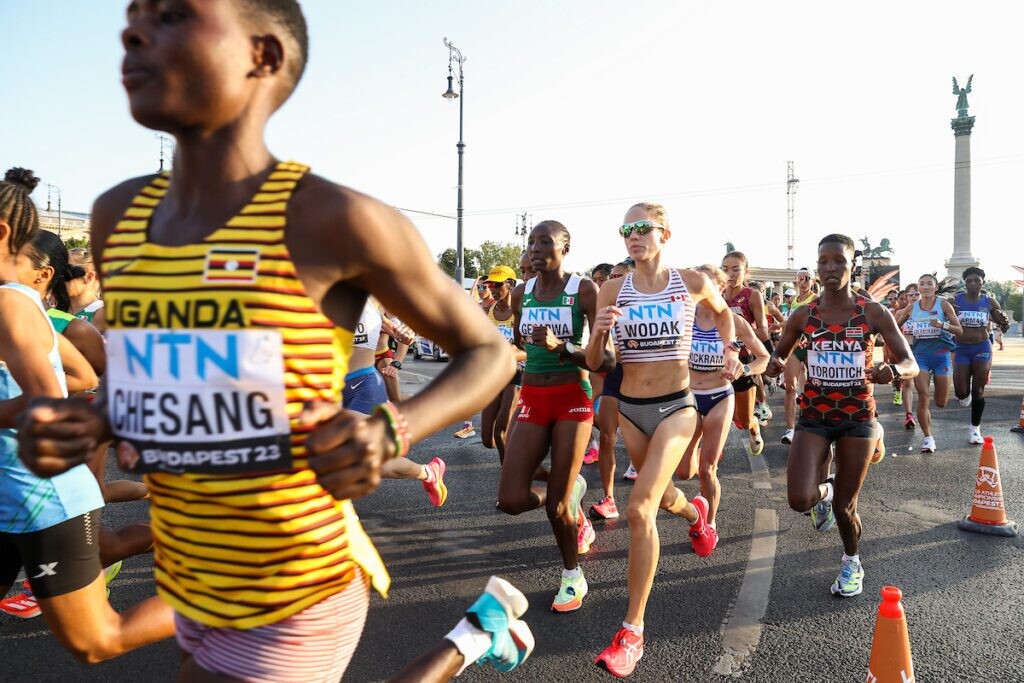
2 kilometers, 1:30 rest
4 kilometers, 3:00 rest
Each 2-kilometer section was run at a slightly faster pace than the longer sections in between. In total, this workout was a whopping 24 kilometres–and that’s without a warmup or a cool down. Of course, this is far too much for us mortals, but we can apply the concept (breaking the tempo run into sections and alternating between slower and faster) and apply it to a more attainable marathon training session.
Modified workout
Our modification to this mammoth workout is simple: cut each section of the tempo in half. That makes the total distance 12 kilometers, which is much more realistic for most runners.
The goal of this workout is to run the one-kilometer sections (i.e. the first, third and fifth intervals) at your goal marathon pace, and the other sections slightly slower. This is a great workout to incorporate into a long run when you’re already doing higher mileage, or to use as a stand-alone tempo day.
Warm-up: 10-15 minutes easy jog
Workout:
1 kilometer at marathon goal pace; 1:30 rest
4 kilometers slightly slower than marathon goal pace; 3:00 rest
1 kilometer at marathon goal pace; 1:30 rest
3 kilometers slightly slower than marathon goal pace; 3:00 rest
1 kilometer at marathon goal pace; 1:30 rest
2 kilometers slightly slower than marathon goal pace
Cooldown: 10-15 minutes easy jog
(09/20/2023) ⚡AMPby Brittany Hambleton
Kenyan Sharon Cherop to chase after personal best at Buenos Aires Marathon
Former world championships bronze medalist Sharon Cherop will be chasing after a personal best at the Buenos Aires marathon set for this Sunday in Argentina.
Cherop, who has a PB of 2:22:28, said she has been hard at work in preparing for the South American race. She wants to atone for her defeat by former world champion Ruth Chenpngetich in the 21km race during the Standard Chartered Marathon last month.
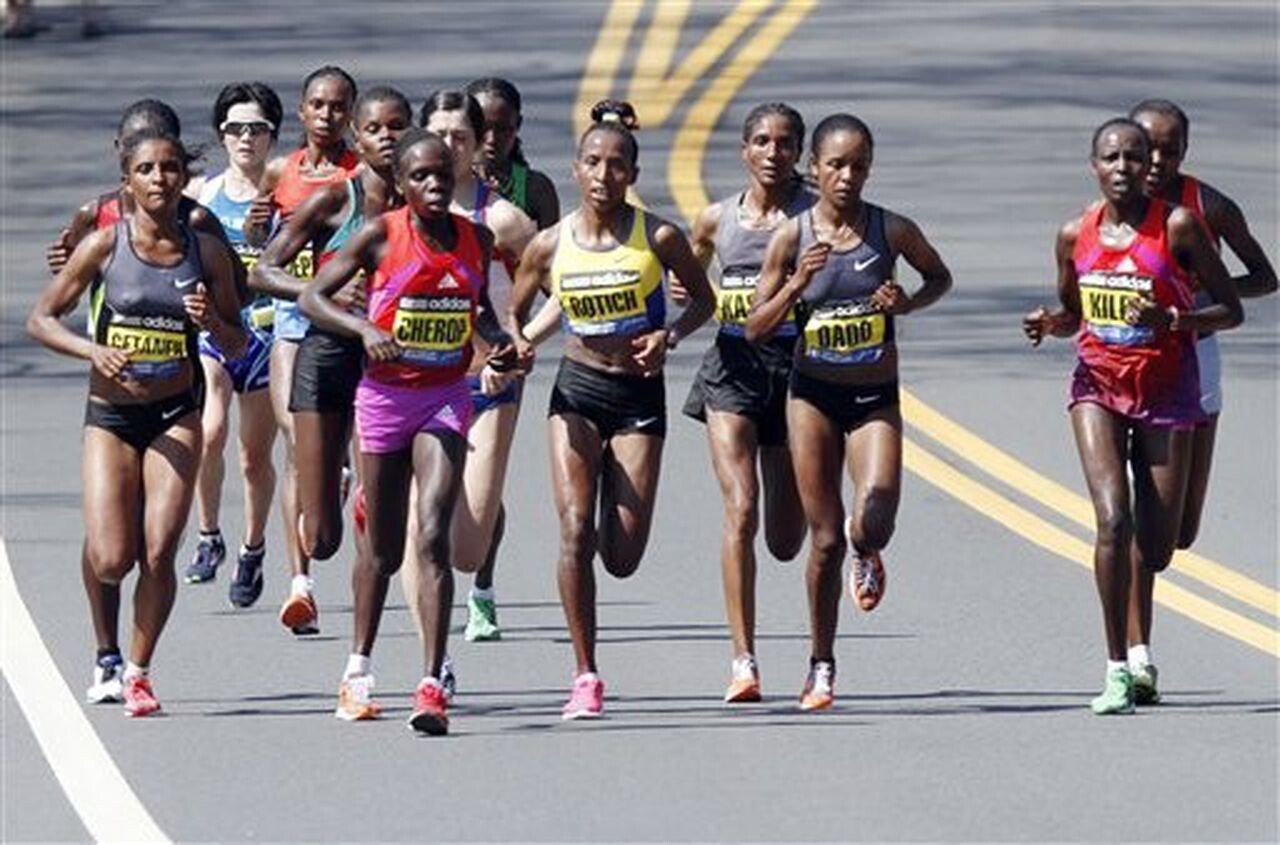
“I really don’t have a specific time that I will be chasing but I want some good time at the end of the day. I want to run better than I did in the half marathon,” said Cherop.
The 2012 Boston Marathon champion said she is buoyed by her performance at April's Milan Marathon, where she clocked 2:26:13.
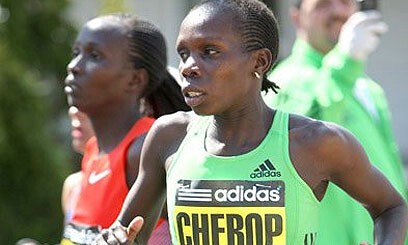
In Milan, she edged out Ethiopian Ethlemahu Sintayehu (2:26:30) and compatriot Emily Chebet (2:28:08).
"I am really trying to come back stronger after being out for so long. I want to have a good time. I pray that it will be favorable this time around,” she said.
The 2002 world junior 5,000m bronze medalist has a good history in marathon running since winning bronze at the 2011 World Championships behind winner Edna Kiplagat and Prisach Jeptoo in an all-Kenyan podium sweep.
The Tirap Primary School alumna also won the Toronto Waterfront Marathon and finished third at the 2011 Boston Marathon before winning the race the following year.
“Weather can also be a factor and as athletes, we always look forward to favorable conditions,” said the former New Delhi Half Marathon silver medalist.
Apart from road running, she also competed at the Discovery Kenya cross country in 2002, where she was third. She has also won the Eldoret City Marathon.
Former world 10,000m silver medalist Paul Tanui will lead the men's contingent that has Cornelius Kibet, and Edwin Kibet among others.
(09/20/2023) ⚡AMPby Emmanuel Sabuni
Buenos Aires Marathon
The Maratón of Buenos Aires is an annual marathon foot-race which takes place in Buenos Aires, Argentina, during the Southern Hemisphere's Spring, usually in October. The 21st edition of the Buenos Aires Marathon started on October 9, 2005 at 7:30 at the 9 de Julio Avenue and Córdoba Avenue in the Recoleta neighborhood, being the start also the end point. ...
more...Elvis Cheboi carries Kenyan hopes at TCS Toronto Waterfront Marathon
Although he may not have the fastest personal best time in the field Kenya’s Elvis Cheboi will certainly be a contender when the 2023 TCS Toronto Waterfront Marathon gets underway on October 15th.
The 27-year-old made his debut at the Vienna Marathon April 23rd and after running with the leaders through the first half in 62:44 he struggled home in 7th place with a time of 2:10:21. The result left him wondering if he would ever put himself through such torture again.
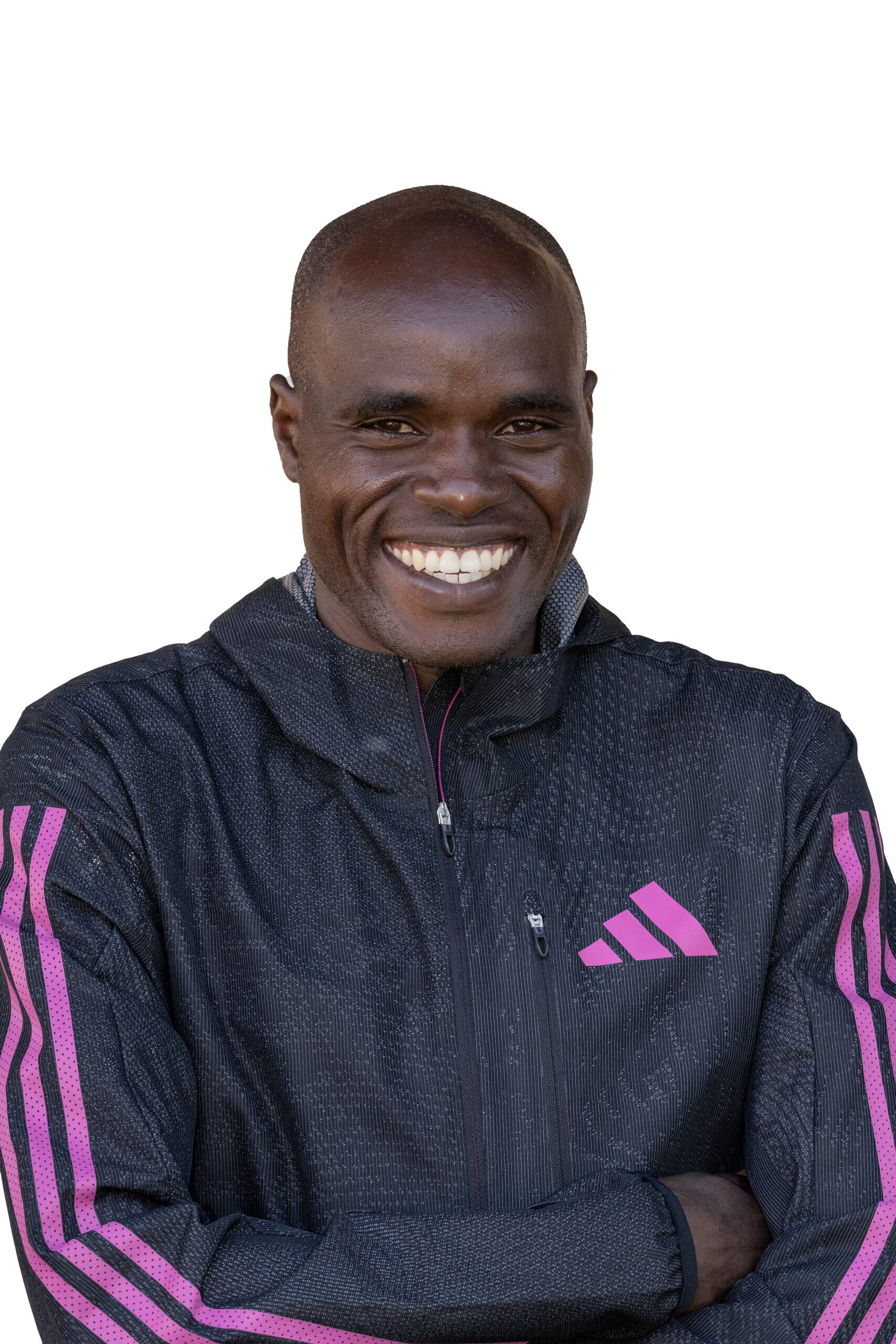
“It was tough but I accepted it,” he says with a smile during a video call from Iten, Kenya. “You see, it was my first attempt so I can say I tried my best.
“After I finished I felt like I would never again run the marathon. My body was feeling pain. My coach Gabriele (Nicola) helped me and encouraged me with a lot of wisdom and said ‘don’t give up you will do it one day’.”
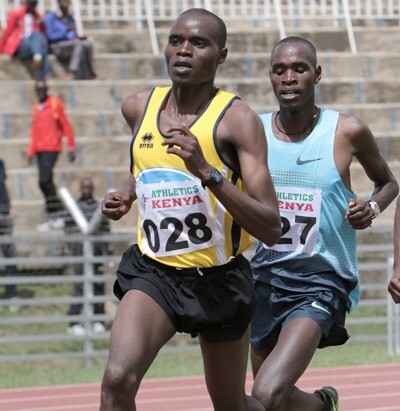
At this point coach Nicola, who is sitting with him in the lobby of Kerio View Hotel listening in, interjects pointing out that five months before Vienna his charge had recorded a personal best half marathon time of 59:15 to finish 3rd at the Barcelona Half Marathon. That’s ten seconds faster than world marathon record holder Eliud Kipchoge has ever run. Unfortunately, when Cheboi returned to Iten following that splendid result it was with a slight injury.
The pair had expected he was capable of running 2:06 or 2:07 in Vienna. Indeed the race was won in 2:05:08 by his countryman Samwel Mailu.
“This time we started preparation for Toronto in June,” Nicola reveals. “Immediately his body started to react the way it reacted when he ran 59:15 for the half marathon in 2022.
“Now he is building the shape. It’s not hard to imagine him running sub 2:06. He will be ready to run well. How well? We will see on the streets of Toronto.”
Cheboi trains with the Demadonna Athletic group in Iten. Among the 35 athletes that train with Nicola about a dozen stay at the Kerio View Hotel through the week but Cheboi isn’t one of them. That’s because he and his wife, Ruth Korir, have two very young children – a daughter named Sharline Jerotich, 5, and a 1-year-old son, Shalom Kiplagat.
Their house is about five kilometres from the training centre and sits on some land they own.
“When I am done with training, like this evening, I play with my children and also teach my girl, who is now in school, how to do her homework,” he says. “I help her with education.
“At night I usually watch television mostly CNN. My favourite is CNN and maybe National Geographic. There are so many animals on that channel.”
Like many professional runners in East Africa he is using his earnings from running to prepare for his family’s future.
“Back at my home I also farm,” he says with a smile. “I have animals and also plant maize, potatoes and wheat. This year I have cows, sheep and goats and also I planted some wheat and maize. You know, here in Kenya we like maize because of Ugali.”
Ugali, of course, is a staple on the tables at homes in Kenya and served often with beef stew.
Among those he trains with are two world-class marathoners in Joshua Belet who ran 2:04:33 in the 2023 Hamburg Marathon and Kiprono Kipkemoi who was second at Toronto Waterfront Marathon last year.
“I don’t know much about Toronto but I asked Kiprono about Toronto but he didn’t tell me much yet,” he says. “But I will meet with him again about it.”
Among Nicola’s female athletes is Magdalyne Masai who set a Toronto Waterfront Marathon course record of 2:22:16 in 2019. The coach has arranged a meeting with her so Cheboi can gain more insight into the course and all its features.
“It’s not exactly like a refreshment station but you learn to drink on the run,” Nicola explains. “Secondly you will know how to grab a bottle and not lose time during the race.”
Unusual for a Kenyan runner when asked whose performances inspired him when he was starting out as a runner Cheboi answers ‘Kenenisa Bekele,’ the Ethiopian superstar who won three Olympic gold medals and held the world 5,000m and 10,000m records until 2020.
“I can say I love Bekele. The way he ran and also from his background of running until now,” he admits although he has never met his idol.
“I encouraged myself. How Bekele runs his performances from way back you see he ran very well.”
(09/20/2023) ⚡AMPby Christopher Kelsall
TCS Toronto Waterfront Marathon
The Scotiabank Toronto Waterfront Marathon, Half-Marathon & 5k Run / Walk is organized by Canada Running Series Inc., organizers of the Canada Running Series, "A selection of Canada's best runs!" Canada Running Series annually organizes eight events in Montreal, Toronto and Vancouver that vary in distance from the 5k to the marathon. The Scotiabank Toronto Waterfront Marathon and Half-Marathon are...
more...Amanda Nelson breaks Canadian 24-hour record
Ultrarunner Amanda Nelson broke the Canadian women’s 24-hour record at That Dam Hill in London, Ont., over the weekend, running an unofficial distance of 248.8 kilometers and picking up her fourth national ultramarathon record.
Although Nelson, who hails from Woodstock, Ont., told Canadian Running on Monday that the exact distance likely won’t be made official for a couple of weeks, she broke the 238.261-km record held by Bernadette Benson by at least 10 km.
“I had lots of highs and lows—more highs than lows—but there were times where I was like, ‘Why am I doing this?’” she said of her weekend effort, her third attempt at breaking the Canadian 24-hour record.
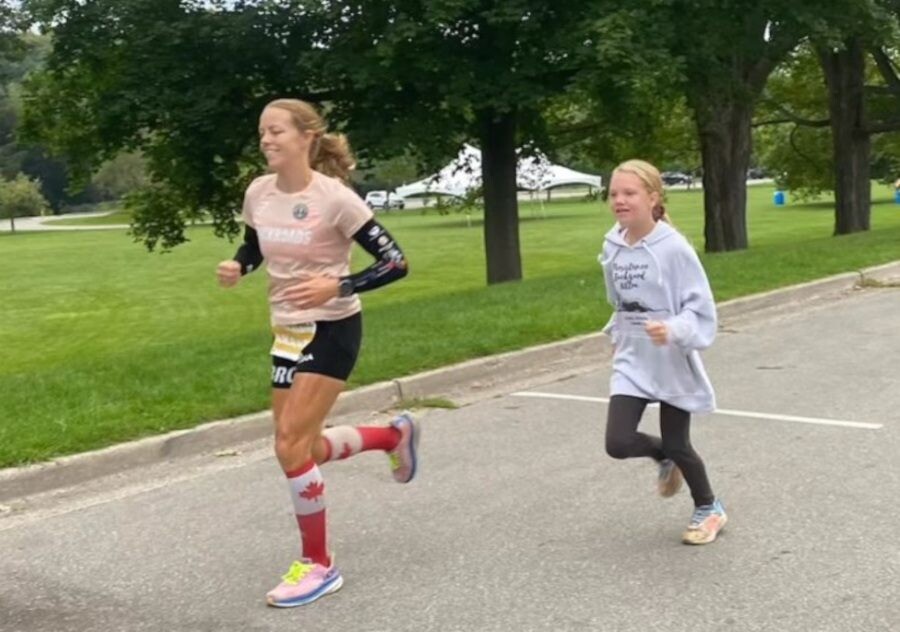
She said while her path to achieving the 24-hour record hasn’t always been smooth, an uneven surface is exactly what was needed to finally accomplish this feat.
Nelson said her two previous, unsuccessful shots at the record were both attempted on the track. Although running on a flat surface would seem to take less of a toll on the body, the monotony of running laps on a track was too mentally draining.
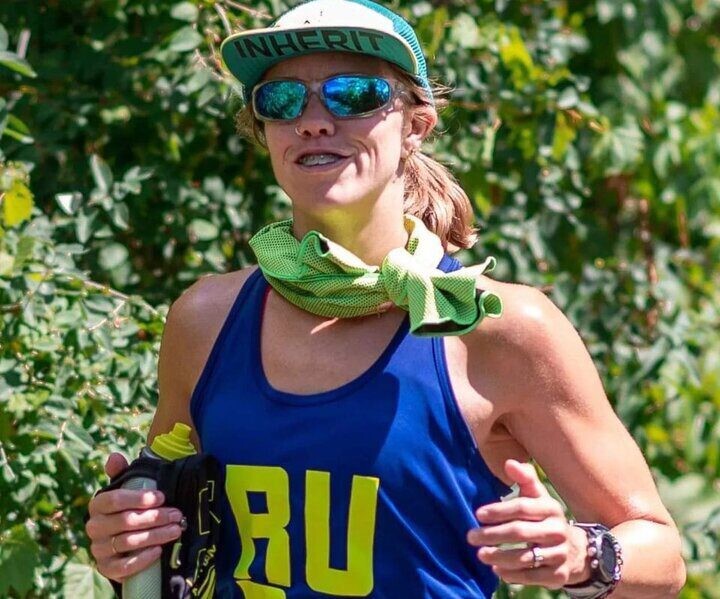
“Mentally, just doing the track, it’s not for me,” said Nelson. “That Dam Hill isn’t a track—it’s a 2.25-km loop on pavement with hills. Although it’s hard running on pavement for that long, there’s more variety to the surroundings at That Dam Hill. I need the hills and the downhills and variety. They help a lot, mentally. I knew I had to do a course that wasn’t on a track if I was going to take another try at breaking the record.”
Nelson said positive self-talk was also key to staying on track during her most recent shot at the record. “When I’m going through a low, I make sure to remind myself that I can keep going, that I am strong enough and this bad feeling is going to pass.”
She said she felt “amazing” in the final moments of her run, and that the end of her record-breaking race was made even more special when Hanna Nelson, her 10-year-old daughter, joined her for the last partial loop until the clock hit 24 hours.
“It was great, but it’s crazy how the second you finish, you’re done. Everything just kicks in and you’re like, ‘I couldn’t even run one more step.’”
In addition to her latest record, the 34-year-old holds the women’s 12-hour Canadian record (135.072 km) and the 100-mile Canadian record (14:45:51). In May, she broke her Canadian women’s backyard ultra record by running 375.51 km over 56 hours at the Race of Champions-Backyard Masters in Rettert, Germany.
That performance in Germany helped qualify Nelson for Big Dog’s Backyard Ultra Individual World Championships in Short Creek, Tenn., which begins Oct. 21. She is one of only three Canadians who have qualified for the race (Ihors Verys and Eric Deshaies have also punched their tickets), and one of only four female qualifiers among 75 runners representing 38 countries.
However, there’s a chance the race may be over for her before it begins—the cost of making the return trip to Tennessee could end up being too prohibitive for Nelson.
(09/19/2023) ⚡AMPby Paul Baswick
Eliud Kipchoge lands in Germany in style ahead of the Berlin Marathon
The Berlin course remains one of his favorite since he has set two world records there.
Four-time Berlin Marathon champion Eliud Kipchoge has landed in Germany in style for the Berlin Marathon on Sunday, September 24.
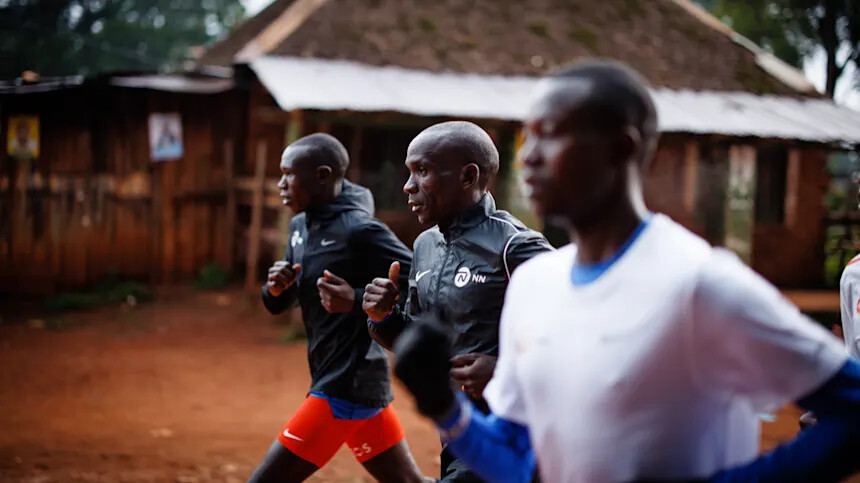
Kipchoge has been preparing for the marathon since his unsatisfactory exit from the Boston Marathon.
The four-time London Marathon champion finished sixth at the Boston Marathon due to a problem with his left leg but has since addressed that and will be raring to go in the streets of Berlin.
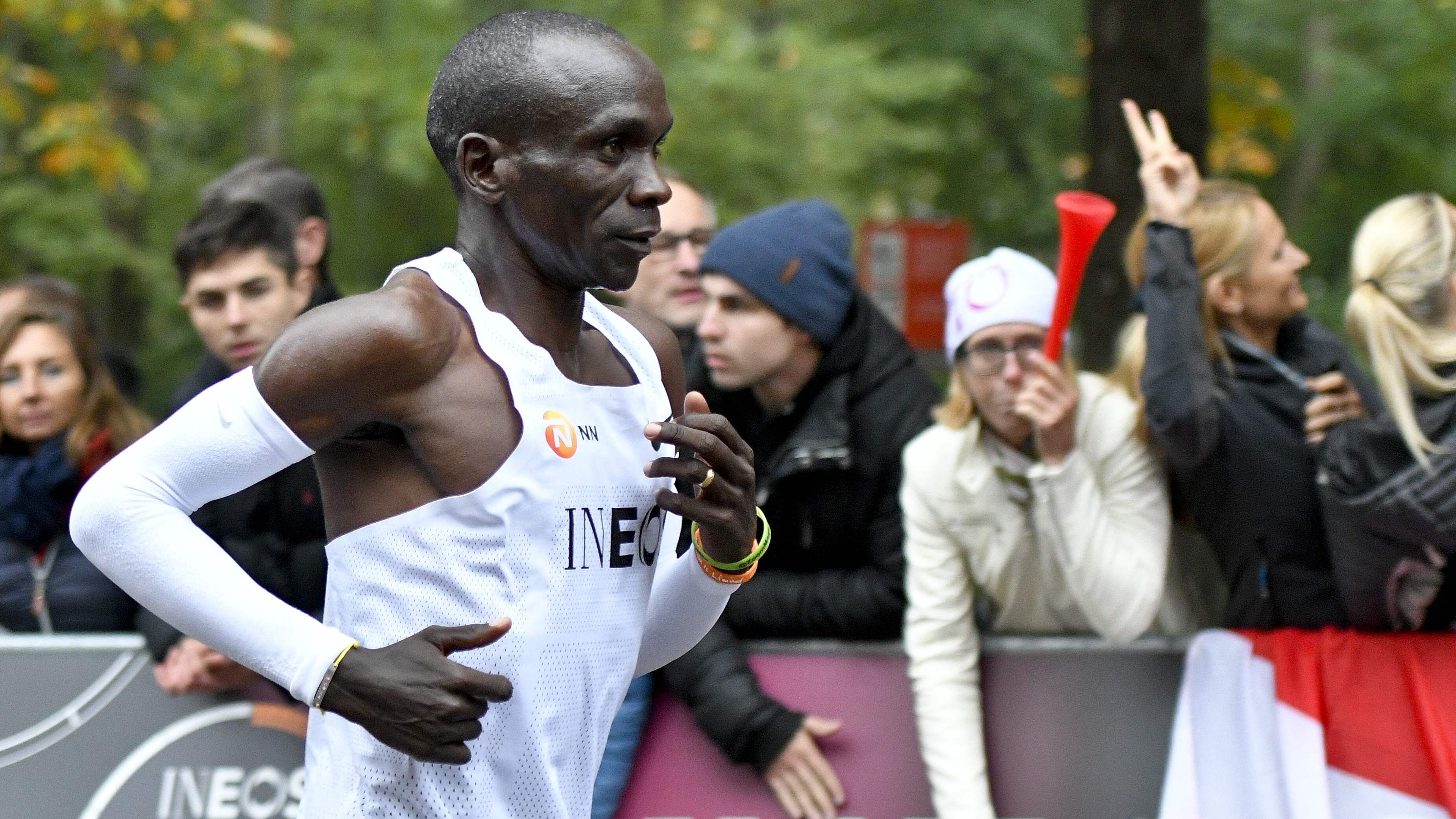
The Berlin course remains one of his favorite since he has set two world records there. He set the first world record during the 2018 edition where he clocked 2:01:39 to win the race.
He then lowered his time during the 2022 edition, clocking 2:01:09 to cross the finish line. Another record might be in the offing as he seeks to bounce back from the Boston Marathon disappointment.
The 38-year-old also disclosed that he loves racing in the streets of Berlin because of the real fans who motivate him to always do better.
In Berlin, he will enjoy the company of the 2022 London Marathon champion Amos Kipruto who finished second behind him during the 2022 Tokyo Marathon.
Jonathan Maiyo, Eliud Kiptanui, Ronald Korir, and Philemon Kiplimo have also confirmed participation. Enock Onchari, Mark Korir, and Josphat Boit will also be in action.
(09/19/2023) ⚡AMPBMW Berlin Marathon
The story of the BERLIN-MARATHON is a story of the development of road running. When the first BERLIN-MARATHON was started on 13th October 1974 on a minor road next to the stadium of the organisers‘ club SC Charlottenburg Berlin 286 athletes had entered. The first winners were runners from Berlin: Günter Hallas (2:44:53), who still runs the BERLIN-MARATHON today, and...
more...Edwin Kimaiyo will return to Germany with one goal in mind
Edwin Kimaiyo will be returning to Germany with the hope of achieving a podium finish at the Munich Marathon scheduled for Sunday October 8.
Germany is definitely one of the favorite destinations for Kimaiyo and he will be hoping to improve on his performance from last year.
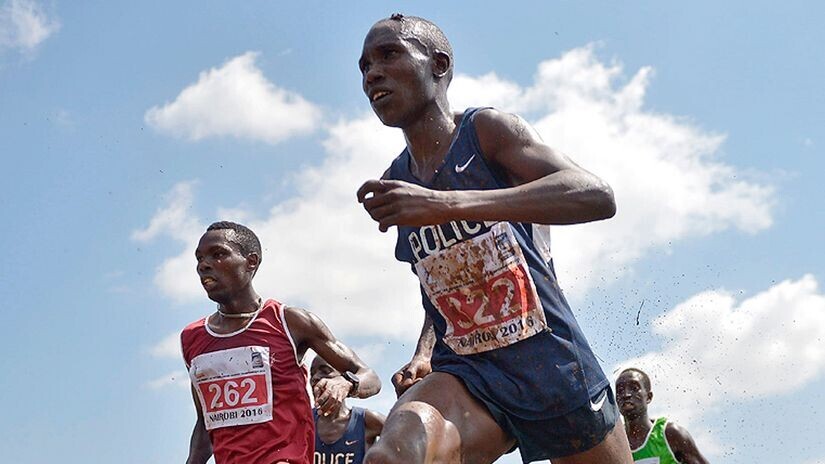
During the 2022 edition of the race, the 37-year-old finished fifth. With mastery of the course, he will definitely pull a surprise performance.
Kimaiyo has a Personal Best time of 2:09:12 and he is the fastest in the men’s field currently in Germany’s fourth biggest marathon.
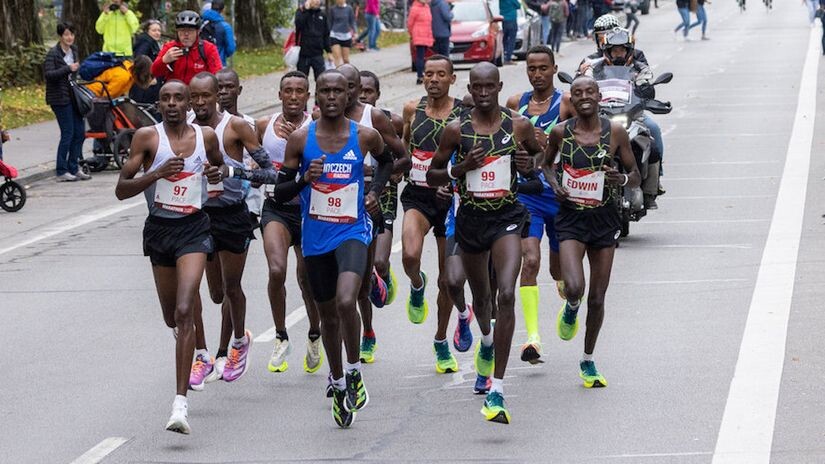
The Kenyan has vast experience and he took a fine third place at the 2011 Berlin Marathon with 2:09:50. He will be joined by compatriot Cosmas Kiplimo who is still a newcomer to international road racing.
He made his international debut at the Linz Marathon in Austria last year, clocking 2:09:44 for 11th place. He finished third at the Geneva Marathon earlier this year.
Sebastian Hendel will lead the home charge and he will be returning to the Munich Marathon as well. He goes into the race after clocking 2:11:29 at the Vienna City Marathon.
In the women’s field, Caroline Jepchirchir leads the field with a PB time of 2:26:11. The 35-year-old ran her personal best in Enschede, Netherlands, in 2022 when she settled for fourth.
Her compatriot, Tecla Chebet will be among her challengers but she is yet to run a major international marathon. Jepchirchir has managed to bag six of her seven international marathons. This year the Kenyan took the Linz Marathon with a personal record of 2:27:18.
Meanwhile, the organisers of the 37th edition of the event are expecting a field of around 22,000 runners including races at shorter distances. It was noted that around 7,000 of them will run the marathon.
(09/19/2023) ⚡AMPby Abigael Wuafula
Olympic silver medalist Paul Tanui set for his marathon debut in Argentina
The Buenos Aires International Marathon takes place on Sunday, September 24 having attracted strong fields in both the men’s and women’s races.
Olympic 10,000m silver medalist Paul Tanui will be making his long-awaited debut over the distance and he will definitely be bracing up for a tough test.
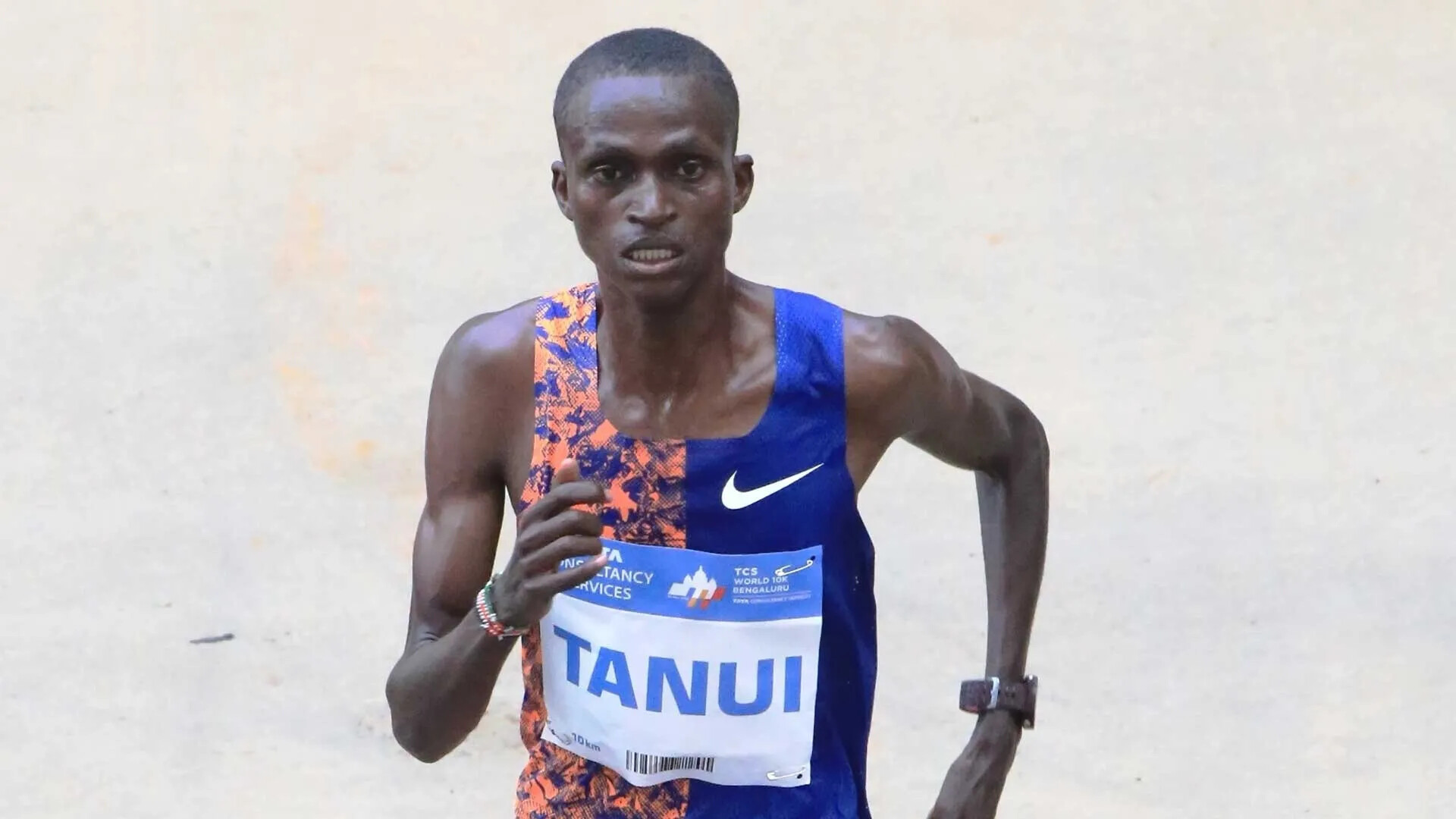
The 32-year-old intended to make his debut at the Daegu International Marathon but failed to finish the race and he will be hoping to have a better outing in Argentina.
Tanui has only competed once this season, at the Bogota Half Marathon where he finished fourth in a time of 1:05:02.
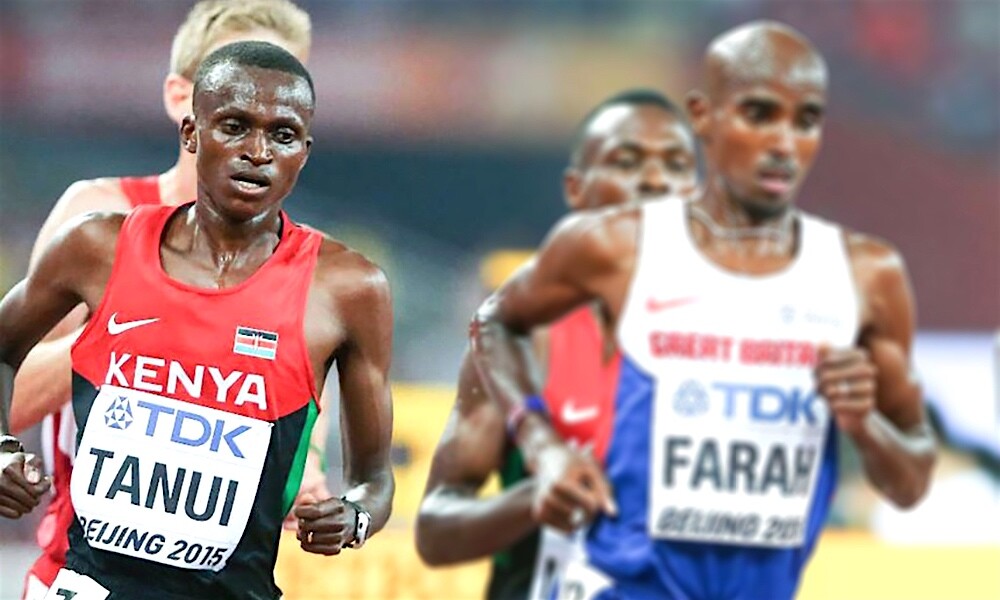
In the men’s race, there are four other runners who already have records under 2:10, led by Kenyan Cornelis Kibet. Edwin Kibet Kiptoo, runner-up of the 2022 Buenos Aires Marathon, will also be in the hunt for victory this time around.
The list of Argentines includes several of the most notable marathon runners in recent times such as David Rodríguez, Martín Méndez, Miguel Maza, José Félix Sánchez, and Pablo Toledo.
The men's record was set at 2:05:00 by Kenyan Evans Chebet in 2019 and no one has gotten closer to it since then.
Chebet went ahead to become one of the best marathoners in the world by winning major events such as Valencia (2:03:00), New York, and Boston.
In the women’s category, the circuit record was also achieved in 2019 by Rodah Jepkorir Tanui, with 2:25:46. Tanui now returns in search of her third consecutive victory (she also triumphed in 2022).
She will have strong rivals such as her co-patriot Pamela Jepkosgei and Sharon Jemutai Cherop, a former winner of the Boston Marathon, who arrives for the third time in the country
(09/19/2023) ⚡AMPby Abigael Wuafula
Buenos Aires Marathon
The Maratón of Buenos Aires is an annual marathon foot-race which takes place in Buenos Aires, Argentina, during the Southern Hemisphere's Spring, usually in October. The 21st edition of the Buenos Aires Marathon started on October 9, 2005 at 7:30 at the 9 de Julio Avenue and Córdoba Avenue in the Recoleta neighborhood, being the start also the end point. ...
more...Eliud Kipchoge shares how fans play a huge role in his success
World marathon record holder Eliud Kipchoge is one of the most successful athletes in the world and his success definitely did not come overnight.
It has taken years for the four-time London Marathon champion to make a name for himself and he attested that fans have played a huge role in his career.
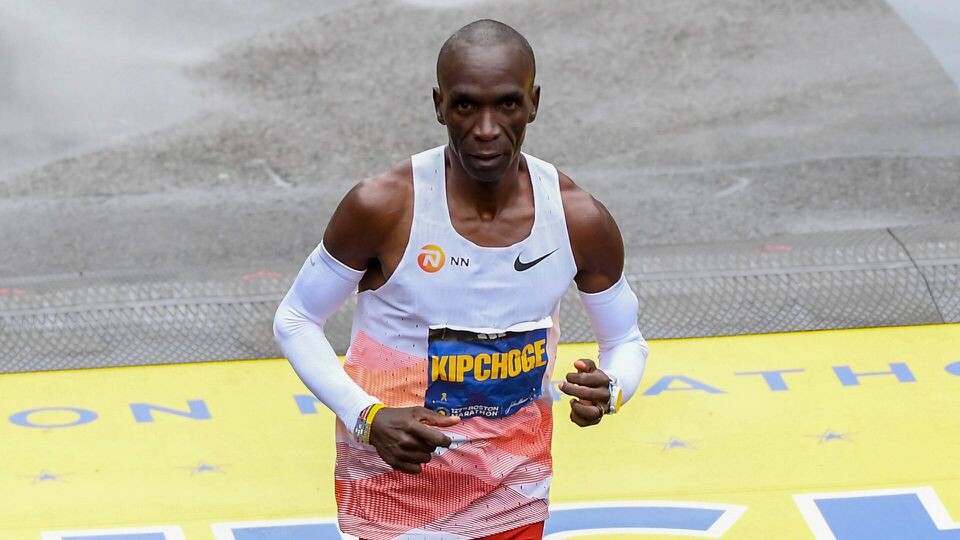
The legendary marathoner will be returning to the streets of Berlin with eyes set on winning his fifth title and he is banking on fans to make it a success. He attested that he loves competing in Berlin because of the passionate fans who cheer him on to keep going.
“The streets of Berlin will be packed and you know when you hear the voices of the people, those are the people passionate about the sport, those are the real fans in Berlin.
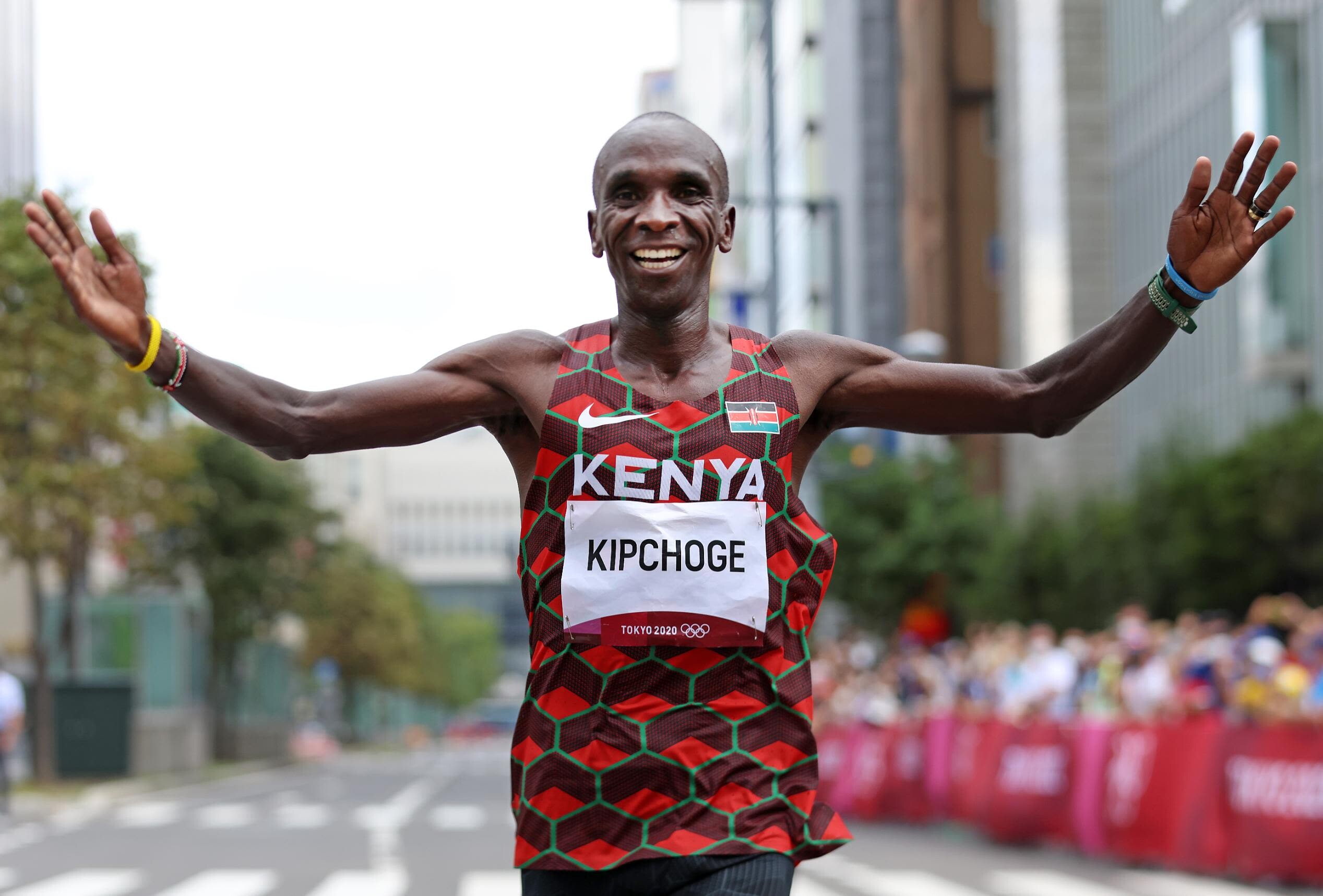
"Those are actually the people who motivate me and push me to keep going despite the challenges. I’m really looking forward to that,” he said.
The Berlin Marathon is scheduled for Sunday, September 24 and the 2014 Chicago Marathon champion will be using the event as a build-up towards next year’s Olympic Games in Paris, France.
Kipchoge opened his season at the Boston Marathon but unfortunately failed to live up to expectations after finishing sixth in the race due to a leg problem.
He went back to the drawing board and now feels ready to return to one of his favourite courses and take the win. He has set two world records on the Berlin course and he will be sure to stun his fans one more time when he sets foot on the start line for the race.
(09/18/2023) ⚡AMPby Abigael Wuafula
Record-breaking registration numbers reported for 2024 Boston Marathon
The 128th Boston Marathon presented by Bank of America has set a remarkable record as it closed its qualifier registration window on Friday, Sept. 15. An astounding 33,000 applications were received by the Boston Athletic Association (B.A.A.) surpassing the previous record of 30,458 entries in 2019.
The applications for the 2024 Boston Marathon came from runners from 127 different countries and all 50 U.S. states, along with Washington, D.C. Qualifying athletes earned their spots in more than 528 races worldwide, showcasing the event’s international appeal. Impressively, applicants ranged in age from 18 to 82, underlining the race’s inclusivity and ability to inspire athletes of all ages.
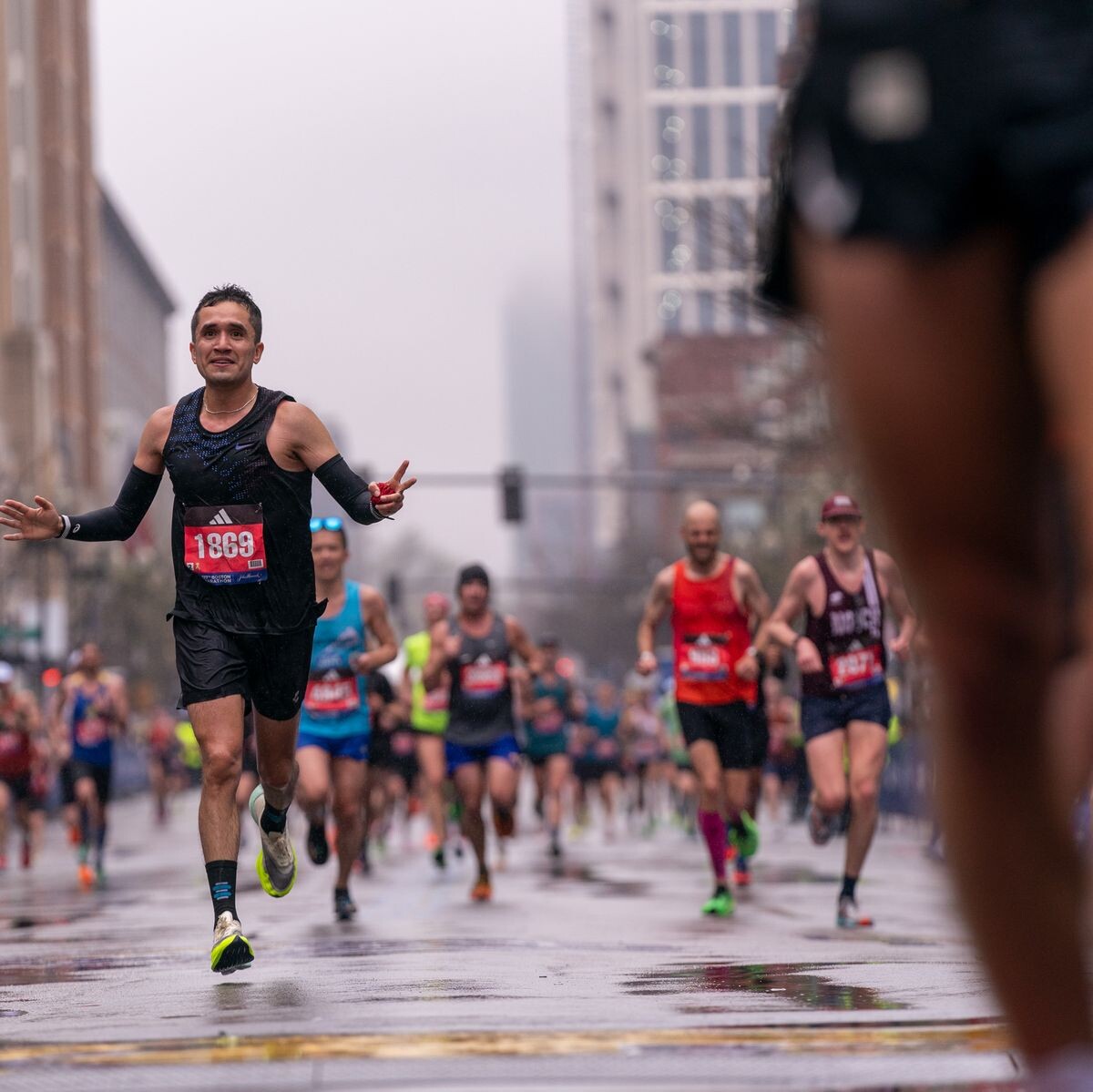
Despite the surge in applications, not all qualifiers will secure a spot in the 128th Boston Marathon. The B.A.A. is currently verifying all qualifying times and will notify applicants of their acceptance or non-acceptance within the next three weeks.
To maintain transparency, the organization has not speculated on a “cut-off” time for entry and requests athletes’ understanding and patience during this verification process.
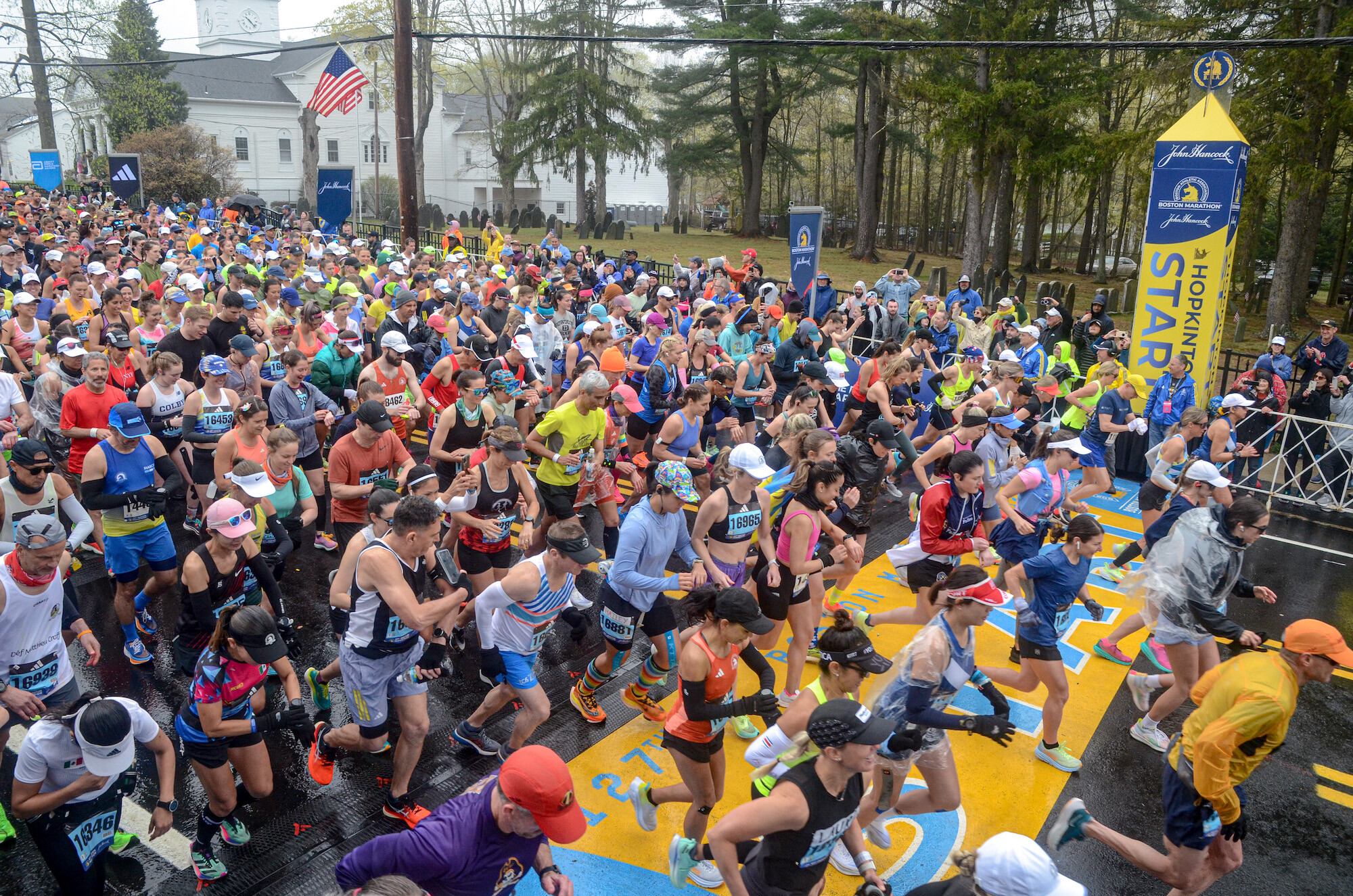
Jack Fleming, President and CEO of the B.A.A. commended the global running community’s passion and commitment to participating in the iconic race. Fleming stated, “Receiving a record number of applications is a testament to the strength of road racing around the world and speaks to runners’ commitment to taking on the challenge of earning a Boston Marathon qualifying time with the goal of reaching the start line in Hopkinton.”
For individuals who do not make the cut or lack a Boston Marathon qualifying time, there’s still an opportunity to participate through the Bank of America Boston Marathon Official Charity Program. This program includes 160 non-profit and charitable organizations that have begun accepting applicants for the upcoming event.
(09/18/2023) ⚡AMPBoston Marathon
Among the nation’s oldest athletic clubs, the B.A.A. was established in 1887, and, in 1896, more than half of the U.S. Olympic Team at the first modern games was composed of B.A.A. club members. The Olympic Games provided the inspiration for the first Boston Marathon, which culminated the B.A.A. Games on April 19, 1897. John J. McDermott emerged from a...
more...Three key workouts to PB your next marathon
Mastering the art of a half marathon or marathon can take many years of consistent training. These diverse workouts should be added to your repertoire–they’ll help you nail pacing, build speed for hilly courses (that also translates to strength on the flats) and boost your confidence prerace. If you have an area you need to work on, you’ll notice it after running these sessions and can make it a focus. Consistency (and fun) are essential.
1.- 3K-2K-1K ladders
A great workout to pop into your training regime when your legs are feeling slow or sluggish, these ladders will inject some speed and help you tune in efficiency and race day pacing.
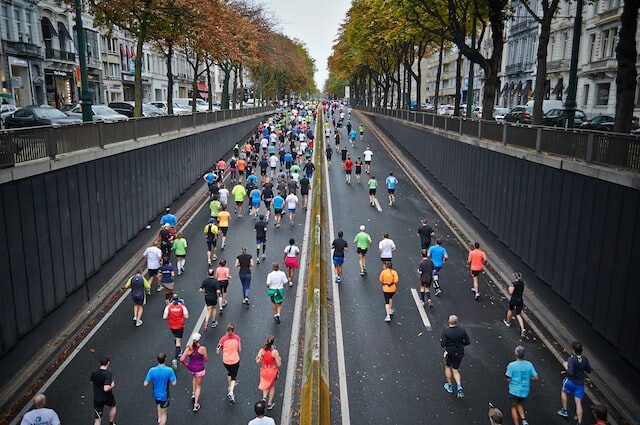
Warm up with ten minutes of easy running and some drills and strides.
2 x 3K at half marathon pace, 2K at 10K pace, 1K at 5K pace, with 2 minutes of recovery between reps and 4 minutes of recovery between sets.
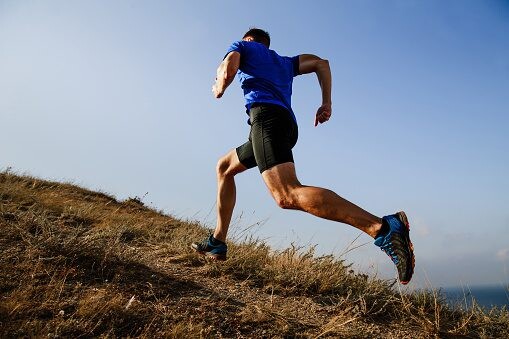
Cool down with ten minutes of easy running.
2.- Marathon to half marathon pace progression repeats
This session is all about the negative splits. Start slightly slower than you marathon pace and increase your speed each repetition, working down to half marathon pace. You’ll boost confidence with each repetition and practice pushing harder toward the end of your race.
Warm up with 10 minutes of easy running.
3 x 10 minutes at half-marathon pace, with 3 minutes of easy recovery between each.
Cool down with 10 minutes of easy running.
3.- Three-minute hill repetitions
Warm up with 10-15 minutes of easy running.
8 x 3-minute hills at marathon pace (moderate grade hill of 4-6 per cent), run easily down the hill for recovery.
Cool down with 10 minutes of easy running.
This workout is a great confidence booster and can be done near the end of your marathon training cycle. A three-minute hill is a long one–you won’t be running full-out and will gain strength and endurance by powering through. Work on maintaining a steady pace up the hill, and embrace the discomfort of this workout–it’s a great reminder of how uncomfortable marathons are.
(09/18/2023) ⚡AMPby Keeley Milne
Ethiopia’s Gudaf Tsegay sets 5,000m world record at Prefontaine Classic
On Sunday afternoon at the Diamond League Final in Eugene, Ore., world 10,000m champion Ethiopia’s Gudaf Tsegay almost achieved the unthinkable: breaking the women’s 5,000m world record in 14:00.20—nearly becoming the first woman in history to run a 5K under 14 minutes.
Tsegay surpassed the previous 5,000m world record of 14:05.20 by five seconds, which was set by her rival Faith Kipyegon earlier this year at the Paris Diamond League. Tsegay battled with world cross-country champion Beatrice Chebet until the final three laps when the Ethiopian pulled ahead.
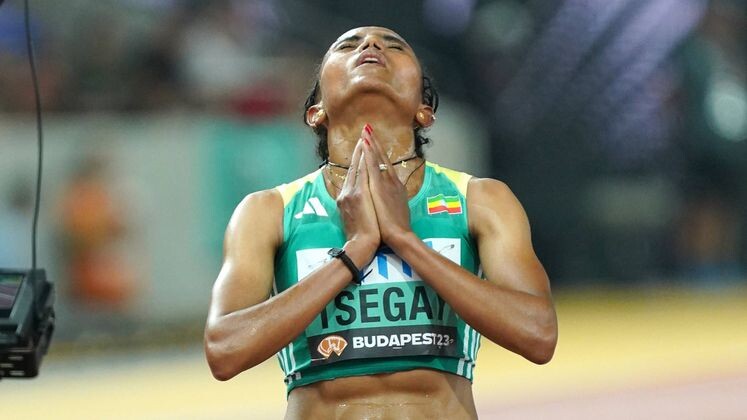
The pace for the 5,000m final was set for 14:00 flat, with the pacers taking Tsegay and Chebet through 3,000m in 8:26.03. Tsegay threw down a 2:09 final 800m to shake off Chebet and become the first woman to threaten the 14-minute 5K barrier.
Chebet finished second behind Tsegay in 14:05.92, the third-fastest time in history. Ethiopia’s Ejgayehu Taye rounded out the Diamond League 5,000m final podium in 14:21.52. Kipyegon chose to run the 1,500m on Saturday and did not enter the women’s 5,000m at the Prefontaine Classic.
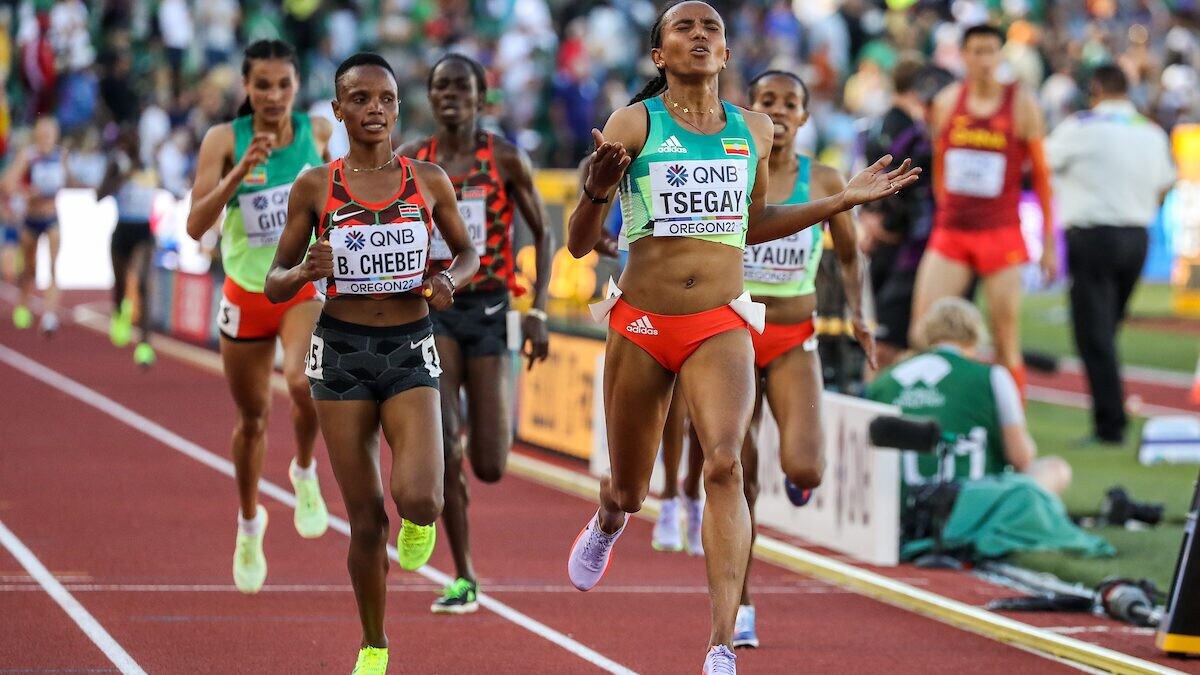
Tsegay had an up-and-down 2023 season, winning the world 10,000m title in Budapest, then finishing a disappointing 13th place in the world 5,000m final several days later.
This is the second world record of Tsegay’s career. In 2021, she ran an indoor 1,500m world record of 3:53.09 in northern France.
(09/18/2023) ⚡AMPby Marley Dickinson
Prefontaine Classic
The Pre Classic, part of the Diamond League series of international meets featuring Olympic-level athletes, is scheduled to be held at the new Hayward Field in Eugene. The Prefontaine Classicis the longest-running outdoor invitational track & field meet in America and is part of the elite Wanda Diamond League of meets held worldwide annually. The Pre Classic’s results score has...
more...So You Missed Your Splits or Lost Your Race – Now What?
How failing in training and racing can make you a stronger runner
It’s Tuesday. No, it’s not only Tuesday. It’s critical velocity day. My coach has assigned me two warm-up miles and six 600 meters in 3:13-3:21 intervals, with a 90 second jog between each one. I head out to smash the workout. I’m confident. I’m excited. Then, I start. It’s blistering hot. Sweat is dragging all my face sunscreen down my forehead into my eyes. Water sloshes in my stomach. I’m so thirsty but I can’t drink anymore or I’ll puke. I start to slow. Miss my paces. What is happening? My head spins and I get this horrible gut-wrenching feeling as I pull through the last interval. My coach is going to be disappointed. My Strava record is going to be humiliating. Because I absolutely, undoubtedly failed this run.
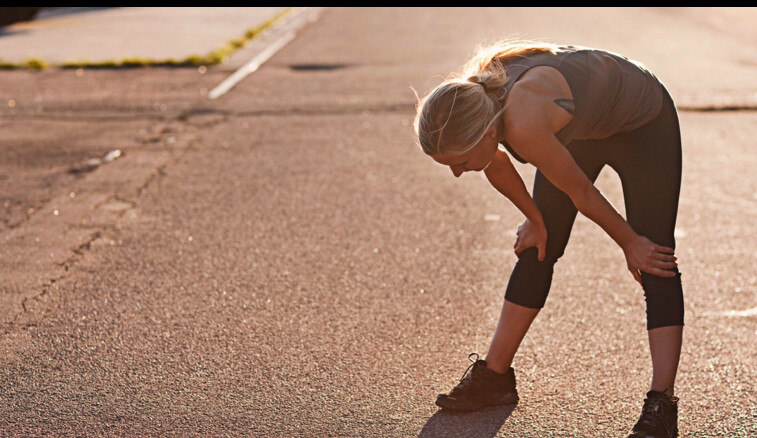
Thinking of yourself or your run as a failure can be debilitating and keep you down for days. For a while, I thought I needed to stifle this feeling. But as it turns out, I should be making nice with failure rather than fighting it.
So what exactly does it mean to fail a run? It looks different for everyone, but to many people in the running community, it means missing the splits you or your coach has set for yourself. You can fail in training and fail in a race – both are equally debilitating for a runner. However, running coach and founder of Run Your Best, Cory Smith, says this doesn’t always mean running too slow.
“A lot of people think the faster you run, the better,” he says. “But if you’re trying to hit a certain zone or train a certain adaptation and you run too fast, then you’re training something different than your coach wanted you to train, that can be a failure, too.”
In fact, Smith doesn’t believe going slower than your faces should be defined as the typical, negative definition of failure.
“Failure is data collection,” he says. “It’s learning information. If I fail a workout, it doesn’t make me a failure as a person or an athlete, it’s just an opportunity to look at the data and figure out how to grow from it.”
Oftentimes you’ll hear runners call it the “F word” or scold others for talking about failure, but mental endurance coach, Vanessa Foerster, wants people to use the word. She echoes the same thing as Dumbledore in Harry Potter and the Sorcerer’s Stone – “Fear of a name increases fear of the thing itself.” (That’s the only Harry Potter reference, I swear.) Foerester believes shying away from the word or thought of failure gives it more power.
“We have an opportunity, with our language, to normalize failure,” she says. “If we can redefine it, we change our relationship with it.”
What both Foerster and Smith stress the most is that one bad workout doesn’t make or break you. Smith compares it to basing your retirement fund on one day when the market went down, even though we know it goes up and down all the time.
“The most powerful thought around failure is that one workout never makes or breaks a race or athlete,” Foerester says. “We’re in a constant state of learning, if we open ourselves up to be.”
Beating yourself up over a workout can often bleed into your next run, creating a sort of downward spiral effect.
“It puts you into a negative mindset, and then the next workout you’re going to put more pressure on yourself to do well to convince yourself that last workout was just a fluke,” Smith says. “This leads to anxiety, which can hurt your workout performance.”
One study reports that a negative emotional state can hinder athletic performance. Speed, specifically, was proven to be affected by emotional state. This study examined the correlation between sadness and depression and reduced running speeds, head movements, and arm swinging.
In other words, failure can be heavy, if you let it.
Like we said, failure looks different for everyone. So far, we’ve been talking about failing during training sessions – which can be referred to as process failure. An outcome failure, however, is not meeting an end-result or goal which the training was put forth for. Like a race.
For Addie Bracy, it looks like an uncharacteristic 116th place in the 100k CC. Bracy is an elite trail runner, placing first in the 2023 Behind the Rocks Ultra Race and third in the 2023 Speedgoat 50K. She has a consistent track record across the board and even has her masters in Sport and Performance Psychology.
“I had a pretty poor performance,” she says, reflecting. “Objectively, one of the worst I’ve ever had in trail running, and certainly not the race I trained for.”
Bracy says she can’t pinpoint a rhyme or reason why, but that it just wasn’t clicking that day. At a certain point, she realized the race wasn’t going the way she thought and reframed her mindset. Failure, in her definition, is only when you give up – and she chose not to.
“I think that’s the beauty of ultras – they’re so long that you’re going through the mental process then and there,” she says. “I had thoughts of stopping, but I went through the mentality of ‘That’s not what you do this,’ and gave my best effort to focus on just finishing instead of making a certain time.”
This is what Smith identifies as performance standards versus outcome goals.
“Outcome goals are the splits you or your coach sets or the final finishing time,” he says. “The performance standards aren’t outcomes, but how much effort you put into whatever that task is.”
Meaning, Bracy started out at UTMB with an outcome goal of a particular time, and mid-race, reframed her foals to a performance standard to do her absolute best.
“I think when it really boiled down to it, the goal of a race was to put yourself in a challenging situation and see how you can handle it,” she says. “I was still able to do my best that day – it wasn’t what I thought it was going to be, but it was still my best.”
But she wasn’t happy with her placement in the 100k CC.
But in early September, Bracy took on the 100k CCC and placed in what she thought was an uncharacteristic 116th with a time of 14:48:21.
Foerster goes a step further and says that failure is not only okay, but it’s actually beneficial to experience.
“Anytime we can meet emotional discomfort where we have to deal with heavy emotions like disappointment, we teach ourselves how to navigate that more effectively,” Foerster says. “So that when we meet another uncomfortable moment in a race, we know we can meet it and process through it.”
In a study conducted by Ayelet Fishbach, Behavioral Science professor at University of Chicago, and Kaitlin Woolley, associate professor at the SC Johnson Cornell College of Business, it was proven that discomfort could lead to personal growth. By applying cognitive reappraisal, study participants assigned a new meaning to discomfort before they experienced it so it served as motivation rather than a reason to stop their goals. And, in the case of this study, participants who were forced into discomfort while doing a task reported a greater sense of achieve
Much like running itself can be uncomfortable, forcing yourself to address the emotions that come with failure can be an unfamiliar, disagreeable experience. But doing so allows you to feel, process, and recognize that you can change your relationship with failure every time you meet it.
“Discomfort is the currency to our dreams,” Foerster says. “If we’re willing to meet it, all our potential is on the other side.”
So fail, and fail hard. Address the feeling head-on and don’t let it define you, but just one out of many more runs to come.
(09/17/2023) ⚡AMPby Outside Online
Edward Cheserek, Irine Cheptai set PBs 2023 Copenhagen Half Marathon
Edward Cheserek and Irine Cheptai set personal bests on their way to leading the men and women 2023 Copenhagen Half Marathon results on Sunday. The Top 25 results below shows Edward Cheserek running 59:11 and Irine Cheptai clocking 1:05:53
The 2023 Copenhagen Half Marathon results and report on Sunday, 17 September, as Kenyan runners Edward Cheserek and Irine Cheptai won the men’s and women’s respective titles with a pair of quality runs to set personal bests in the Elite races.
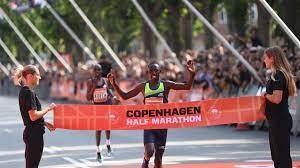
On the men’s side, the top six finishers went faster than 60 minutes today, led by Cheserek, who crossed the finishing line at a new personal best time of 59:11. This was the first time Cheserek was breaking 60 minutes for the half marathon with his previous PB of 1:00:13 set in 2022 in Valencia.
Following the former Oregon Duck and NCAA standout home on Sunday was his countryman Bernard Koech, who clocked 59:13 in second place. Ethiopia’s Gemechu Dida ran 59:31 for third place and completed the podium.
The women’s 2023 Copenhagen Half Marathon results and report was led by three-time world champion Irine Cheptai from Kenya, who set a new personal best today, stopping the clock at 1:05:53.
Kenyan runners swept the podium in the women’s race with Winfridah Moseti finishing in second place with 1:06:40, followed by countryman Jesca Chelangat, who ran 1:07:03 for third.
Meanwhile, Jacob Sommer Simonsen was top Denmark finisher today, clocking in at 1:03:40 to take the national title and finishing 25th overall.
On the women’s side, the national winner was Carolien Millenaar, who ran 1:14:50 for first-place among the Denmark runners and
(09/17/2023) ⚡AMPCopenhagen Half Marathon
The Copenhagen Half Marathon was the first road race in Scandinavia and is one of the fastest half marathons in the world. The Copenhagen Half Marathon has been awarded with the International Association of Athletics Federation's (IAAF) most distinguished recognition - the IAAF Road Race Gold Label. Copenhagen Half Marathon was awarded the IAAF Road Race Bronze Label in January...
more...Saina and El Goumri win Sydney Marathon titles
USA’s Betsy Saina held off a late challenge from Ethiopia’s Rahma Tusa to take the women’s title, while Othmane El Goumri claimed the men’s race win at the Sydney Marathon presented by ASICS, a World Athletics Platinum Label road race, on Sunday (17).
Saina, who finished fifth at the Tokyo Marathon in March, clocked 2:26:47 to win by six seconds ahead of Tusa, while Gladys Chesir claimed third place in 2:28:41.
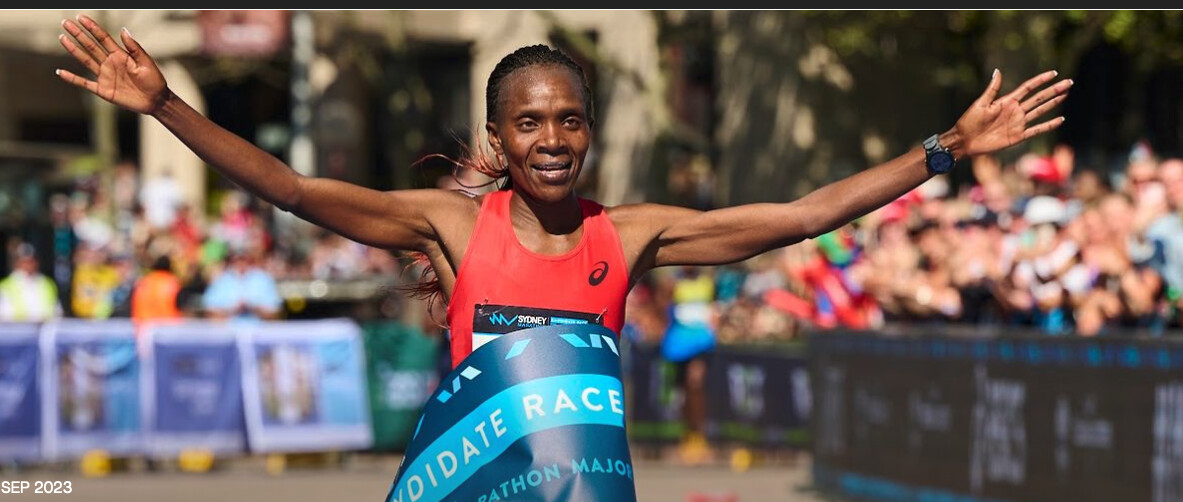
El Goumri’s winning time was 2:08:20 as he triumphed by 23 seconds ahead of Kenya’s Laban Kipngetich, with Ethiopia’s Getaneh Molla placing third in 2:11:22.
Racing on a hot morning, Saina formed part of a pack that passed 10km in 34:57 and the half way mark in 1:14:23 – with Kenya’s Angela Tanui to the fore at that point.
They reached 30km in 1:46:22, with a number of athletes still in contention.
Then Saina and Tusa started to make a move. As they left their rivals behind, they were together through 35km in 2:02:49, with Tanui back in third in 2:03:35.
Saina was still clearly feeling good and she pushed again to create a gap on Tusa, passing the 40km point in 2:19:30, 16 seconds ahead of the Ethiopian. But Tusa wasn’t content to sit back and watch the title run away, so she made a late charge. While she was able to close the gap to six seconds by the finish, it wasn’t quite enough, and Saina secured the crown, with Tusa taking second place and Chesir coming through for third.
Tanui finished fourth in 2:28:52, while Ethiopia’s Bekelech Borecha was fifth in 2:29:13. Australian record-holder Sinead Diver won the national marathon title in 2:31:27, finishing eighth overall.
In the men’s race, El Goumri made a move ahead of the 30km mark, but he had formidable company in the form of Tanzanian record-holder Gabriel Geay, who set his PB of 2:03:00 in Valencia last year.
After a half way split of 1:03:56, they passed 30km together in 1:30:58 but Geay could not maintain the pace and he dropped to third by 35km – with El Goumri ahead in 1:46:11 and Kipngetich overtaking Geay to pass that point in 1:46:28 to Geay’s 1:46:58.
Geay dropped out from the race after that point, with El Goumri forging ahead to win in 2:08:20 and Kipngetich claiming second place in 2:08:43. Molla, who had reached 35km in 1:47:31, claimed third place in 2:11:22.
He was followed over the finish line by his Ethiopian compatriot Limenih Getachew, who finished fourth in 2:12:34. Kenya’s Moses Kibet, who was defending his title after winning last year in an Australian all-comers' record of 2:07:03, was fifth in 2:13:28, while Oceanian record-holder Brett Robinson won the Australian title in 2:23:05, and like Diver he finished eighth overall.
With more than 17,000 entrants, the event was the largest marathon to ever take place in Australia.
(09/17/2023) ⚡AMPSydney Marathon
The Sydney Marathon is a marathon held annually in Sydney, Australia. The event was first held in 2001 as a legacy of the 2000 Summer Olympics, which were held in Sydney. In addition to the marathon, a half marathon, 9 kilometres (5.6 mi) "Bridge Run", and a 3.5 kilometres (2.2 mi) "Family Fun Run" are also held under the banner...
more...Yared Nuguse Shatters American Mile Record At Prefontaine Classic
Yared Nuguse shattered the American record in the Bowerman Mile, finishing second to Norway's Jakob Ingebrigtsen in 3:43.97 at the Prefontaine Classic.EUGENE -- Yared Nuguse shattered the American record in the Bowerman Mile, finishing second to Norway's Jakob Ingebrigtsen in 3:43.97 at the Diamond League Prefontaine Classic at Hayward Field.
Nuguse lowered the previous American mark of 3:46.91 set by Alan Webb in Belgium in 2007. His time now ranks fourth on the all-time world list.

“I feel like a 3:44, 45 felt reasonable, but 43 is the same second as the world record which is absolutely insane that we were able to do that today, but still (have) a great race,” Nuguse said.
Ingebrigtsen won the race in the third-fastest time in history 3:43.73, establishing new Diamond League, Pre Classic and European records while pulling the entire field to extraordinary performances. Everyone in the race clocked sub-3:54 and established either a new season best or personal best. There were also there national record and world U20 mark established.“I think he pushes all of us to be better, and that’s really huge," Nuguse said of Ingebrigtsen. "To have someone like this at the time same time that I’ve come to my peak is just really big, to make me catch things that I didn’t think were possible, like running 3:43.”
As expected, from the early going, this shaped up to be a two-man race between Ingebrigtsen and Nuguse. In the pre-meet press conference Nuguse stated that he wanted the American record. Ingebrigtsen playful told Nuguse to hang with him as long as he could and he just might get it.
And he was right.
Pacer extraordinaire Eric Sowinski kept the two runners on world-record pace, taking them through 800m in 1:51.67. When he stepped off slightly before 1200m, Ingebrigtsen had covered the next quarter in 56.06 with Nuguse right on his heels. The duo hit the bell in 2:47 and the race against the clock and each other was very much on.
“He does a very good race," Ingebrigtsen said of Nuguse. "Obviously he’s in a good enough shape to run what he does, but at the same time today I wanted to race where I could challenge myself to really set out at a decent pace, somewhat conservative, and then I go as hard as I could the last two laps to try to run as fast as I could. So it was very good.”As the two hit the back straight, it was apparent from the green LED pacing lights on the rail that they had fallen about two strides behind world-record pace but the intrigue was far from over.
They remained tight rounding the next to last curve when Ingebrigtsen turned the screw with 150 to go and began to open slight daylight. Nuguse covered the move and pulled right back onto the heels of the leader.
Coming down the stretch, Nuguse grimaced as he tried to keep up with Ingebrigtsen, moving wide to lane two to try and get passed but he was unable to close the gap.
“This is gonna be my last chance for a while to beat him, I might as well just pour my whole heart into it," Nuguse said of his mindset late in the race. "It was the perfect race because I just felt very unbothered the entire time, so it was all just really gritting it out and seeing who could run faster. But you know, definitely tough competitor but still felt really good about it.”
Nuguse credited the passionate crowd at Hayward Field -- there were 12,634 ticketed spectators in attendance -- with providing him with the home-cooking spark he needed late in the race.
"“Definitely that third lap, I feel like having that crowd just going nuts was really huge," he said. "I could just feel they’re all cheering for me for once, when I feel like in Europe they’re mostly cheering for him. It was still just a really amazing crowd, I always love hearing a big roar, especially here in Eugene.”While Nuguse can kick back into the offseason and start recharging for the Olympic year -- he said, his plans are to “just have a ton of fun tonight, not think about running for a month” -- Ingebrigtsen has one more race to go in his season, and on a tight turnaround. The 5000m world champion is favored in tomorrow's men's 3000m.
"Obviously I was here to run the mile," Ingebrigtsen said of his focus. "I’m jumping in the 3k because I got the opportunity. But now it’s all about getting back home to the hotel, eat, sleep, try to prepare as good as I can and we’ll see tomorrow.”
After the meet ends, is Ingebrigtsen's year done?
"Not quite," he said. "Hopefully getting married next weekend, so I think I have to prepare for that as well.”
(09/17/2023) ⚡AMPby Joe Battaglia Flotrack
Prefontaine Classic
The Pre Classic, part of the Diamond League series of international meets featuring Olympic-level athletes, is scheduled to be held at the new Hayward Field in Eugene. The Prefontaine Classicis the longest-running outdoor invitational track & field meet in America and is part of the elite Wanda Diamond League of meets held worldwide annually. The Pre Classic’s results score has...
more...New prison marathon documentary chronicles San Quentin's 1,000 Mile Club
26.2 To Life, by San Francisco filmmaker Christine Yoo, documents the story of the San Quentin Marathon–a marathon that takes place every November inside the walls of a maximum-security prison, and which, for several men, has represented a path to rehabilitation and a new life. The film opens in U.S. theatres on Sept. 22.The club, which evolved sometime after a small group of volunteer coaches were given permission to start a running club in the prison 16 years ago, is called the 1,000 Mile Club–the idea being that interested inmates could rack up 1,000 miles during their period of incarceration.
The club’s leader is volunteer coach Frank Ruona, a veteran of 78 marathons (including many Boston Marathon finishes) and 38 ultras. Other regular volunteers include Western States Endurance Run board president Diana Fitzpatrick and popular ultrarunner Dylan Bowman.The film documents the 2018 San Quentin Marathon, which involves 105 laps of the prison yard–a combination of gravel, pavement and dirt, with six 90-degree turns in each loop. Twice, that year’s marathon was delayed–once by wildfires in the area, and once by deaths in the prison due to drug overdoses. Sometimes the race itself is interrupted by alarms. When an alarm sounds, everyone in the yard must drop to the ground. The first time an alarm sounds during the 2018 marathon, the men are sitting on the ground for seven minutes.

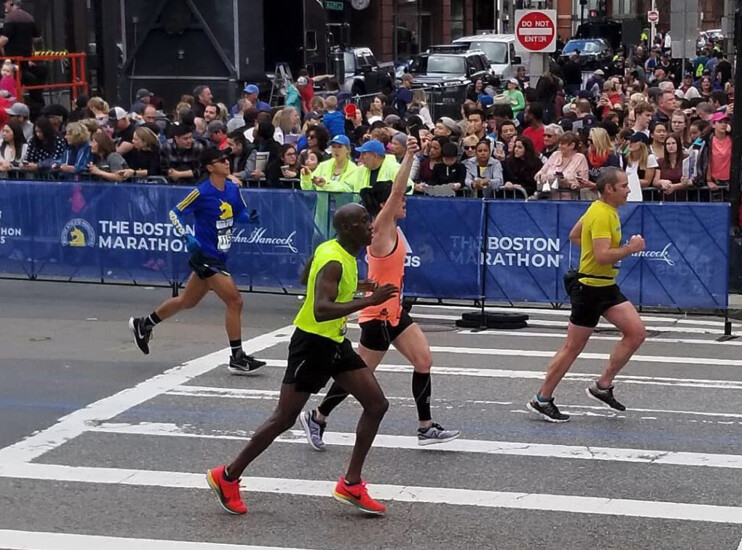
Then the race resumes.As he does every year, the club’s fastest runner, Markelle Taylor (nicknamed “The Gazelle”), won the race. As it happened, Taylor’s sentence was commuted the same year, and he went on to run the 2019 Boston Marathon as a charity runner, finishing in 3:03–a nearly seven-minute personal best.
San Quentin is a Level 4 maximum security prison, and many of the men depicted in the film are serving life sentences for murder. Each describes what led to their incarceration, but Ruona says he’s not interested in their crimes–he will lend an ear if an inmate wants to talk, but he does not ask what brought them to San Quentin. He is simply there to help–and to be a witness to the transformative power of running to change lives that are sometimes without hope. “I just feel like I am my brother’s keeper,” Ruona says, citing an Old Testament verse about Cain and Abel. “If he needs help, I’m gonna try and help him.”At the time the film was made, another runner, Tommy Wickerd, had been sober and gang-free for 18 years, and had recently completed his high school diploma. He applied for a commutation of his sentence, but never got a response.
His earliest possible release date is in 2053; he will be 86 when he gets out. But he’s philosophical. His wife, Marian, is determinedly loyal, and he has a son with whom he has a strong relationship. “If I keep running, I’ll be all right,” he says.
26.2 To Life opens in theatres in New York City, the San Francisco Bay area, Los Angeles, Milwaukee and Seattle on Sept. 22, and there will be a 72-hour virtual premiere from Sept. 29 to Oct. 1. There are currently no screenings scheduled in Canada, but we’ll provide updates if that changes. For more information, consult the film’s website, here.
(09/16/2023) ⚡AMPby Running Magazine
Can Better Shoe Lacing Make You Run Faster? BOA Thinks So.
Study shows BOA’s dial-based fit system improves trail running performance
The first running shoes were created roughly 50 years ago. Compared to running shoes today, nearly everything has changed. Outsoles are thinner, lighter, and more durable; midsoles are far more cushioned and responsive; and uppers are no longer leather but crafted of thin, breathable, engineered mesh or knits. One element, however, has remained essentially the same: laces. Today’s shoes, by and large, still use a long, thin cord crisscrossed across the instep to tighten the upper over the foot.

With all the technological advances elsewhere in shoe design it’s hard to believe that no one has come up with a more effective way of securing and holding the foot than by yanking laces through eyelets and tying them in a complicated bow that we learned when we were in preschool. Not only is the method cumbersome and imprecise, but it is also unreliable, coming undone at inopportune times far too often.
Truth be told, new tech has been developed but not widely adopted. Designers have tried various Velcro-type closures and stretchy uppers or laces. Others have gone with pull-cord designs like the Salomon Quicklace system, where you tighten the shoe by pulling on a thin, slick lace and securing it with a clip. While all improve convenience, it comes at the cost of control and comfort for many runners.
One prominent alternative gaining traction is the BOA fit system that uses a ratcheted dial to pull thin laces through guides to tighten the upper. Having tried several trail shoes outfitted with BOA fit systems, I’ll admit I am a fan. In my experience, the BOA system addresses many of the limitations of traditional laces: tightening is convenient and smooth, with micro-adjustments dialed- and locked-in with precise clicks. And, rather than the traditional top-of-the-foot web of laces buffered by a padded tongue, the BOA system tightens panels—custom-designed for each shoe model—that wrap around the foot and hold it comfortably and securely.
Besides convenience and comfort, a new study—that was, it’s worth noting, funded by BOA and carried out by the BOA-sponsored Performance Fit Laboratory—suggests that better lacing can also improve performance. A peer-reviewed white paper published by Frontiers in Sport and Active Living details the study that revealed improvements in stability, agility, and speed on a technical trail when wearing a shoe outfitted with the BOA PerformFit Wrap closure system over the identical shoe with traditional lacing. Despite the conflict of interest and some inherent limitations in the methodology, the study seems sound, and the results are intriguing.
In designing the study, the researchers chose to assess performance in an actual trail-running setting rather than inside a lab. Thirty runners (15 male, 15 female) ran a one-mile loop of a technical trail in Red Rocks Park near Denver, Colorado four times—twice in a pair of La Sportiva Cyklon with the BOA wrap system and twice in the identical shoe retrofitted with traditional top-of-the-foot laces— in randomized, counterbalanced order. During each run, scientists used accelerators and gyroscopes, pressure-sensitive insoles, heart-rate monitors, and GPS trackers to gather biomechanical metrics on the runners. After the test, participants answered questions on the shoe’s fit and performance on each section of the trail.
I was curious who tied the laces and who controlled the tension on both laces and BOA fit system, so I asked Dan Feeney, the BOA-employed biomechanics PhD who directed the study. He said that, in keeping with the “ecologically valid conditions” of the study, they let runners lace their shoes to their preference. “This is more representative of what runners will experience in the real world, so we prefer to test that way,” Feeney said.
When the numbers were crunched, the wrap-equipped shoe was shown to increase ankle stability (reducing the velocity of inward rotation) by five percent, improve heel hold by two percent, and improve running speed on all sections of the trail (uphill, downhill, and level) by one percent—with no increase in effort. In addition, the test runners rated the wrap shoe a better choice for each section of the trail, and said it fit better and inspired more confidence.
Feeney wasn’t surprised by the results, crediting the improvement to the superior fit of the engineered wrap.
“The overlapping panels’ configuration that we designed specifically holds the foot differently from laces,” he said. “The targeted hold over the instep using a wider panel enables force to be spread over a wider area, reducing pressure points. This enables superior fit by pulling the heel back into the heel pocket and ultimately providing better foot-shoe coupling.” This better hold, Feeney believes, is what improved the runner’s stability and helped them to run faster.
Given my experience with BOA-equipped shoes, I too wasn’t surprised that they provided a better hold, but I wouldn’t have predicted the improved speed. It does make sense, however, that not slipping around in a shoe would make each stride more effective. Granted, a one percent improvement isn’t much, but, as we’ve learned with four percent, going faster without increasing effort is a path to PRs.
Before we get too excited, consider that the real-world structure of the study reduces control of all the variables and the likelihood that results can be reproduced. The paper also acknowledges the limitation that everyone involved in the study was aware of what type of lacing they were testing at all times, which could bias the results.
Even with the limitations and biases, however, this study is a reminder—in a world obsessed with the propulsive properties of foam and plates—that a shoe is a complete system and every element, even fit, affects performance. Rather than increasing midsoles to dangerous heights, perhaps designers could spend more energy improving the connection between the shoe and the foot.
BOA has made a good start, although there are some drawbacks. One limitation on the Cyklon and other one-dial shoes is the inability to vary the tension on different parts of the foot. With traditional laces, I can leave the lower eyelets loose while tightening those closer to the ankle—albeit clumsily and imprecisely. The BOA dial, in contrast, tightens the entire system at the same rate. While the independent wrap panels are designed to optimize the force on each section, they don’t allow for individual foot-shape variations and fit preferences (except on shoes with two BOA dials, where each tightens a different set of panels wrapping the top and bottom of the instep—a significant improvement in the technology in my opinion). BOAs are also more expensive than laces, and, admittedly, they look geeky and out of place if you’re wearing your running shoes for anything other than running, which most people do with their road shoes.
So it may be some time before we see BOAs on anything but high-performance trail shoes. But on my morning run today, as I re-tied my laces for the second time and still felt unhappy with the tension, I longed for a day when I could dial in the fit on all my shoes.
(09/16/2023) ⚡AMPAre Energy Chews Actually Better Endurance Fuel Than Gummy Bears?
Our tester sacrifices her teeth to find out
I personally used gummy bears as endurance fuel for a solid ten years. These adorable chewy candies have long been a solution for athletes seeking an inexpensive and sugar-rich fuel for prolonged endeavors. But with more sport-formulated gummy options like Clif Bloks and Honey Stinger Chews on the market than ever, I wondered if there was much of a difference in how they make me feel during hearty efforts. So I decided to put them to a head-to-head test.
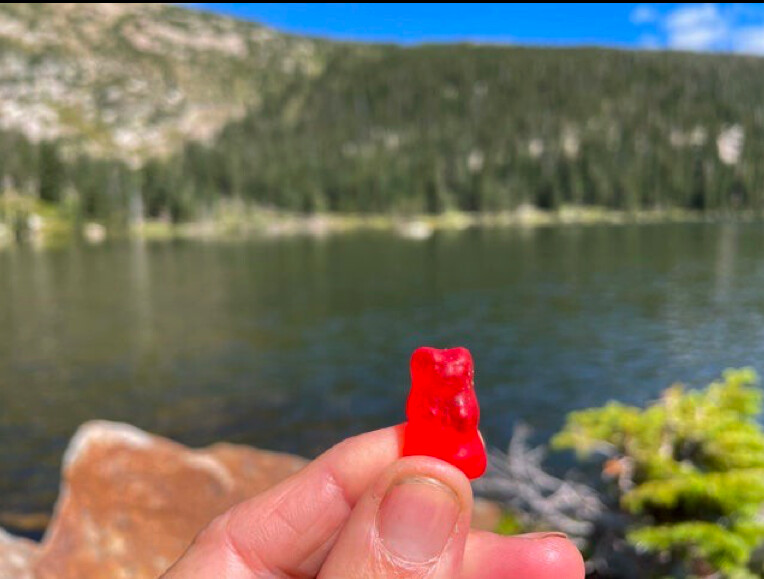
It was 10 a.m. at a pristine mountain lake in Colorado when I ate my first convenience store gummy bears, and—no surprise here—they were delicious. I’d packed a reusable plastic bag with a heartier serving (read: more than the recommended nine bears) of Albanese Gummi Bears, and another reusable bag of Haribo Goldbears and shoved them in my hydration pack. This type of candy is usually made of corn syrup and sugar, with “natural and artificial flavors.”
I was a couple rugged mountain miles to a lake with my dog. I sat on a rock and ingested the candy, noting how the Albanese Gummi Bears, which a friend had raved about to me, were insanely soft and chewy. Maybe too soft and chewy—I ate all of them within 30 seconds. They don’t require a lot of masticating, which is a bonus while running, but a negative if you don’t want to inhale a giant bag of gummy bears in one sitting.
I also ate a few (again more than nine) Haribo Goldbears. This is the brand I used to carry and eat during multi-day adventure races. They are, in a word, gummier. They take more effort to chew, which is fine while hiking or paddling, but can be a pain (and a choking hazard) while running or cycling. They too, are delicious (I’m personally partial to the pineapple flavor).
The consumption left my teeth feeling slimy, like they do whenever I eat something super-sugary. My stomach felt OK—not great—on the steep and rocky descent, but I felt a little jittery, like I’d had too much coffee.
I didn’t crash and burn afterward, but it was only a five-mile outing. I didn’t feel great the rest of the day, though.
Since energy chews hit the scene some years ago, I’ve relied on them to both satiate my love of gummy candy while exercising and to keep me going. I’ve used them on countless mountain running adventures, ski tours, hikes with kids, and more. But for this gummy-to-gummy comparison, I took them on a mountain run three days after the initial gummy bear test.
I ate a sleeve full of Salted Watermelon Clif Bloks about six miles into a rugged run towards another alpine lake. And I pounded a bag of Honey Stinger Pink Lemonade Energy Chews around mile 11.
Both served my needs: I was fatigued and hungry, sweating profusely, and borderline depleted. I ate more on that 15-mile run than just chews—some nuts, pretzels, zucchini bread with walnuts—but the chews were my on-the-go snacks while the others I ate sitting at a lake or walking to warm-up.
I didn’t get the sugary coating on my teeth; I don’t from chews. And I didn’t get the weird jitters. I also didn’t feel the guilt-cheating sensation I had on my Gummy Bear Run. The ingredients of both Clif Bloks and Honey Stinger Energy Chews include feel-good sugars like organic tapioca syrup, organic sugar, and organic honey, plus organic color from black carrot juice.
Aside from the better sugars and ingredients in general of energy chews, what both packs of chews have that gummy bears do not are a substantial amount of electrolytes. I feel like I need the extra sodium provided by chews when I exert myself; replacing it helps me feel balanced.
There is less sugar in the full bag (two servings) of both Clif Bloks and Honey Stinger Energy Chews than in two servings of gummy bears. (Those two servings would be a count of 18 bears.) I’m not sure why the sugar of chews doesn’t make me feel jittery and gross like the sugar of gummy bears. Maybe it’s partially psychosomatic, but maybe it has to do with the good things chews have that bears do not.
Honey Stinger chews also provide 70 percent the recommended dietary allowance of Vitamin C, and their new Caffeinated Chews (Strawberry Kiwi, Cherry Cola, and Stingerita Lime) contain 50 milligrams of caffeine (100 milligrams for whole pack) from tea for sustained energy. Black Cherry, Tropical Punch, and Orange Clif Bloks contain 50 milligrams caffeine per serving, 100 milligrams per pack. And Clif Bloks have 18 milligrams of potassium, also beneficial electrolytes. (Strangely, Haribo Goldbears have two grams of protein per serving.)
Where Haribo and Albanese have an edge is in cost and availability. You can buy bears from those brands in a variety of stores and cost less than half per ounce than any of the chews, which are more of a specialty item.
I feel better eating energy chews over gummy bears, both on an endurance/performance level and on a guilt level, not that I, or anyone, should feel guilty eating candy once in a while. The only thing I might feel guilty about is the extra cost that I might incur during a race or an intense training cycle.
I find energy chews just as delicious as gummy bears, and both feel like a treat while out on an adventure of any sort. The energy chews don’t coat my teeth in sugar or threaten a sour belly, something I get when I ingest too much sugar on a run. Eating energy chews on a run or any outing that requires endurance just makes more sense than eating gummy bears.
Our veteran gear maven, Lisa Jhung, has been testing gear for 25 years. She’s sprayed herself down with a hose to test the waterproofness of rain jackets, set up treadmills in her yard for weeks of testing, and stashed shoes in bushes to change mid-run.
In this column, Vetted, she inspects, tests, and muses on all things outdoor gear.
(09/16/2023) ⚡AMPby Outside Online
2023 World Athletics Championships nearly triples last year's attendance
Even to television spectators, it was obvious that attendance numbers at the 2023 World Athletics Championships were significantly higher than in Eugene in 2022. But now, a recent report in the Budapest Business Journal reveals the numbers for this year’s event were nearly three times last year’s attendance figures.
Budapest 2023 organizers reported that a staggering 404,088 tickets out of an available 420,000 were snapped up and used by spectators, highlighting track and field’s popularity in Europe. This is two and a half times the total attendance of 146,033 fans from Eugene.

This is surprising, considering this year’s world champs took place over nine days, whereas last year’s schedule was 10 days. A total of 267,331 tickets were sold for the evening sessions and 136,757 tickets for the morning sessions.
What’s even more impressive is the diversity of the Budapest audience. Track fans from 120 different countries flocked to the Hungarian capital, creating an atmosphere of global celebration, competition and unity. Approximately 40 per cent of all attendees came from abroad, while 60 per cent were Hungarian citizens.
The Hungarians dominated the attendance figures, showcasing their support for the ongoing events and their athletes. Following closely were visitors from the U.K., Germany and the U.S.A., who also made up a significant percentage of the ticket numbers. Obviously, Hungary was more of a central location for incoming fans, and this time around, it did not require a three-hour drive from the nearest international airport to reach the stadium (i.e., Portland to Eugene).
Budapest’s larger size and population provided better accommodation for attendees, athletes and media, eliminating the need for fans to book hotels hours away from the event, plus the headache of paying thousands of dollars for accommodation.
In an interview with the reigning world and Olympic pole vault champion, Sweden’s Mondo Duplantis, he revealed that Budapest 2023 was one of the best crowds he’s ever seen. “Eugene was an amazing championship in its way, but athletes knew the vibe would be different in a bigger metropolitan area,” said Duplantis. “It was naturally easier for energy to carry over around the city and into the stadium—it felt electric when I was competing.”
Duplantis said he immediately noticed the increased popularity of the event when he arrived in Budapest. “You could tell that the fans showed up in numbers,” said Duplantis. “It’s important for the growth of our sport—you need eyeballs and people there.”
The surge in attendance at the 2023 championships seems to be a testament to the enduring appeal of athletics on the global stage and specifically in Europe, which currently hosts 10 of the 14 stops on the Wanda Diamond League.
As the next World Athletics Championship is set to unfold in the world’s largest city, Tokyo, in two years, the importance of nurturing and expanding the sport of track and field is evident. The opportunity to develop the sport on a grander scale and reach a global audience is now.
(09/16/2023) ⚡AMPby Running magazine
Best Streaming Services for Sports 2023
Streaming services now provide the sports content we crave. We have narrowed down the top services that offer the best channel and league selections for sports enthusiasts. Numerous services exist, each presenting a distinct lineup of channels and league coverage. Continue reading to assess and compare each one, ultimately making an informed choice based on your preferences.
#1 ESPN Plus
ESPN's dedicated streaming service with a variety of sports content, including NHL, NBA, etc. The service offers access to non-market NHL games, LaLiga Bundesliga matches for $10 per month or $100 per year. An ESPN Plus subscription will include prestigious tennis events like Wimbledon and the US Open, select out-of-market MLB games, and NCAA football and basketball matchups. Don't miss the opportunity to watch rising talents in the Little League World Series and catch thrilling UFC matches included in the subscription. Please note that live NBA basketball and NFL football games are not available, and pay-per-view UFC events require an additional fee.
#2 Hulu Plus Live TV
Hulu Plus Live TV provides a unique option for sports enthusiasts. While it may lack certain league-owned channels, it comes bundled with an ESPN Plus subscription. The cost is $70 per month, and the service includes major networks, ESPN, TBS, TNT, FS1, FS2, and four RSNs. However, it does not offer MLB, NHL, NBA, or Tennis channels, except for the NFL network.
If you choose sports subscription services, then you have a Smart TV. Did you know that you don't need to have a Smart TV to watch sports streaming? To get online sports access, you just need to buy and unlock Fire Stick's, as well as connect it correctly. By "unblock" we mean to open all available 2023 sports content. To do this, you need to know how to use a VPN on Amazon Fire Stick. Once you figure it out, you can watch Netflix, Hulu, Amazon Prime, and other services without regional restrictions.
#3 YouTube TV
YouTube TV is priced at $65 per month, but presently, you can get it at $10 off for the first three months. It provides four RSNs, FS1, FS2, ESPN, TBS, TNT, and all major national networks. The standard package includes almost all league channels, except the NHL Network. You can also opt for an extra Sports Plus package, although it doesn't provide much, except BeIn and NFL Red Zone. To find out which local networks and RSNs are available in your area, enter your ZIP code on YouTube TV's welcome page.
#4 Peacock Premium
NBC's Peacock offers not only on-demand entertainment but also live sports. Subscribing to the $5-a-month Premium tier grants users access to a range of thrilling events, including English Premier League soccer, the Olympics, select WWE matches, Indy Car races, and certain PGA golf tournaments. The platform also broadcasts less mainstream sports like rugby, figure skating, cycling, and track and field. True, to see everything that is available on the service, you will need a VPN extension Chrome for a PC or a VPN for a router. Although Sunday Night Football is a standout attraction during the season, Peacock shines brightest for avid soccer and wrestling enthusiasts.
#5 Sling TV
Sling TV packages cater more to casual fans rather than offering an extensive range of options. Notably, Sling Blue lacks a single RSN for local broadcasts, but you can still access some national broadcasts. The Orange plan includes ESPN, while the Blue plan offers FS1 and the NFL network. However, neither plan grants access to ABC, which may be inconvenient for many fans. For an additional cost of $11 a month with either the Blue or Orange plan or $15 for the combined Orange and Blue plan, you can opt for the Sports Extra add-on. This add-on includes the NBA, NHL, and MLB channels, along with PAC 12, BeIn, Tennis channel, and more. The individual plans are priced at $40 a month each, while the combined Orange and Blue plan costs $55 a month. Currently, you can enjoy your first month at a 50% discount. You can check which local channels are available in your area here.
#6 FuboTV

FuboTV is currently priced at $75 per month and provides access to 35 RSNs. It features ESPN but lacks TBS and TNT, which might pose an issue for certain sports enthusiasts. Additionally, it offers local networks such as ABC, NBC, CBS, and Fox, along with FS1, FS2, BeIn Sports, the Big 10, and the Golf channel.
If you wish to enjoy additional content, you can opt for the Fubo Extra Package, available for an extra $8 per month. Alternatively, you can subscribe to the $85-a-month Elite streaming tier, which includes Fubo Extra and provides access to NHL, NBA, MLB, SEC, PAC 12, and Tennis channels. To view the complete list of local networks and RSNs available on FuboTV, click here. Feel free to read our detailed FuboTV review for more information.
Conclusion
While this roundup primarily focuses on sports content, these services operate within a broader context. The costs of monthly subscriptions can quickly accumulate, and not everyone in your household may share the same interest in sports. Depending on the package you choose, these options can cost upwards of $60 per month, and add-ons can further increase the monthly price.
It's worth considering whether these services offer value for other members of your household. The best sports streaming services often provide impressive lineups of news and entertainment programming, making them suitable for general audiences as well.
(09/15/2023) ⚡AMPShericka Jackson maintains attack on Flo Jo's world record as she heads to Prefontaine Classic
Two-time World 200m champion Shericka Jackson will be eyeing the world record when she heads to the final Diamond League Meeting, the Prefontaine Classic, on Sunday.
She hoped to smash the late Florence Joyner’s record at the meeting in Brussels but missed out after clocking 21.48 to cross the finish line. The late Joyner’s record stands at 21.34 and Jackson is the only woman who has gotten close to the record.

She, however, has not lost hope and she wants to give her best shot when she races on US soil one more time.
The 29-year-old has sweet memories of the Hayward Field in Eugene since she won the 200m at last year’s edition of the event.
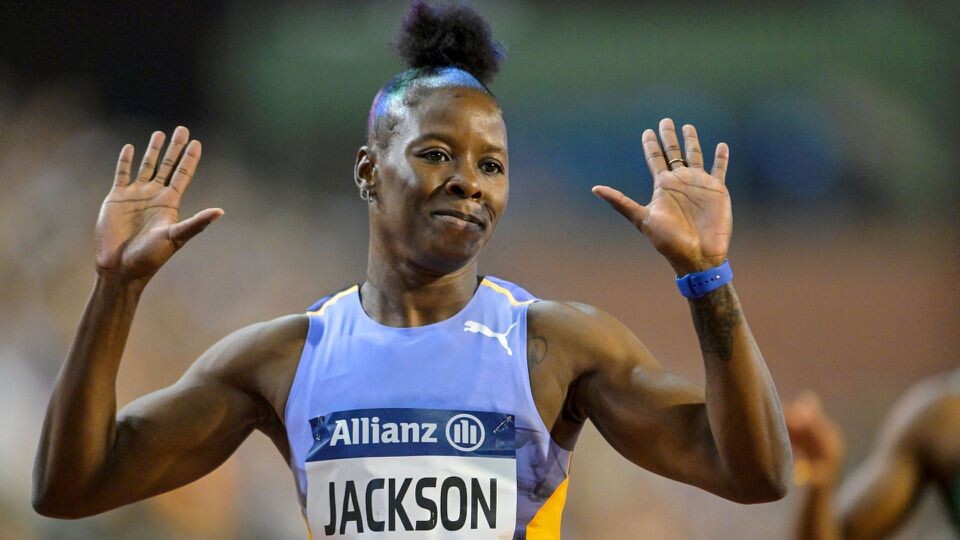
“I believe in myself, I believe in what I’m capable of doing. If it comes it comes if it doesn’t it’s okay. I’ll cool down, take a little break, and then prepare for next year.
But as I said the focus is on this year…if I get the record in Eugene, then it will be a plus but I won’t kill myself,” the Jamaican said.
She has been unbeaten so far this year in the 200m and that shows how formidable she is to take down the record.
The World 100m silver medalist opened her track season in the 200m at the Diamond League Meeting in Rabat, Morocco where she reigned supreme.
She also clinched top honors at the Jamaican Championships before also winning at the Gyulai István Memorial, a Hungarian Athletics Grand Prix.
She then proceeded to the Diamond League Meeting in Monaco before heading to the World Championships in Budapest, Hungary where she defended her title.
After the World Championships, she competed at the Meetings in Zurich and Brussels where she bagged wins. She is now eyeing glory at the final Diamond League Meeting.
(09/15/2023) ⚡AMPby Abigael Wuafula
Prefontaine Classic
The Pre Classic, part of the Diamond League series of international meets featuring Olympic-level athletes, is scheduled to be held at the new Hayward Field in Eugene. The Prefontaine Classicis the longest-running outdoor invitational track & field meet in America and is part of the elite Wanda Diamond League of meets held worldwide annually. The Pre Classic’s results score has...
more...Derara Hurisa is the latest in a long list of Ethiopian greats to commit to the 2023 TCS Toronto Waterfront Marathon
Derara Hurisa is the latest in a long list of Ethiopian greats to commit to the 2023 TCS Toronto Waterfront Marathon scheduled for October 15th. Once again, the event is a World Athletics Elite Label race.
The 26-year-old has had an extraordinary marathon career to date ever since winning in his debut at the 2020 Mumbai Marathon. There he ran 2:08:09 which remains his personal best despite a few other memorable outings.
Two years ago Hurisa won the Guadalajara Marathon at 1,600m altitude in Mexico eight months after achieving notoriety for all the wrong reasons in Vienna. Hurisa, then still relatively young at 23 years of age, crossed the finish line first at the Vienna Marathon with a time of 2:09:22 three seconds ahead of Kenya’s Leonard Langat. No sooner had Hurisa crossed the finish then officials approached him and within minutes he was disqualified.
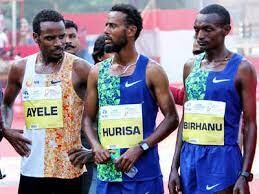
World Athletics has instigated strict rules to limit the thickness of racing shoes and it was found that Hurisa had worn a different pair of shoes to those he submitted in the pre-race inspection. They were one centimetre too thick. It is believed this was the first time a marathoner had been disqualified under these rules.
“My preparation for Vienna marathon was very good,” he says looking back on the incident. “I had to switch my shoes because it was my very first time putting on those shoes. It wasn't the shoes I wear when I was in training. So I decided to switch and use them without knowing it was different. The colour was similar.”
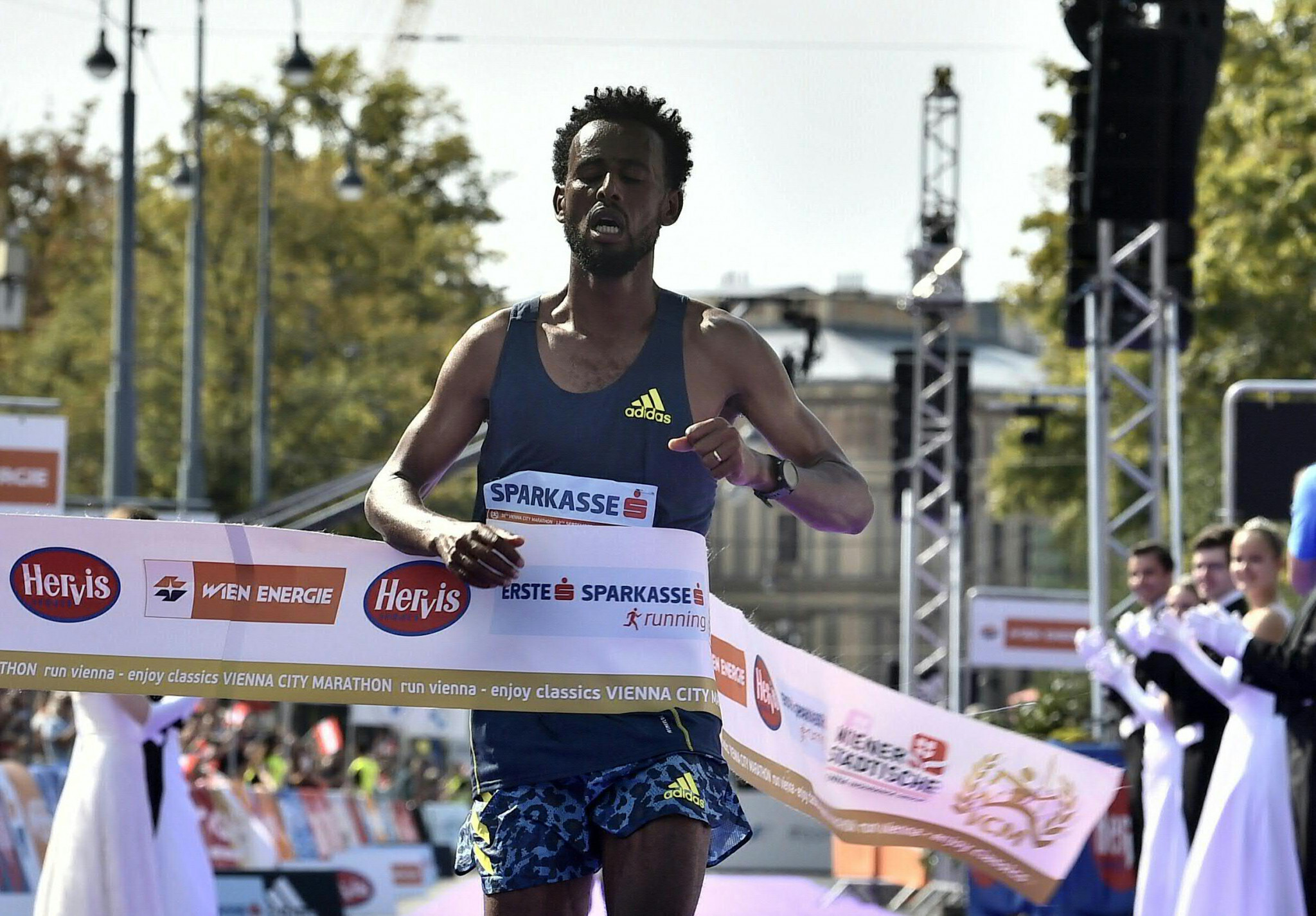
Not only did he run himself to exhaustion over the 42.2 kilometres but the €10,000 first place prize money went to Langat and not himself. He admits he was very angry to learn of his mistake.
“I was shocked by that news when (Eritrean runner) Tadesse Abraham told me that I was disqualified,” he remembers, “because it wasn't something I was expecting. Yes, I was angry, definitely.”
As an indication of Hurisa’s potential Langat returned to Vienna a year later and finished second in 2:06:59. The Ethiopian believes he is capable of times quicker than this. Since then he has put the disappointment behind him. Earlier this year he finished 2nd in the Stockholm Marathon which features many of the sites of the Swedish capital but can also be challenging due to its numerous turns and warm June weather. His time there was a modest 2:11:01 on a hot day. Toronto Waterfront Marathon has far less turns and with a course record of 2:05:00 (Philemon Rono of Kenya) is far more inviting. He is optimistic of a great run in Toronto after some good early training sessions.
“It’s going great and yes, I'm pleased with my fitness level more than ever,” he reports. “I have been training for six or seven days in a week. Compared to previous marathon buildups it has been much better.”
Asked to reveal his goal for Toronto he is concise and to the point: “I would like to achieve a victory with a good time.” Hurisa grew up in Ambo in western Ethiopia and was inspired by the exploits of Kenenisa Bekele the three-time Olympic champion and former world 5,000m and 10,000m record holder.
After a good result at a championship cross-country race in Oromia he was recruited by the Bahrain athletics federation while in his teens.
For three years he lived in the oil rich country earning a salary to run. At the 2015 World Cross Country Championships in Guiyang, China he placed 22nd in the Under-20 race helping Bahrain to a 4th place finish. A year later though he went back to Ethiopia and now travels on an Ethiopian passport.
These days he is focused on the marathon under the watchful eye of coach Gemedu Dedefo and enjoys spending time with his wife and two children.
"I like to spend my time with my family - I'm married and I have one boy and one girl - and I like going to church,” he explains. “I do return to my birth village whenever there is holiday.” Conditions are likely to be much cooler in Toronto compared to what he experienced in Mumbai in his victorious debut. Clearly, he will be prepared to run with the leaders. And he is certainly due some good luck.
About the TCS Toronto Waterfront Marathon
The TCS Toronto Waterfront Marathon is Canada’s premier running event and the grand finale of the Canada Running Series (CRS). Since 2017, the race has served as the Athletics Canada national marathon championship race and has doubled as the Olympic trials. Using innovation and organization as guiding principles, Canada Running Series stages great experiences for runners of all levels, from Canadian Olympians to recreational and charity runners. With a mission of “building community through the sport of running,” CRS is committed to making sport part of sustainable communities and the city-building process.
To learn more about the TCS Toronto Waterfront Marathon, visit TorontoWaterFrontMarathon.com.
(09/15/2023) ⚡AMPby Paul Gains
TCS Toronto Waterfront Marathon
The Scotiabank Toronto Waterfront Marathon, Half-Marathon & 5k Run / Walk is organized by Canada Running Series Inc., organizers of the Canada Running Series, "A selection of Canada's best runs!" Canada Running Series annually organizes eight events in Montreal, Toronto and Vancouver that vary in distance from the 5k to the marathon. The Scotiabank Toronto Waterfront Marathon and Half-Marathon are...
more...Geay, Korir, Kibet and Tanui headline fastest Sydney Marathon field
Gabriel Geay, Moses Kibet, Angela Tanui and Judith Korir will be among the athletes in action when the Sydney Marathon presented by ASICS, a World Athletics Elite Platinum Label road race, takes place on Sunday (17).
The field’s experience in global and major marathon racing will make it the fastest marathon pack ever assembled in Australia, with homegrown and international talent battling it out on the event’s new course.
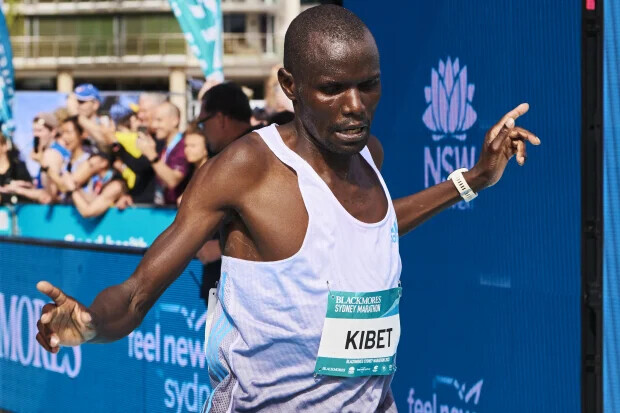
In the women’s field, Kenya’s 2022 World Championships silver medalist and Paris Marathon champion Korir makes her Australian debut. The 27-year-old, who finished sixth in the London Marathon in April, ran her PB of 2:18:20 when finishing runner-up to GotytomGebreslase on the global stage in Oregon last year.
She faces six other sub-2:22 women, including her compatriot Tanui, who ran 2:17:57 to win the Amsterdam Marathon in 2021. She went on to place fourth in the Tokyo Marathon the following year and then secured sixth place in Oregon.
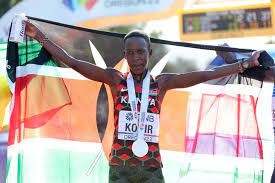
Haven HailuDesse is among the seven Ethiopian athletes in the field and she will look to complete her first marathon since winning in Osaka in 2:21:13 in January. Her PB of 2:20:19 was also set in Amsterdam in 2021.
Eritrea’s NazretWeldu finished fourth and then eighth in the past two World Championships marathons, while SiraneshYirgaDagne has a best of 2:21:08.
Australian marathon record-holder Sinead Diver, who broke the national marathon record last year in Valencia with a time of 2:21:34, will lead the local elite field, making her Sydney Marathon debut.
The field also features USA’s Betsy Saina, a 2:21:40 marathon runner at her best.
Tanzanian record-holder Geay leads the men’s field with his PB of 2:03:00 set in Valencia last year. The 27-year-old went on to finish second in the Boston Marathon in April, clocking 2:06:04 behind winner Evans Chebet (2:05:54), and he placed seventh in the World Championships marathon in Oregon in 2022.
But Kibet has more experience when it comes to racing in Australia as he won last year’s Sydney Marathon, setting an Australian all-comers' record of 2:07:03 to beat his Kenyan compatriot Cosmas Matolo Muteti by just two seconds.
Oceanian record-holder Brett Robinson, who broke his Australian compatriot Rob de Castella’s long-standing area record in Fukuoka last year by running 2:07:31, will lead the domestic contenders.
The field features a total of nine sub-2:06 men, with Geay and Kibet joined by Ethiopia’s Getaneh Molla (2:03:34), Kenya’s Jonathan Korir (2:04:32), Ethiopia’s Abayneh Degu (2:04:53), Kenya’s Abraham Kipkemboi Kiptoo (2:05:04), Morocco’s Othmane El Goumri (2:05:12), Ethiopia’s Amedework Walelegn (2:05:27) and Kenya’s Laban Korir (2:05:41).
(09/15/2023) ⚡AMPby World Athletics
Sydney Marathon
The Sydney Marathon is a marathon held annually in Sydney, Australia. The event was first held in 2001 as a legacy of the 2000 Summer Olympics, which were held in Sydney. In addition to the marathon, a half marathon, 9 kilometres (5.6 mi) "Bridge Run", and a 3.5 kilometres (2.2 mi) "Family Fun Run" are also held under the banner...
more...Brazilian runner breaks Guinness World Record with 366 consecutive marathons
A Brazilian ultrarunner has set a new Guinness World Record for the most consecutive marathon-distance runs in 366 days. On August 28, Hugo Farias of São Paulo completed his 366 consecutive 42.2-kilometer runs to finish his Projeto Propósito in front of a crowd of 2,000 people.
Farias, 44, started his journey on Aug. 28, 2022, after quitting his job at IBM. He set out on this challenge with the goal of completing 365 marathons in 365 days to show people that anything is possible. He did not decide to do a 366th until recently, as he wanted to eclipse the Guinness World Record and surpass the accomplishments of Belgium’s Stefan Engels and England’s Gary McKee, both of whom completed the full calendar year.
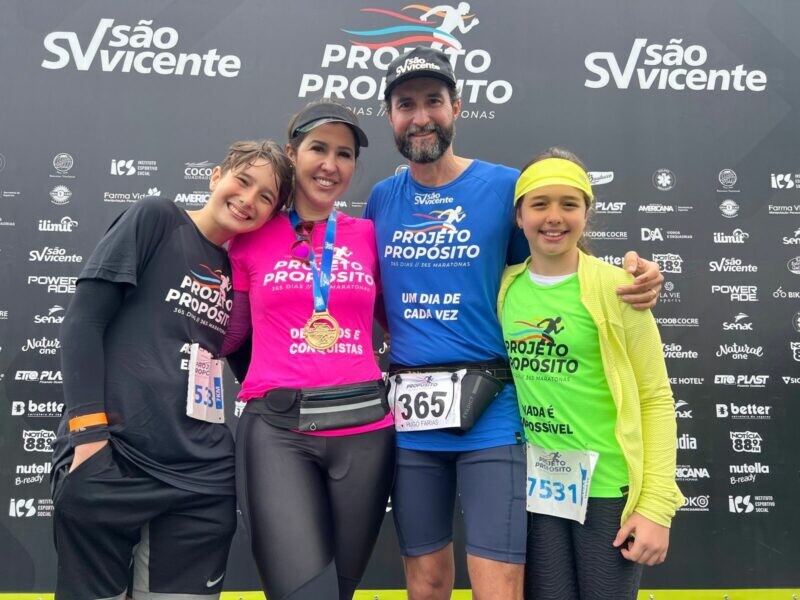
Farias tracked the entire project on Strava, where he wore daily bib numbers according to the marathon number he was on. After completing his 366th run, Farias joked, “I think I will start reducing volume now.”
The father of one covered an astonishing 15,443 km, which is equivalent to a flight from New York to Singapore, and 123,000 metres of elevation gain, or roughly 14 times the height of Mount Everest. According to his Strava, Farias went through 27 pairs of running shoes during the challenge and had 10 shoes on rotation (over 10 days) for the first five months.
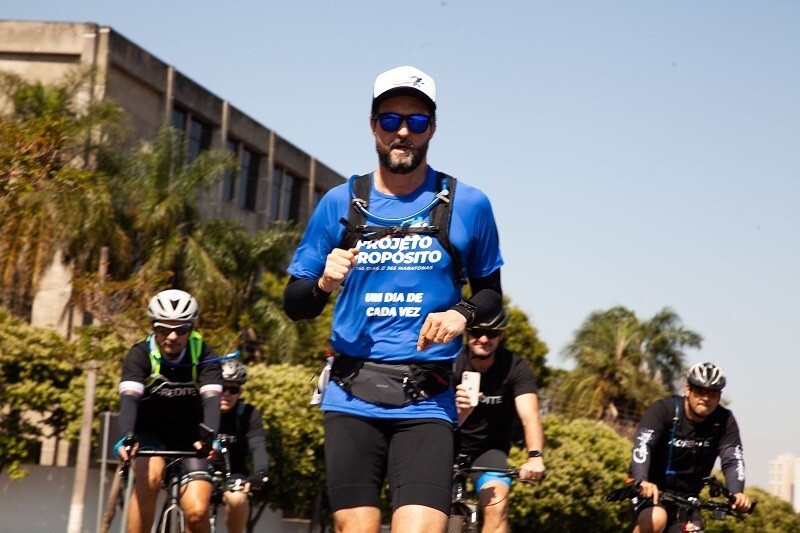
His Projeto Propósito required extensive planning, and Farias had support from a team of health professionals which included running coaches, a physical trainer, a physiotherapist, a psychologist, a nutritionist, an orthopedist, a dermatologist (his wife), plus cardiologists and physiologists. Farias also dedicated three months to physical and mental preparation before undertaking his marathon journey.
His Projeto Propósito required extensive planning, and Farias had support from a team of health professionals which included running coaches, a physical trainer, a physiotherapist, a psychologist, a nutritionist, an orthopedist, a dermatologist (his wife), plus cardiologists and physiologists. Farias also dedicated three months to physical and mental preparation before undertaking his marathon journey.
(09/15/2023) ⚡AMPby Marley Dickinson
Bernard Koech using Copenhagen Half Marathon to calibrate for Amsterdam Marathon
Koech will be testing his limits by competing against youngsters.
Reigning Haspa Marathon champion Bernard Koech will use the Copenhagen Half Marathon to fine-tune for the Amsterdam Marathon scheduled for Sunday, October 15.
The Copenhagen Half Marathon is scheduled for Sunday, September 17 and Koech will be testing his limits competing against youngsters.
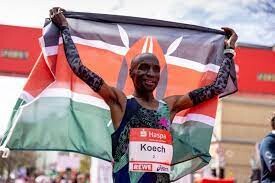
The 35-year-old is the second fastest in the field with a Personal Best time of 59:10. 24-year-old Kennedy Kimutai headlines the strong field with a time of 58:28.
Kimutai opened his season at the New York City Half Marathon where he finished 12th then proceeded to settle fifth at the Adizero Road to Records.
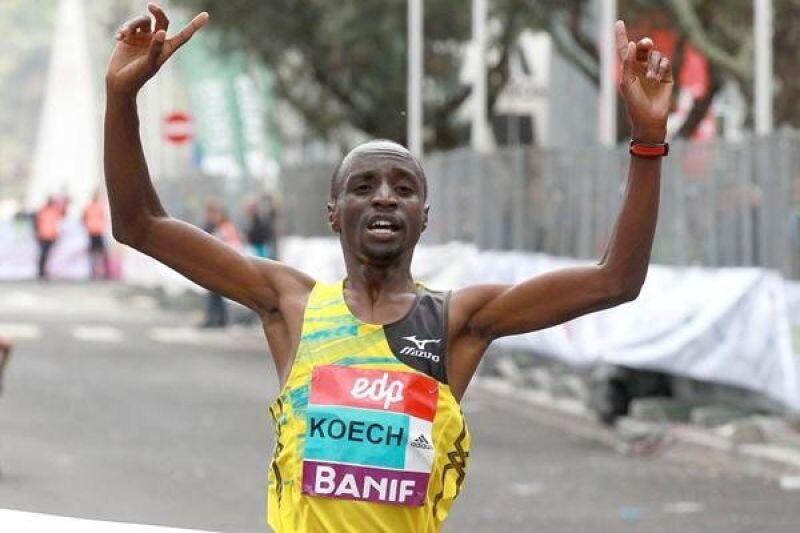
Bravin Kiprop is the third fastest with a PB time of 59:22. Greatest opposition for Team Kenya might come from the Ethiopian charge. Gerba Dibaba will be lining up with a PB time of 59:39 and he will enjoy the company of Gemechu Dida who has a PB time of 59:53.
The women’s field is headlined by Hawi Feysa who possesses a Personal Best time of 1:05:41 and is followed closely by compatriot Bosena Mulate who has a PB time of 1:05:46.
Gladys Chepkirui is the third fastest in the field with a time of 1:05:46. The 29-year-old Kenyan will be hunting for the first win of her season when she lines up against other strong women.
She opened her season with a fourth-place finish at the Zurich Half Marathon before going to a 5km race at the ASICS Österreichischer Frauenlauf where she finished third.
Her last race was at the Scania Half Marathon Zwolle in Netherlands where she finished second. Chepkirui will enjoy the company of compatriots Irine Cheptai and Viola Cheptoo among others.
(09/14/2023) ⚡AMPby Abigael Wuafula
Copenhagen Half Marathon
The Copenhagen Half Marathon was the first road race in Scandinavia and is one of the fastest half marathons in the world. The Copenhagen Half Marathon has been awarded with the International Association of Athletics Federation's (IAAF) most distinguished recognition - the IAAF Road Race Gold Label. Copenhagen Half Marathon was awarded the IAAF Road Race Bronze Label in January...
more...The world's fastest half marathon will once again feature big international names such as Kandie, Kejelcha and Kejeta in the hunt for big records
The Valencia Half Marathon Trinidad Alfonso Zurich, organized by SD Correcaminos, is still the world’s fastest race over this distance thanks to Letesenbet Gidey’s world record (1:02:52, 2021) and it is the second fastest for men, with a time set by Kibiwott Kandie (57:32, 2020).
With this high-quality list, the Valencia Half Marathon will count this year with major international elite names who will travel to the city of running on October 22, to fly through its streets.

With the aim of getting as close as possible to the world record achieved in 2021 and to be the world’s best in 2023, the women’s elite will be led by four athletes with sub 1h06 times, among them Melat Kejeta (GER, 1:05:18), current European record holder over the distance, together with Margaret Chelimo (KEN, 1:05:26), Gotytom Gebreslase (ETH, 1:05:36) and Tsigie Gebreselama (ETH, 1:05:46). In addition, ten other runners with 21.0795-kilometer times under 1h10 complete the initial list of names confirmed to run on October 22.
In the men’s race, familiar faces to the Valencia Half Marathon Trinidad Alfonso Zurich such as former winners Kibiwott Kandie (KEN, 57:32) and Yomif Kejelcha (ETH, 58:32) are among the favorites, together with other runners with times under 59 minutes including Matthew Kimeli (KEN, 58:43), Tadese Worku (ETH, 58:47), Hagos Gebrhiwet (ETH, 58:55) and Sebastian Sawe (KEN, 58:58).

“Valencia proves that it is, once again, the race chosen by the world elite to beat their records”, says Marc Roig, coach of the international elite for the Valencia Half Marathon, who adds that “the return of last year’s winners in the men’s category is a sign that this race is well liked. We expect some great records, as well as national records and to finish the year with the fastest world record of the year for both men and women”.
The revamped route of the Valencian course will continue to offer the opportunity for outstanding performances in a race long established at the top level worldwide, and that continues to be committed to experienced athletes, as well as to young hopefuls and debutants at the distance to maintain the sporting successes, both of international elite and leading national runners, who will be announced in the next few days.
(09/14/2023) ⚡AMPby AIMS
Valencia Half Marathon
The Trinidad Alfonso Valencia Half Marathon has become one of the top running events in the world. Valencia is one of the fastest half marathon in the world. The race, organized by SD Correcaminos Athletics Club, celebrated its silver anniversary in style with record participation, record crowd numbers, Silver label IAAF accreditation and an atmosphere that you will not find...
more...Agnes Ngetich becomes multi millionaire after smashing women-only 10km World Record
The 22-year-old broke the women-only world 10km record in Romania, surpassing the late Agnes Tirop's record, with Catherine Reline also shining for Kenya.
Kenya was once again thrust into the global limelight on Sunday after Agnes Ngetich shattered the women-only world 10km record by clocking 29:24 at the World Athletics Elite Label road race in Brasov, Romania, on Sunday.
At only 22, Ngetich covered the initial 5km in 14:25, eclipsing the previous record for that distance by four seconds.

The significance of this feat becomes more profound when considering that the previous record was held by the late Agnes Tirop of Kenya.
Running closely behind, Kenya was once again represented on the podium by Catherine Reline who clocked a solid 30:14, securing second place. Uganda's Joy Cheptoyek completed the top three with a commendable time of 30:34.
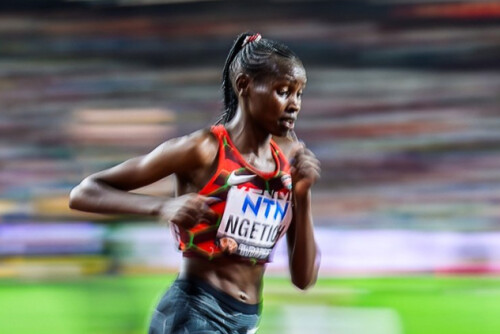
World Athletics, in its statement, lauded Ngetich's achievement by saying, “As well as being the fastest women-only 10km, Ngetich's time is the third-quickest by a woman in history."
This achievement is only behind the remarkable runs of 29:14 and 29:19 by Ethiopia's Yalemzerf Yehualaw, both accomplished in mixed races.
The remarkable feat was not just a win for Ngetich in terms of accolades but also a significant financial windfall.
The race organizers had initially placed the prize money at $5,000 (Ksh 731,000). However, smashing a world record comes with its unique set of rewards. and Ngetich is set to receive an additional bonus of $50,000 (Ksh7.3 million) from World Athletics.
This sums up to a whopping total of $55,000 (Ksh8.4 million) that Ngetich will be taking home, a well-deserved reward for her impeccable performance.
Speaking after the race, an ecstatic Ngetich remarked, “It is quite a surprise to me. I didn’t expect to break the world record. All I ever wanted was a personal best (PB) of 30:00 or 30:02 but to set a new world record in the women’s 10km was the last thing I expected.”
As fans across the globe celebrate her achievement, many are confident that this is just the beginning for the World Cross Country bronze medalist.
With youth on her side and a clear demonstration of her capability, the world waits in anticipation of her next move. Will she redefine another record, or perhaps set a new standard for future generations to aspire towards? Only time will tell.
For now, Agnes Ngetich revels in her well-deserved moment of glory, inspiring millions and etching her name in gold.
(09/14/2023) ⚡AMPby Festus Chuma
Brasov Running Festival 10K
"Brasov Running Festival” is set to become the iconic running event of Romania, with elite, popular and children races, concerts, conferences and other running related activities. The elite 10K race, Trunsylvania International 10K is expected to enjoy an impressive participation of world class runners on a very fast course. -The only World Athletics Elite Label 10K in South-East Europe -The...
more...Six tips to master your easy runs
Recovery runs seem like the most straightforward session on your training plan, but many of us struggle to get them right. Too often, runners push themselves too hard on their easy days, which not only takes away from their ability to perform during workouts, but ultimately leads to injuries and burnout. If you frequently find yourself picking up the pace when you know you shouldn’t, try implementing these tips to help you slow down.
1.- Run with a friend

Make your easy days a social occasion, and enlist a friend to chat with while you run. You’ll often hear people say your recovery runs should be done at “talking pace,” and this is a great way to ensure they stay that way. Just choose your running buddy wisely–an over-competitive friend or someone who always tries to stay a half-step ahead of you can end up making you run faster. (Schedule runs with those pals on workout days instead.)
2.- Ditch the GPS (and Strava)

We know, we know–if it’s not on Strava, it didn’t happen. But if you’re someone who can’t resist cranking up the pace for the kudos, then leave Strava and the GPS watch at home. Recovery runs are a great opportunity to disconnect and run by feel, rather than by a prescribed pace. If you’re running hard enough on your workout days, your body will welcome the slower pace.
3.- Run by heart rate
This one takes a little research beforehand, but running by heart rate is an excellent way to monitor your pace on easy days, because it takes into account other factors, such as how much sleep you got the night before, how hot it is outside or how hilly your route is.
First, calculate your maximum heart rate. From there, you can determine what your heart rate should be for a variety of runs. Most experts recommend, for an easy run, targeting a heart rate that is 65-75 per cent of your maximum heart rate. Our suggestion? Stick to the lower end of that range.
4- Pick the right shoes
Your easy runs are not the time to put on your high-performance carbon-plated running shoes. Choose something very comfortable, rather than shoes that encourage speed.
5.- Focus on form
To take your mind off of how fast you’re going, try focusing on your form during your recovery runs. If you’re not sure what part of your running form you should try to improve, book an appointment with a physiotherapist who works with runners and who can give you a formal gait assessment. They will be able to show you what you need to work on and give you cues to practise to maintain good form, even at an easy, comfortable pace.
6.- Change up your music
Music is a known performance enhancer, and let’s face it–who doesn’t want to speed up when their favourite track comes on? If your playlist is hyping you up too much on your easy runs, try picking slower, more relaxing tunes, or listening to a podcast or audiobook instead.
(09/14/2023) ⚡AMPby Brittany Hambleton
Elite runners prepare for 40th anniversary Frankfurt Marathon
Guye Adola and defending champion Brimin Misoi join field – Visiline Jepkesho will run too.
Guye Adola has joined the starting line-up for the Mainova Frankfurt Marathon on Sunday, October 29. The Ethiopian of proven world-class for the event, winner of the Berlin Marathon in 2021 when he left the great Kenenisa Bekele trailing, has a best of 2:03:46 to his credit.
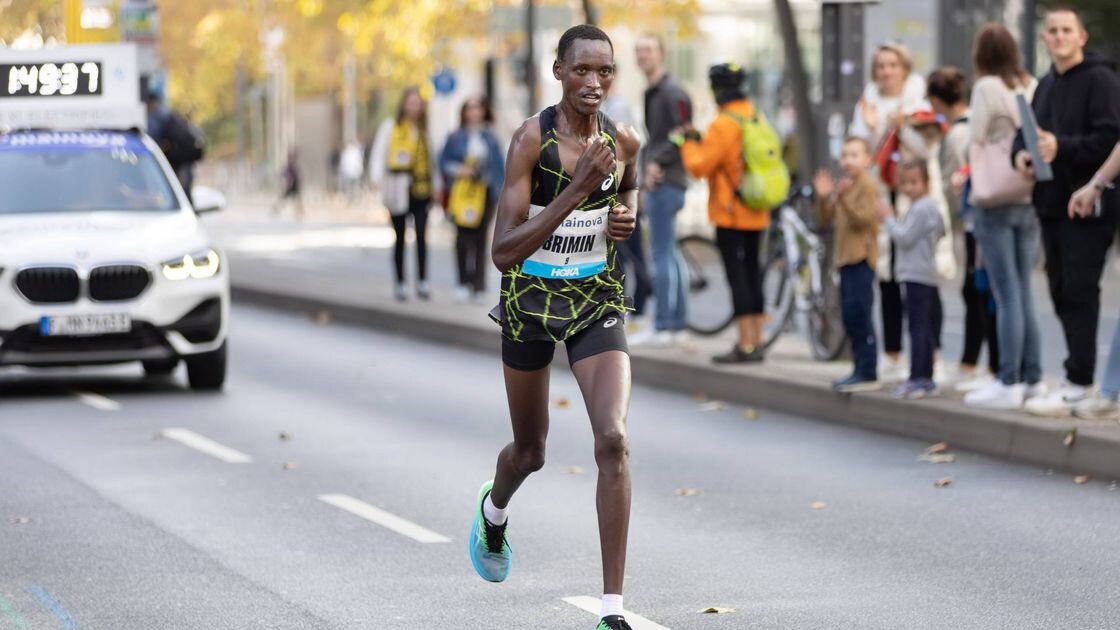
Among his rivals in Frankfurt will be the defending champion Brimin Misoi of Kenya and the latter’s compatriot Samwel Mailu who finished runner-up last year. The fastest woman on the current start list is also a Kenyan, Visiline Jepkesho, with a personal best of 2:21:37.
“I’m expecting a first-class race at our jubilee edition,” said the race director Jo Schindler. Germany’s oldest city marathon will celebrate its 40th edition on Sunday, October 29.
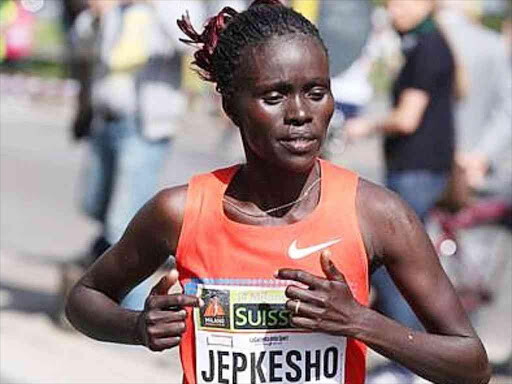
The Mainova Frankfurt Marathon is on course to maintain its reputation for strong performances among the elite and high numbers for the mass field with around 25,000 runners expected to take part on the last Sunday in October. The event holds an Elite Road Race Label, awarded by World Athletics, the sport’s governing body. Entries are still available at www.frankfurt-marathon.com
Guye Adola is the fastest man in the field of the current entries. His personal best of 2:03:46 was all the more impressive since he ran it on his debut at the distance in Berlin in 2017. Increasing his prestige still further, he finished second to the great Eliud Kipchoge and had led the great Kenyan until almost 40 kilometers. The greatest triumph of his career – so far – has also been in Berlin when he won the event two years ago in 2:05:45, a performance of special merit in warm conditions and leaving another all-time great, Kenenisa Bekele, well behind. A spate of injuries has prevented Adola from achieving his obvious aim of improving his personal best and adding to his success.
Brimin Misoi won the Mainova Frankfurt Marathon last year in impressive style, running a personal best of 2:06:11 which took him just over a minute clear of Samwel Mailu on the race to the finish in the Festhalle. The latter, whose entry for this year in Frankfurt had already been confirmed, has shown excellent current form. On April 23 he won the Vienna Marathon in a personal best and course record of 2:05:08. This places him tenth on times for the marathon rankings for 2023.
One of the leading contenders for the women’s title also has a victory in Vienna to her credit: Magdalyne Masai of Kenya ran 2:24:12 to win the title in April but her personal best of 2:22:16 comes from winning in Toronto in 2019. The fastest woman in the field in the current line-up is Visiline Jepkesho, also from Kenya, though her best of 2:21:37 goes back almost a decade to a fourth place in Paris in 2014.
Both will have to keep a sharp eye on Buzunesh Gudeta. The Ethiopian finished fourth in Barcelona in 2:22:38 in March. Another athlete to note is the European silver medalist in the marathon, Matea Parlov Kostro, whose participation has already been announced. The runner from Croatia set a personal best with victory in Hanover in spring with 2:25:45, continuing her upward trend.
(09/13/2023) ⚡AMPby AIMS
Mainova Frankfurt Marathon
Frankfurt is an unexpectedly traditional and charming city, with half-timbered buildings huddled in its quaint medieval Altstadt (old city), cosy apple wine taverns serving hearty regional food, village-like neighbourhoods filled with outdoor cafes, boutiques and street art, and beautiful parks, gardens and riverside paths. The city's cache of museums is second in Germany only to Berlin’s, and its nightlife...
more...Athing Mu a surprise entrant for Pre Classic Diamond League final
The entries for this weekend’s Prefontaine Classic, which will serve as the 2023 Diamond League final, were announced on Tuesday and they included a surprising name: Athing Mu.
The last time we saw Mu, the 2021 Olympic and 2022 world champion at 800 meters, she had just finished third in the 800m at the World Championships in Budapest on August 27 and looked set to end her season.
“I can go home and finally go on vacation and stop thinking about track & field,” Mu said after the race.
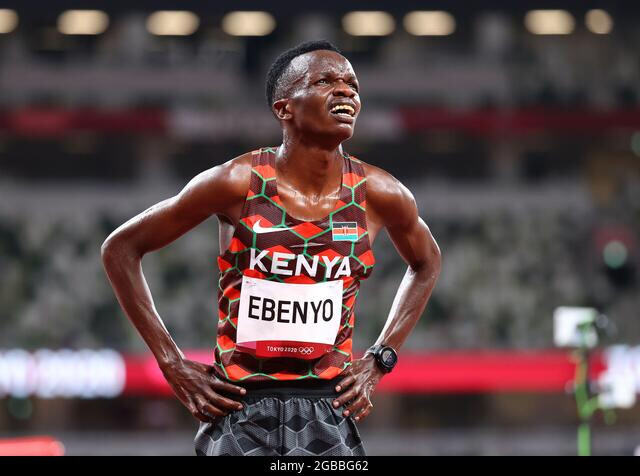
Whether it’s because Mu changed her mind or her sponsor Nike put its foot down (many Nike athletes are required to compete at the Prefontaine Classic as part of their contract), it sure looks like Mu is thinking about track & field again. She is listed among the entrants for the women’s 800 meters (Sunday, 5:19 p.m. ET) alongside world champion Mary Moraa of Kenya and Worlds silver medalist Keely Hodgkinson of Great Britain.
Just because Mu is on the start list does not guarantee that she is competing. She was supposed to run the Millrose Games in February but withdrew the week of the meet. She was listed among the entrants at the Music City Track Carnival in June — something she claimed to have no knowledge of — but did not compete there and also withdrew from the Ed Murphey Classic in August.
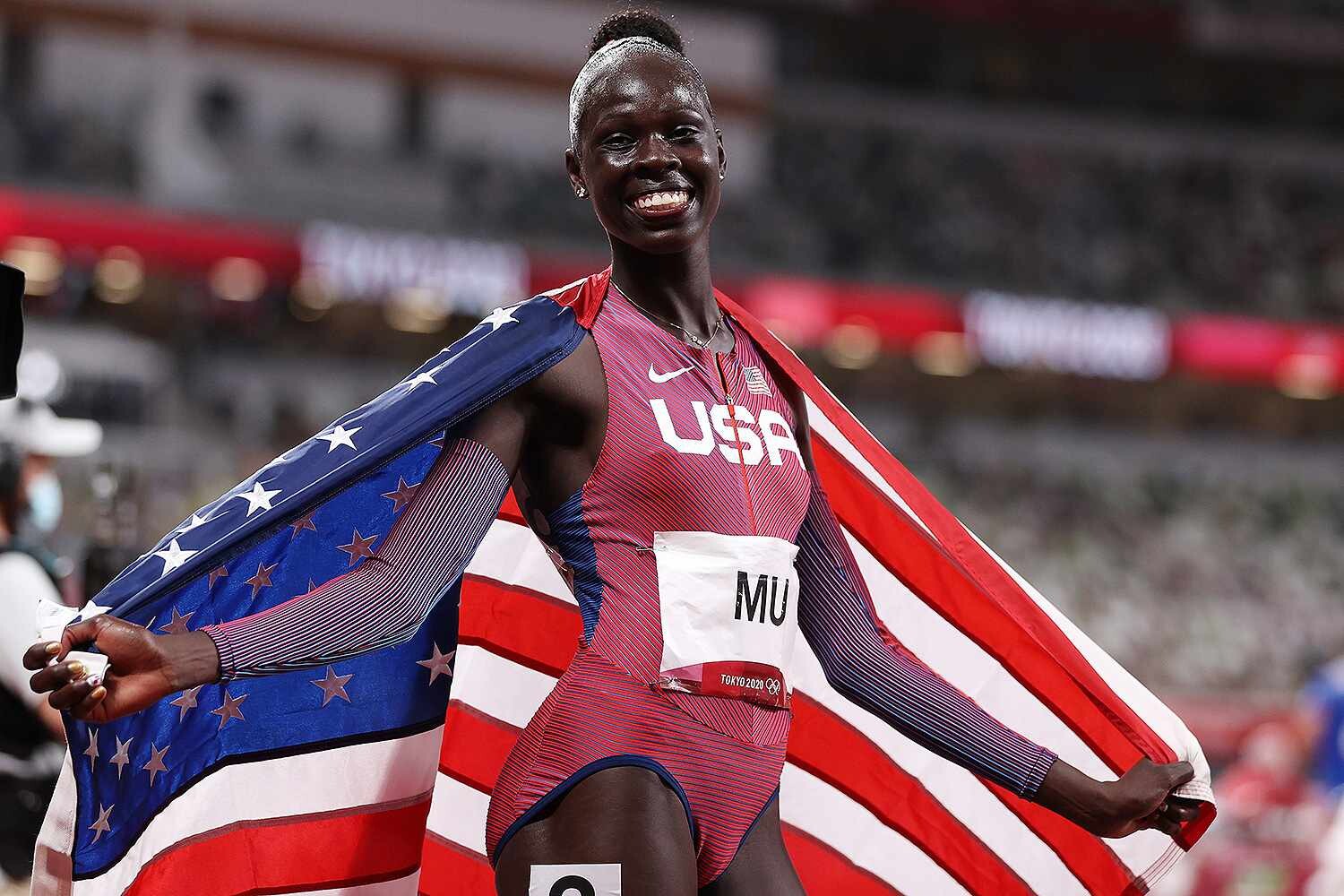
Just because Mu is on the start list does not guarantee that she is competing. She was supposed to run the Millrose Games in February but withdrew the week of the meet. She was listed among the entrants at the Music City Track Carnival in June — something she claimed to have no knowledge of — but did not compete there and also withdrew from the Ed Murphey Classic in August.
Furthermore, it’s not as if Mu’s name just showed up on the start list. Mu has competed in just three meets in 2023, none of them Diamond Leagues, meaning she did not qualify for the Diamond League final. The only way she could have been granted a lane is by wild card — the US, as host country, gets one bonus entry in every event, determined by the meet director. If Mu was not going to take her spot, Prefontaine meet directors Michael Reilly and John Capriotti would have found another American to use the wild card rather than waste it on Mu.
All of this suddenly makes the women’s 800 one of the most compelling events of the meet. The last two Mu-Hodgkinson-Moraa matchups — the 2022 and 2023 world finals — were both fantastic races. Now we get to see how Mu will respond to her third-place finish in Budapest — the first 800-meter defeat of her professional career. And American fans will get to see Mu once more this season in just the third Diamond League appearance of her life. The first two went pretty well: in her DL debut at the 2021 Pre Classic, Mu set an American record of 1:55.04. In DL #2 in Rome last year, Mu won in 1:57.01, more than two seconds up on Moraa.
How will she fare in #3? If all goes to plan, we won’t have to wait long to find out.
(09/13/2023) ⚡AMPby Jonathan Gault
Prefontaine Classic
The Pre Classic, part of the Diamond League series of international meets featuring Olympic-level athletes, is scheduled to be held at the new Hayward Field in Eugene. The Prefontaine Classicis the longest-running outdoor invitational track & field meet in America and is part of the elite Wanda Diamond League of meets held worldwide annually. The Pre Classic’s results score has...
more...No rest for talented Daniel Simiu as he heads to Delhi Half Marathon
World 10,000m silver medalist Daniel Simiu is not resting on his laurels as he eyes more victory at the Vedanta Delhi Half Marathon scheduled for October 15.
Simiu headlines the men’s field with a Personal Best time of 59:04 and is closely followed by compatriot Leonard Barsoton who has a PB time of 59:09. The third fastest in the field is Isaac Kipkemboi with a PB time of 59:17.
The 27-year-old has had a fair season thus far that even saw him bag his first medal at the World Championships. After his exploits in the Hungarian capital, Simiu competed at the Diamond League Meeting in Brussels where he set a Personal Best time of 26:57.80 to win the race.
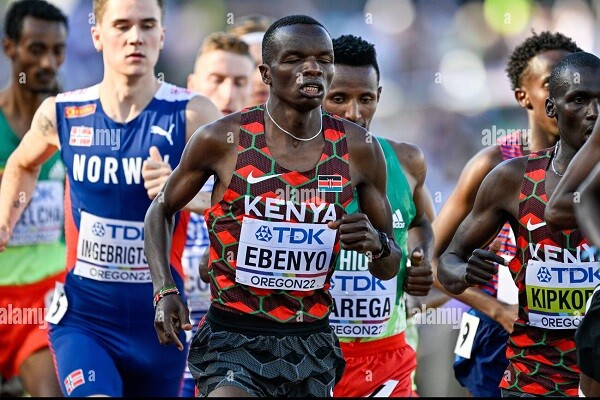
He has also been selected for the team representing the country at the World Road Running Championships in Riga, Latvia starting October 1.
Simiu will be seeking victory in the Half Marathon alongside Benard Kibet, Charles Kipkirui Langat, Samwel Nyamai Mailu, and Sabastian Kimaru Sawe.
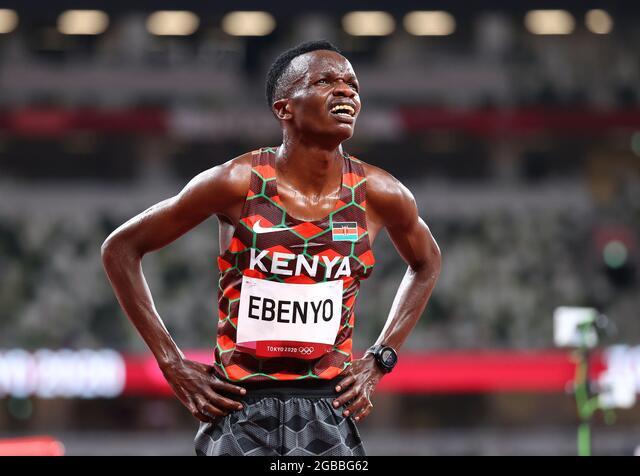
In the women’s race, Almaz Ayana headlines the field with her impressive time of 65:30. She has not had a busy season this year since she started off with a win at the Lisboa Half Marathon.
She then proceeded to the London Marathon where she finished seventh and has not raced since then. She will be hoping to mark another victory as she heads to India.
She will enjoy the company of her compatriot Betelihem Afenigus who is the second fastest in the field with a PB time of 66:46. Viola Chepngeno completes the top three list with a PB time of 66:48.
(09/13/2023) ⚡AMPby Abigael Wuafula
Vedanta Delhi Half Marathon
The Airtel Delhi Half Marathon is a haven for runners, creating an experience, that our citizens had never envisaged. The streets of Delhi converted to a world-class running track. Clean, sanitized road for 21.09 kms, exhaustive medical support system on the route, timing chip for runners, qualified personnel to ensure smooth conduct of the event across departments. The race...
more...Nail your race pace with these tips
Every runner has been there: you’ve trained for months. You’ve practiced your goal race pace so many times that you’ve become a human metronome. You’re sure you’re going to crush your personal best, until the excitement of race day gets to you and you go out way too fast. There are a lot of variables on race day that can prevent you from nailing your race pace. Use these tips to help you adapt, stay focused and cruise across the finish line with a shiny new PB.
Pick a pace that makes sense
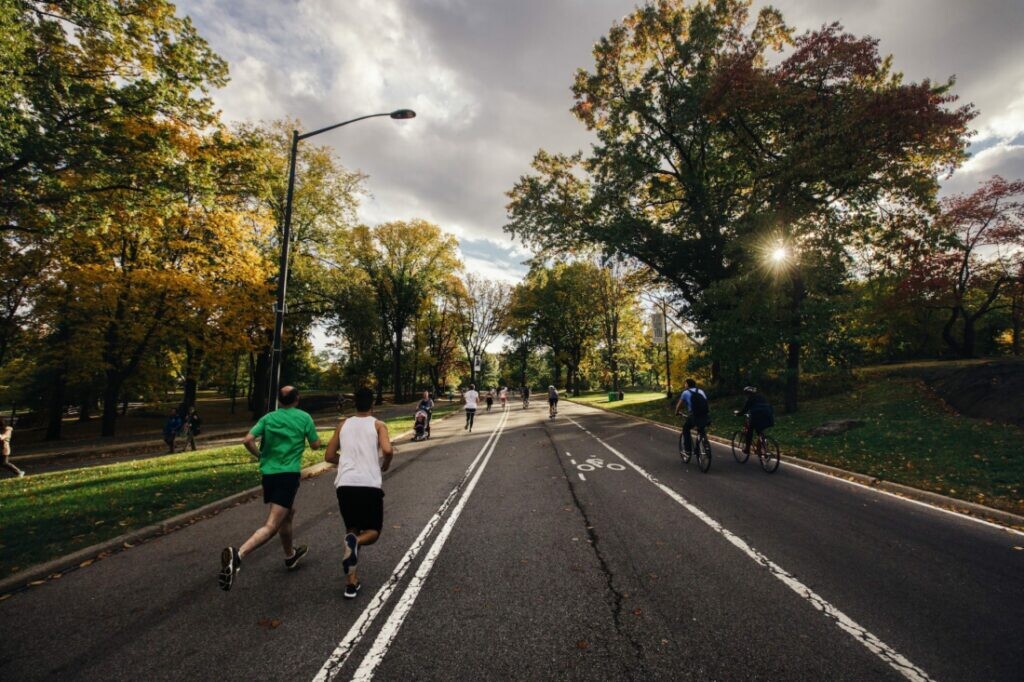
Nailing your race pace starts with choosing a pace that makes sense for your experience and fitness level. It’s great if you want to run a sub-20 5K, but if your current fastest 5K time is 30 minutes, it doesn’t make sense to try hitting a four-minute kilometer. Use past race results (or previous workouts, if this is your first race) to determine a goal time that makes sense, and base your pace per kilometer on that. If you don’t feel like doing math, you can simply plug your goal time into a pace calculator (there are plenty of free calculators available online) and it’ll spit out the splits you need to hit to achieve that goal.
Give yourself a range
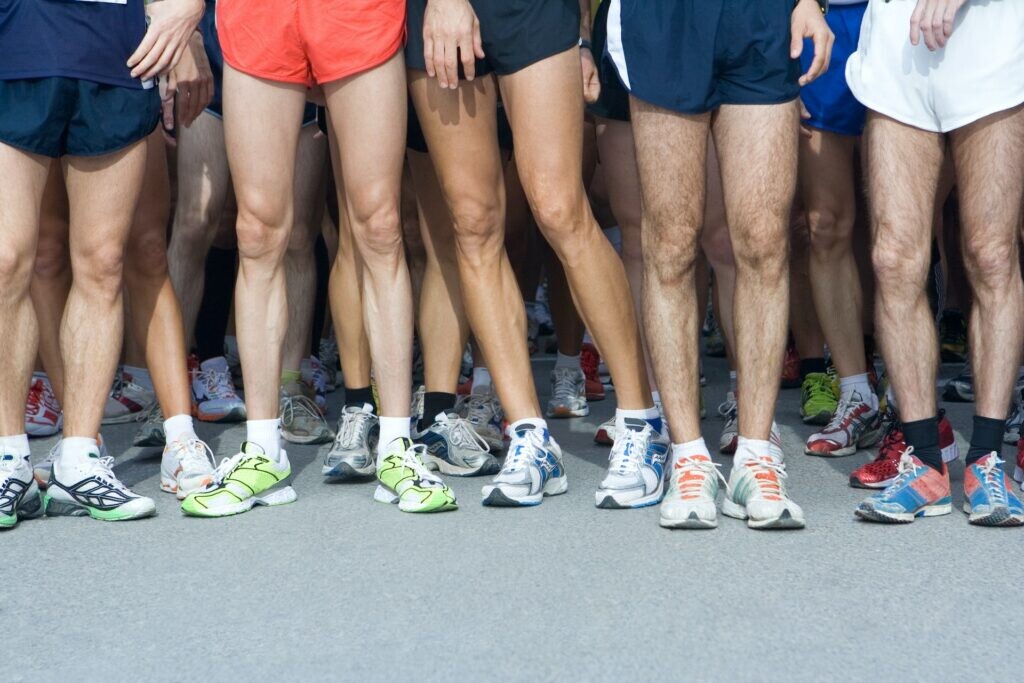
Very few people are able to achieve true metronome-like consistency. Since it’s unlikely you’ll run exactly the same pace for every kilometer, give yourself a range, so you don’t panic if you run one kilometer a little faster and one a little slower.
Modify your expectations based on the conditions
If your goal race is very hilly, you should factor that in when determining your pace. This is where having a pace range can come in handy–it’s unfair to expect yourself to run just as fast on a massive hill as you do on the flats.
Adjust based on feel
True pacing masters are skilled at adjusting their pace depending on how they feel on race day. If they get halfway through the race and are feeling strong, they may decide to dial things up a bit and crank up the pace. If they’re not feeling so hot, they may decide to focus on effort, and forget pace altogether. Remember that racing isn’t only about getting new personal bests–it’s about getting the most out of yourself on the day.
Choose your spot on the start line wisely
Unless you are planning on being one of the first runners to cross the finish line, avoid lining up at the front of the pack. Some larger races will place you in a corral based on your projected finish time, but if they don’t, choose your spot wisely to avoid getting caught up by faster runners and starting out way too fast. Likewise, if you’re a faster runner, try to position yourself so you won’t get caught behind slower runners and end up having to make up ground later.
Take the pressure off
It’s easy to get nervous or stressed about having to hit your goal pace. Remember that the only person who truly cares about your finish time is you, so take the pressure off. Your friends, family and running buddies will be proud of you regardless of your result, and added pressure only limits performance.
(09/13/2023) ⚡AMPby Brittany Hambleton






